Where is Samburu national park situated?
Samburu National park is situated along the Ewaso Nyiro River at the southeastern corner of the Samburu District in the Northern part of Kenya. It is one of the most popular national reserves in Kenya regardless of its small natural size.
How big is Samburu national park?
The park is one of the smallest national parks in the country. It covers about 165 square kilometres of the total surface land area.
What makes Samburu national park unique?
The popular Ewaso River on the border separates Samburu with the Buffaloes Spring National Reserve. Samburu National Park is one of the under-utilized and less visited national parks in the country. It still remains popular in the northern part of Kenya due to its wilderness experience.
The park’s proximity to the Ewaso River is better and has since provided drinking water to the wildlife of Samburu.
Cultural encounters in Samburu national park.
The park acts as a traditional homeland for the indigenous Samburu people whose villages border the reserve. The magnificent River of Ewaso provides drinking water to these animal herds.
Samburu national park famous story
Samburu National Reserve is also uniquely famous as once a home for another renowned lioness. It is known as Kamunyak ( blessed one ) who was popular for having adopted about 6 oryx calves. She fought off predators who were a threat to its young orphans as seen in the “Heart of the lioness” film.
The book and movie “Born Free” also originated from this particular national reserve. It tells a story about “Elisa the lioness” who was nurtured and raised by Joy Adamson.
WHAT TO SEE IN SAMBURU NATIONAL PARK?
The magnificent park is popular for its rich wildlife in rare northern specialist species. They are known as the Samburu special 5 and these include the Beisa Oryx, Somali Ostrich, Reticulated giraffe, Grevy Zebra, and Gerenuk. The Samburu bird life is exceptional and the park attracts about 450 different bird species. These include taita falcon, lesser kestrei and vulturine guinea fowls.
Other bird species in this national reserve may include falcon, eagle, egret and Somali ostrich.
Animals in Samburu national park
Herds of elephants of about 900 in number can also be sighted while at Samburu. Wild dogs, lions and leopards can also be seen in the park. The national reserve also shelters the critically endangered pancake tortoise known as Malacochersus tornier.
TOUR ACTIVITIES IN SAMBURU NATIONAL PARK
Game viewing
Samburu’s climate and geography favor a lot of wildlife. Especially during the dry months of the year. Game drives in this national reserve are done in 3 sessions. Depending on the visitors’ choice, one may opt for the Morning session, afternoon session or night session.
The night session will enable visitors to have a rare chance of encountering nocturnal mammal species.
Big five mammals including buffaloes, rhinos, elephants, leopards and lions can be spotted during the game drives in Samburu.
Cultural visits to the Samburu people
This is one of the breathtaking experiences while at Samburu National Reserve. The Samburu people settles on the boarders of the national reserve. While at Samburu, visitors can visit their traditional homes also known as “Manyatta”. They are dominated by historical rock art and also learn about their lifestyle. The Samburu people are believed to the the cousins of the Masaai people.
Bird watching at Samburu
Samburu national reserve is one of the best birding destinations in Kenya and several bird species can be sighted including the Egyptian vulture, white-headed mouse bird, kori bustards, falcon, eagles, egret, to mention but a few. There are about 450 different bird species recorded in the park.
BEST TIME TO VISIT SAMBURU NATIONAL PARK
Even though the iconic Samburu can be visited throughout the whole year, the dry season of the year remains a great time for all tourism activities in the park. These thrilling activities may include game viewing, hiking safaris, nature-guided walks and more.
The dry period of December to March and July to October is when the lush vegetation dries out hence providing spectacular views of the Samburu’s exceptional wildlife.The trails are also easily accessible during this particular period and unlike the wet season when they are muddy and slippery, hence making certain tourism activities like nature walks, game driving more challenging.
Why should you visit Tanzania during the dry season?
It is during the dry season that wildlife in Samburu tend to congregate on the only remaining water source of River Ewaso for drinking water hence offering visitors clear views of the wildlife of Samburu National Reserve. GET A FREE QUOTE NOW

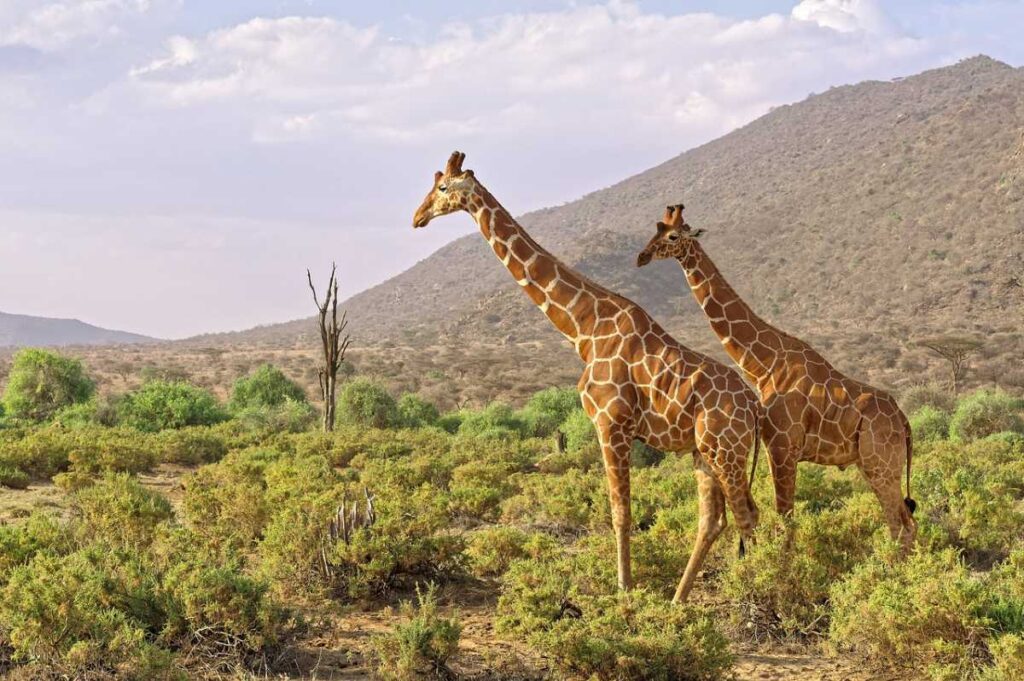

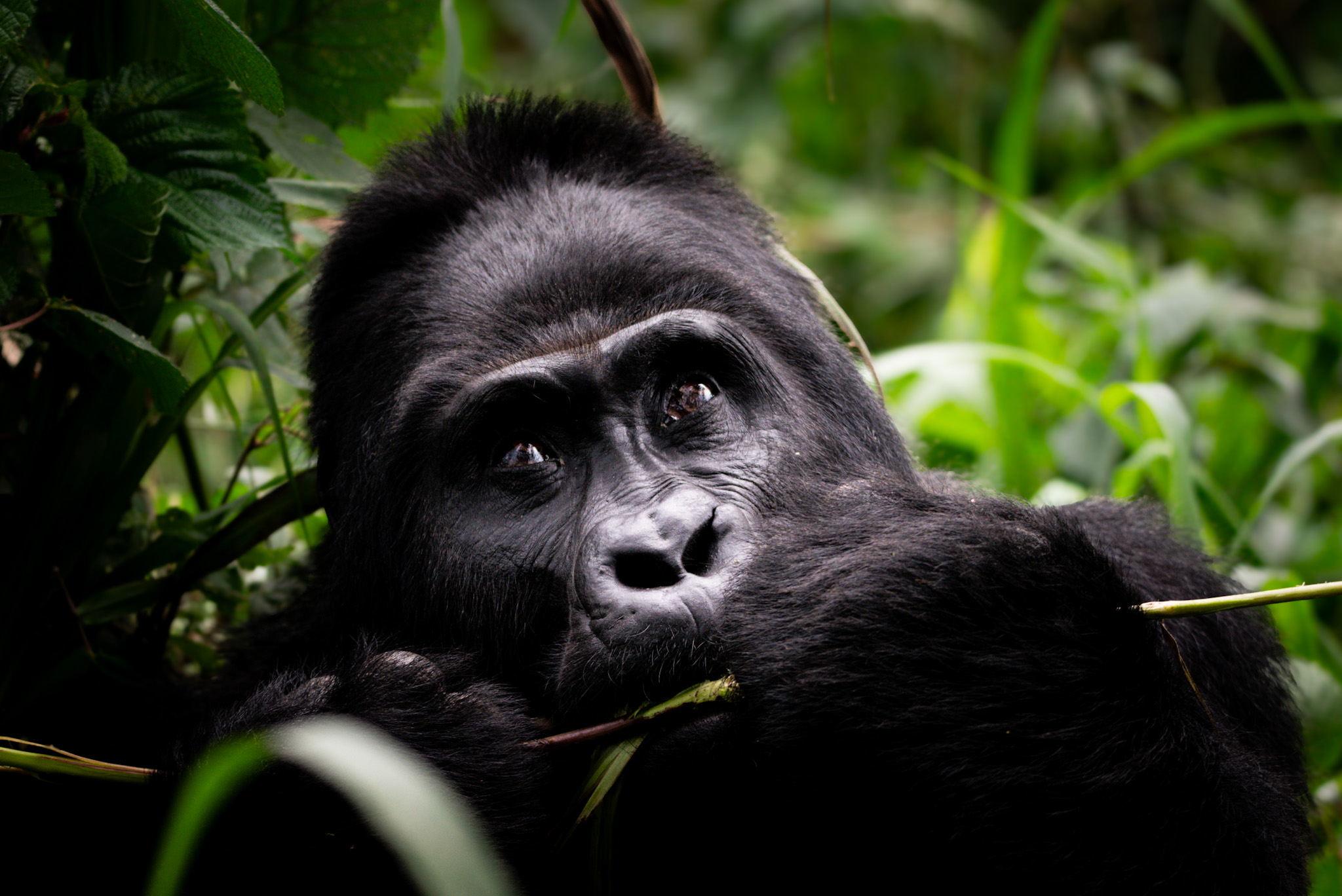
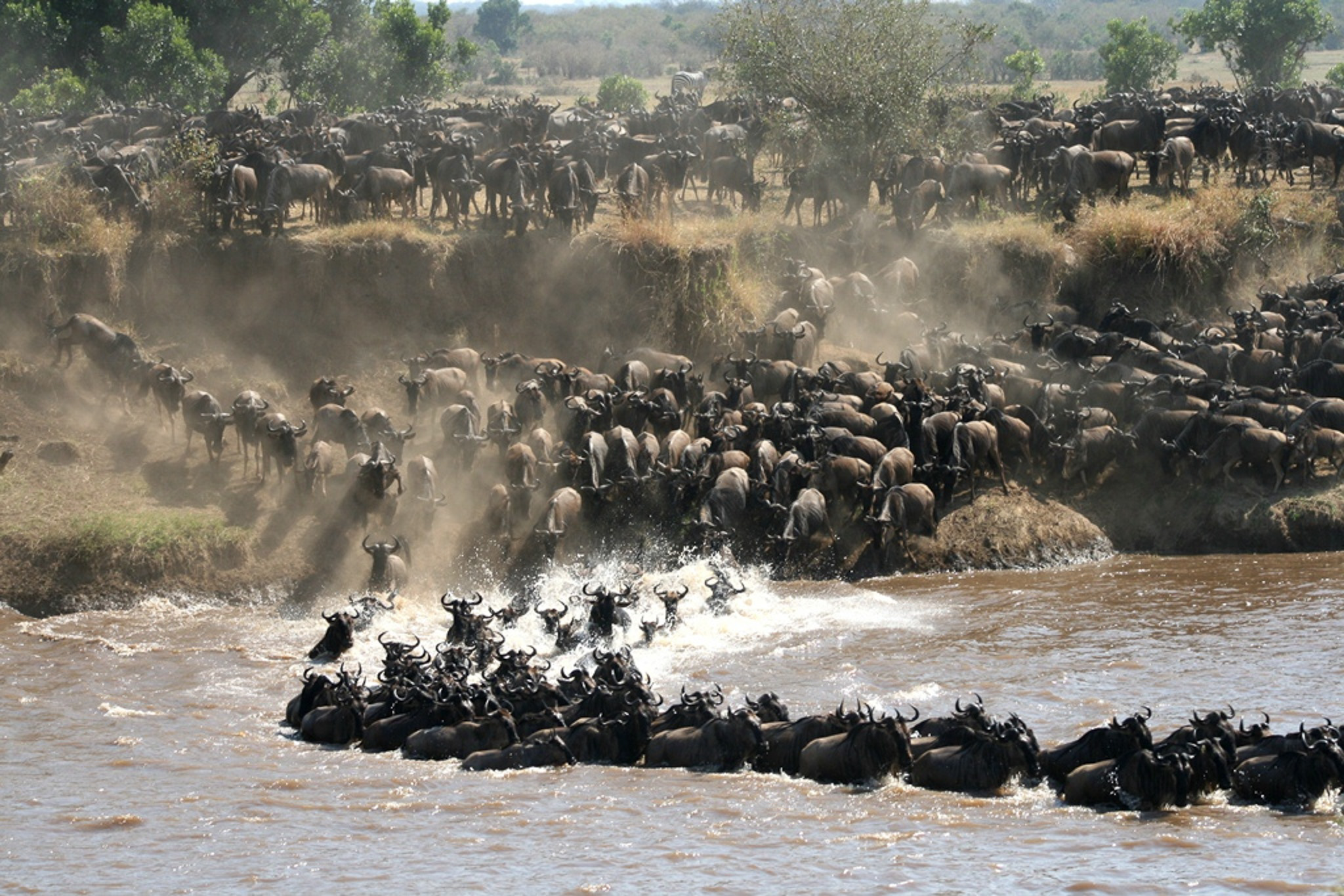
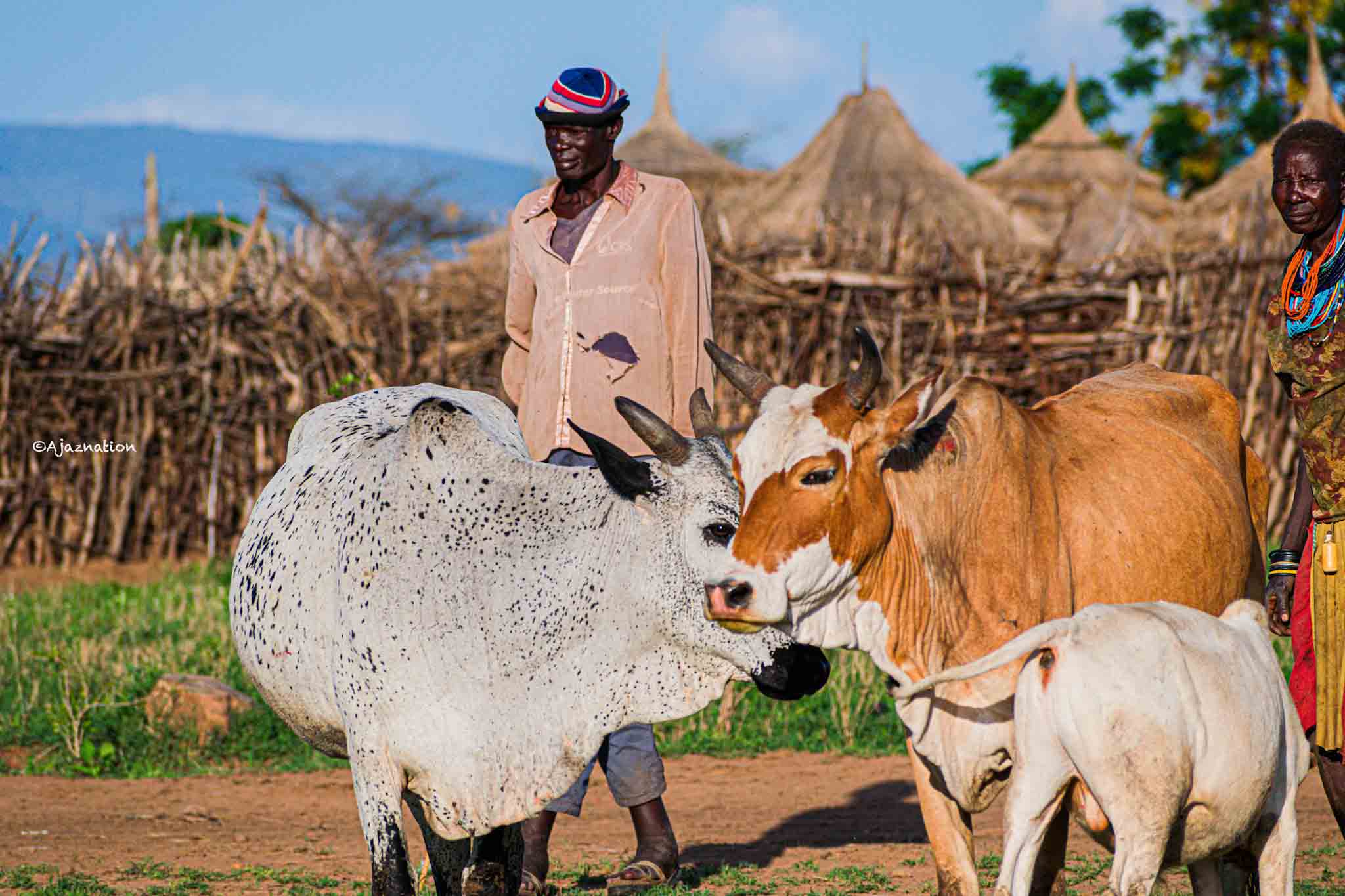





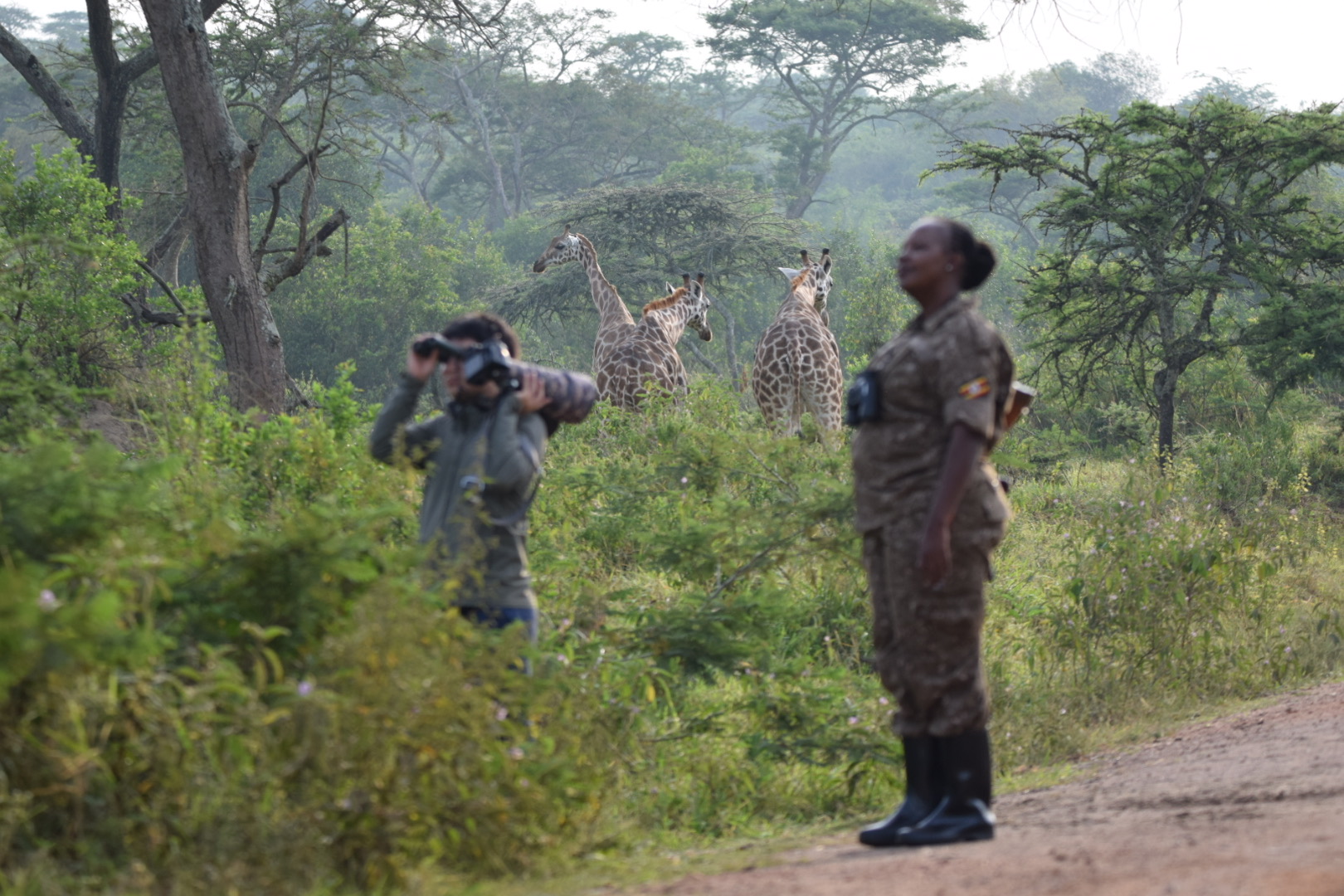
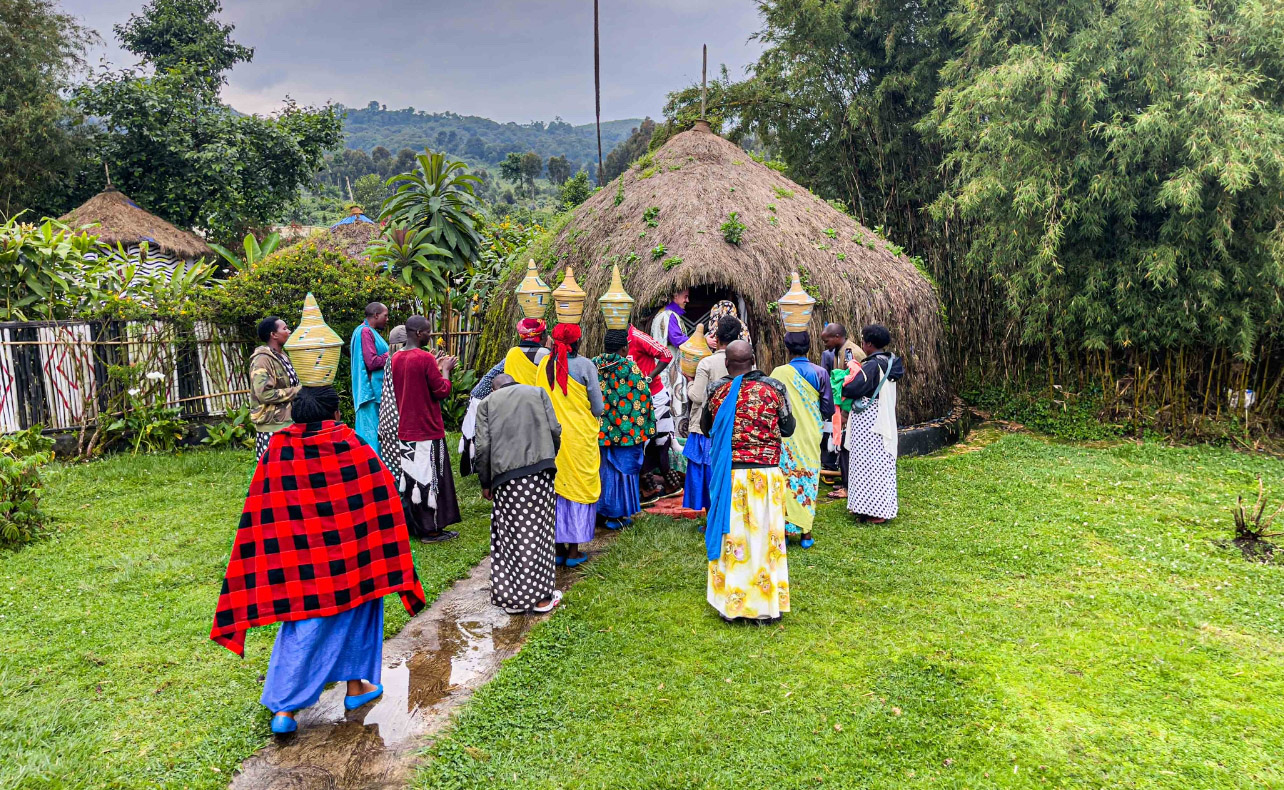


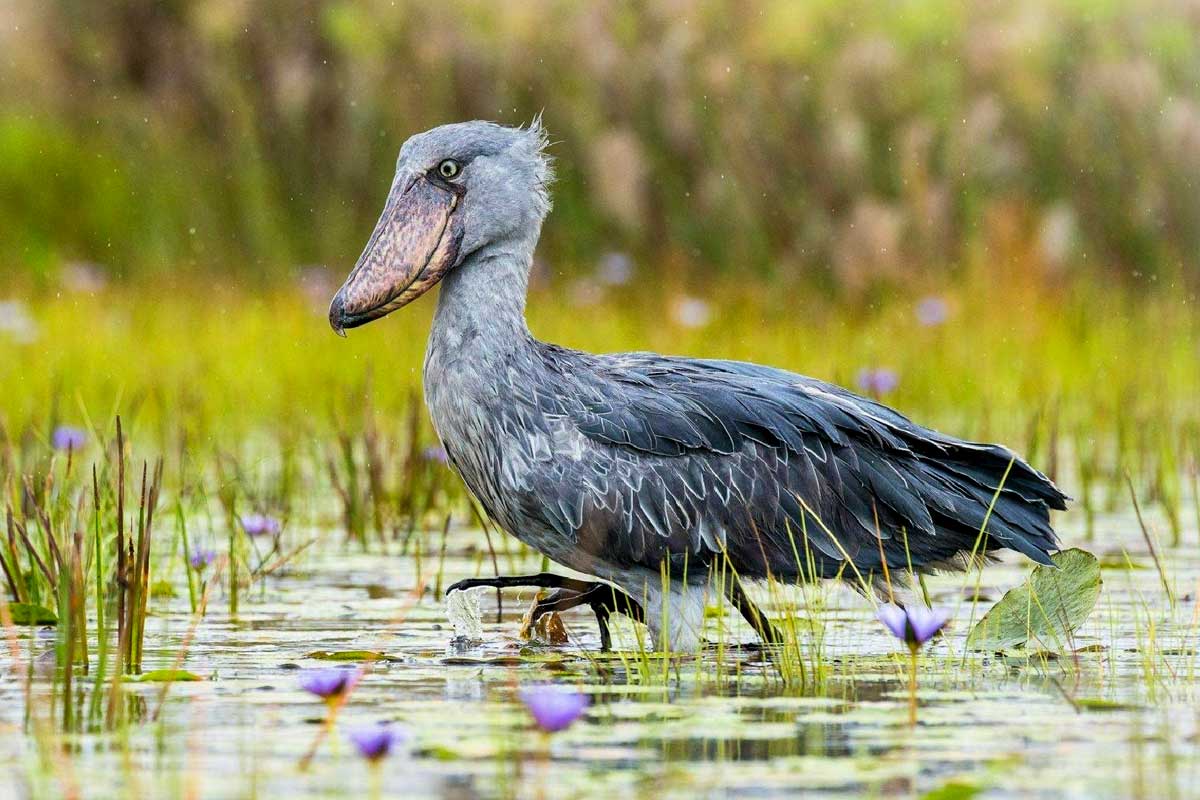
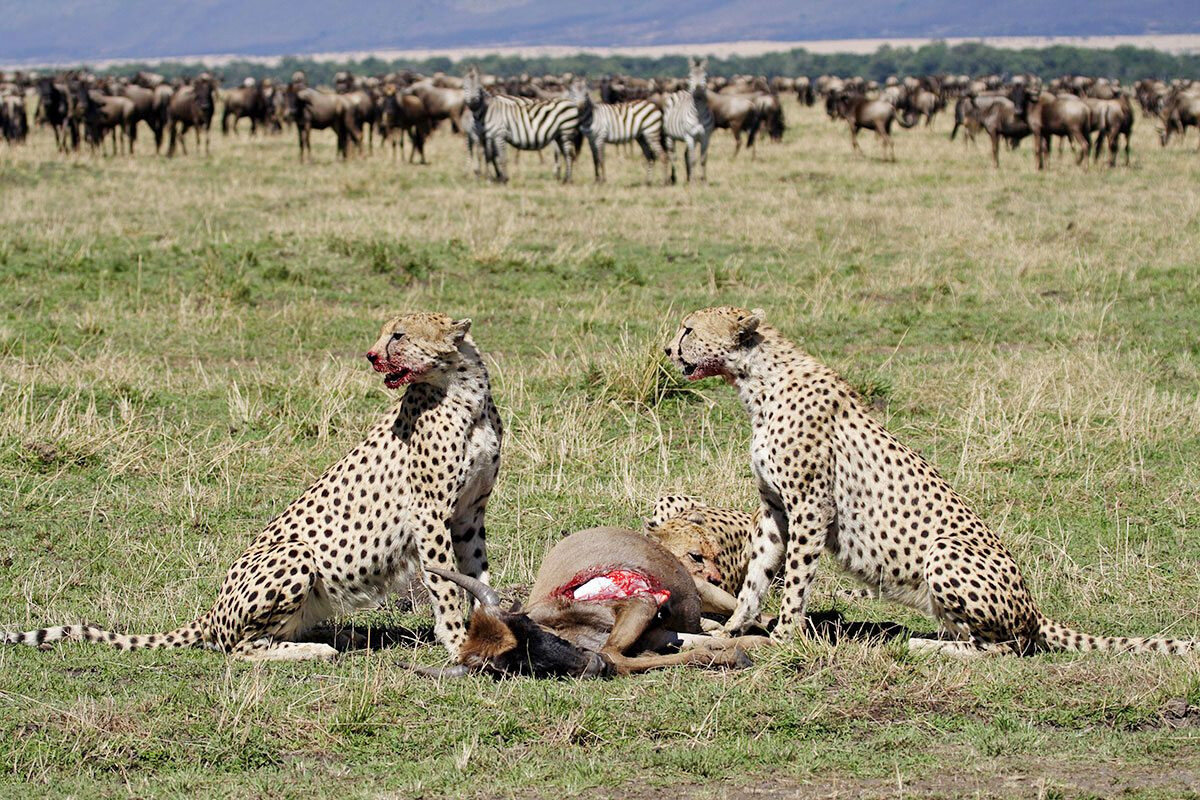


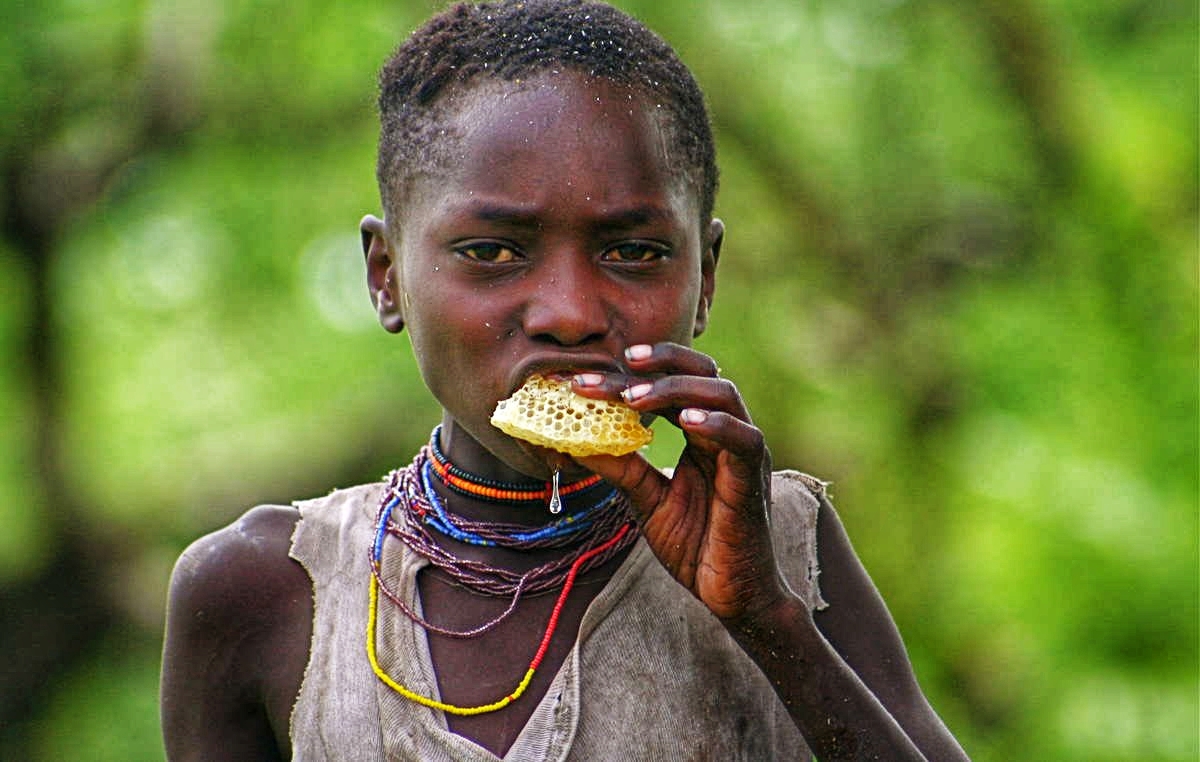
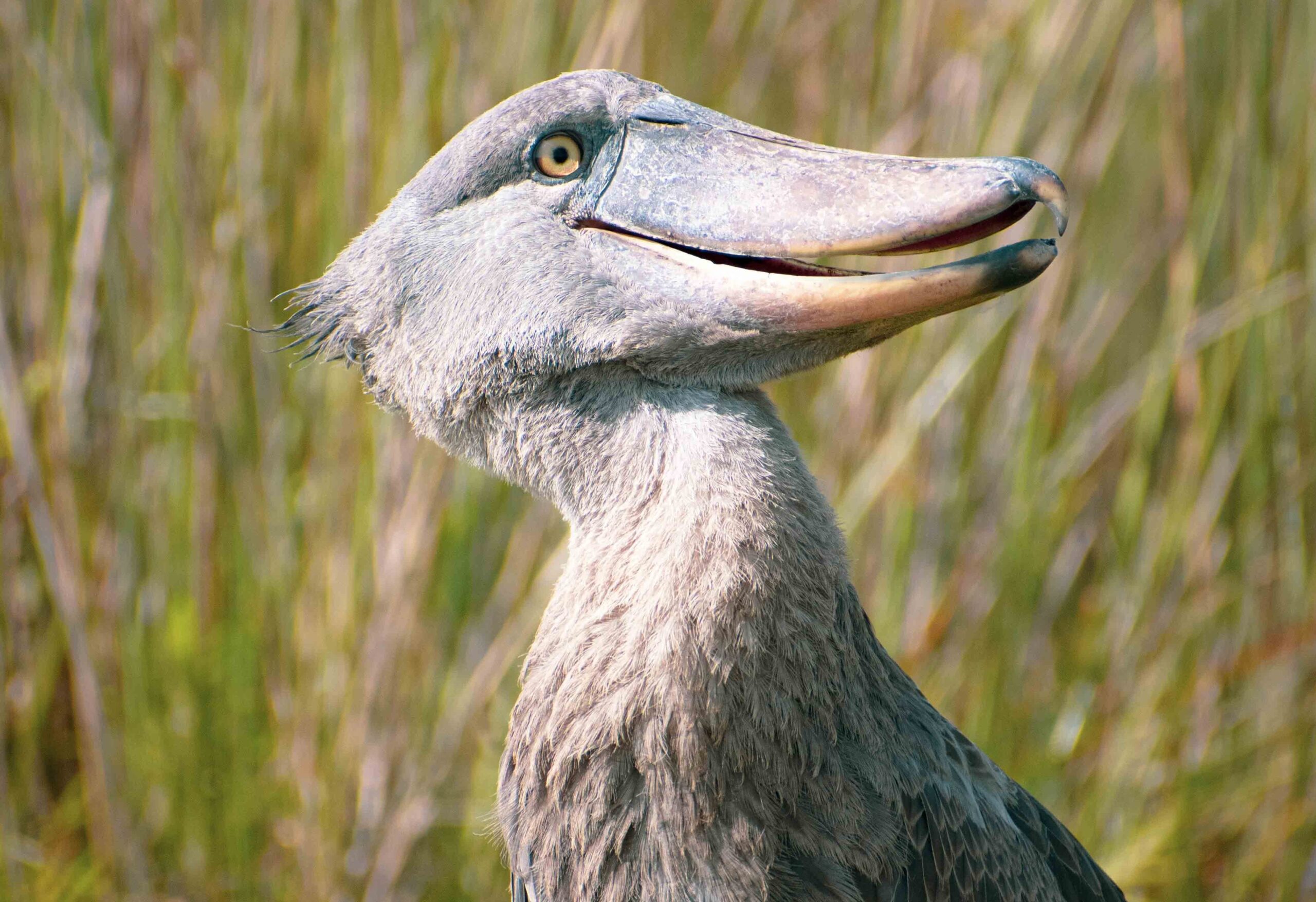
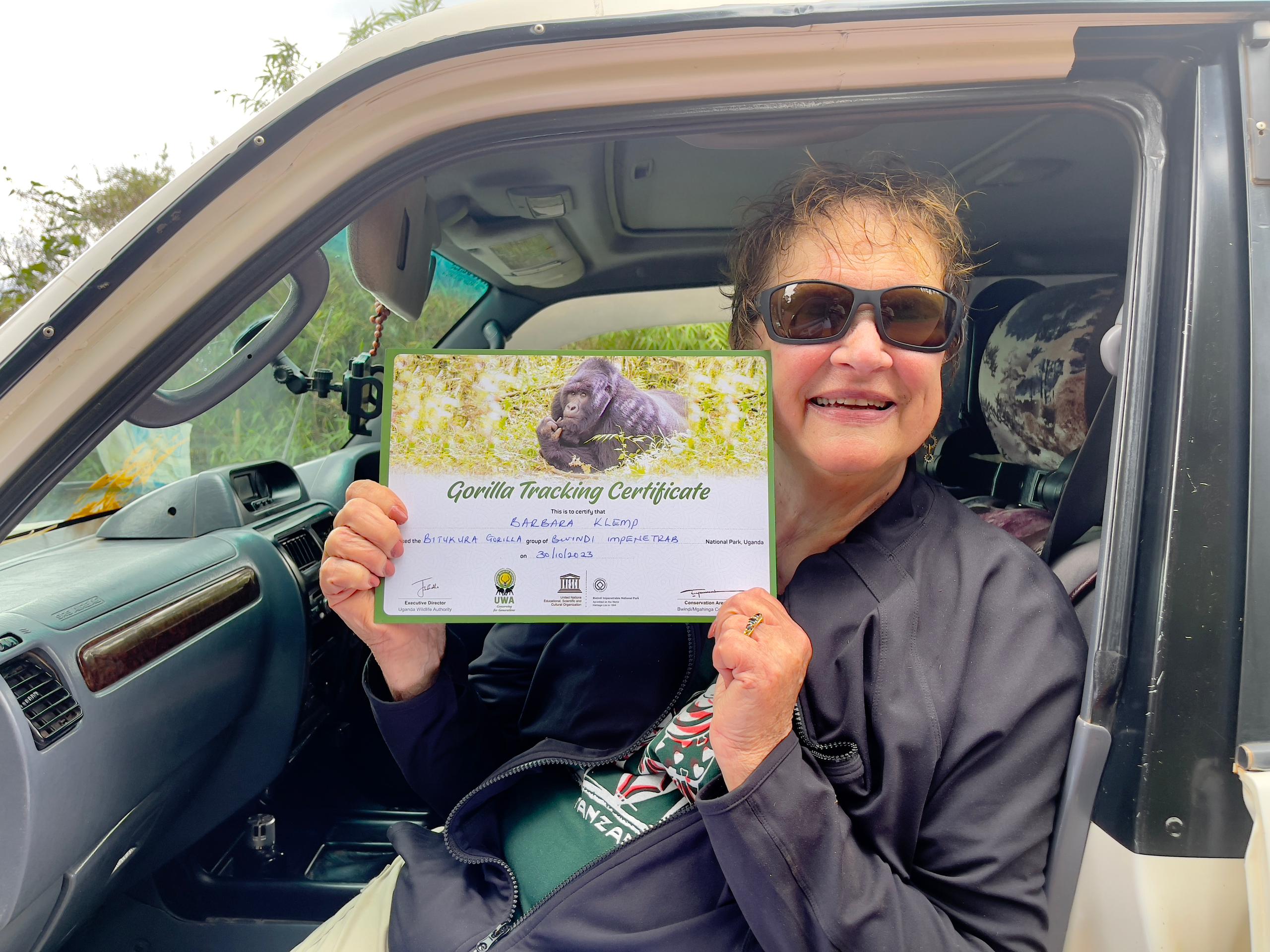
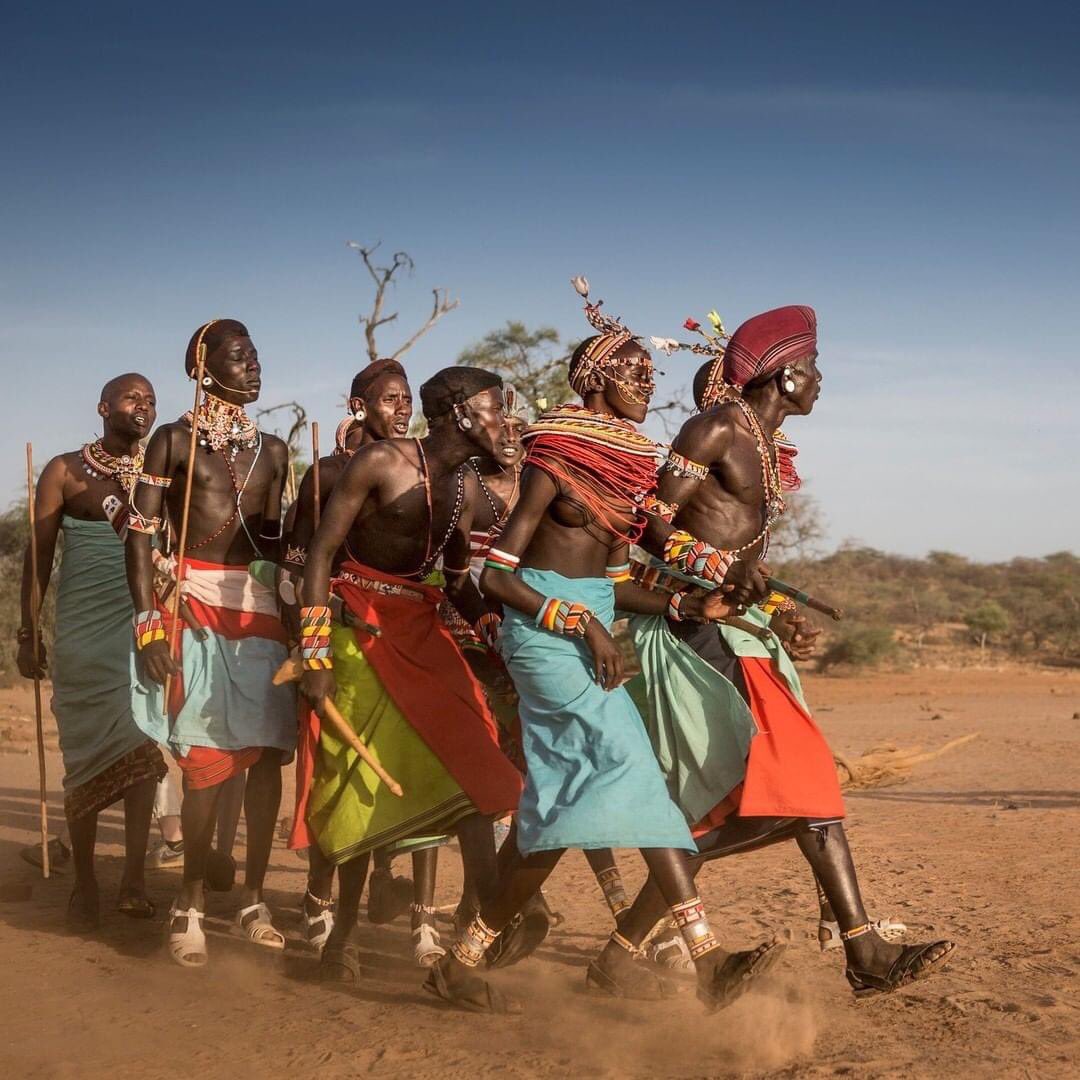
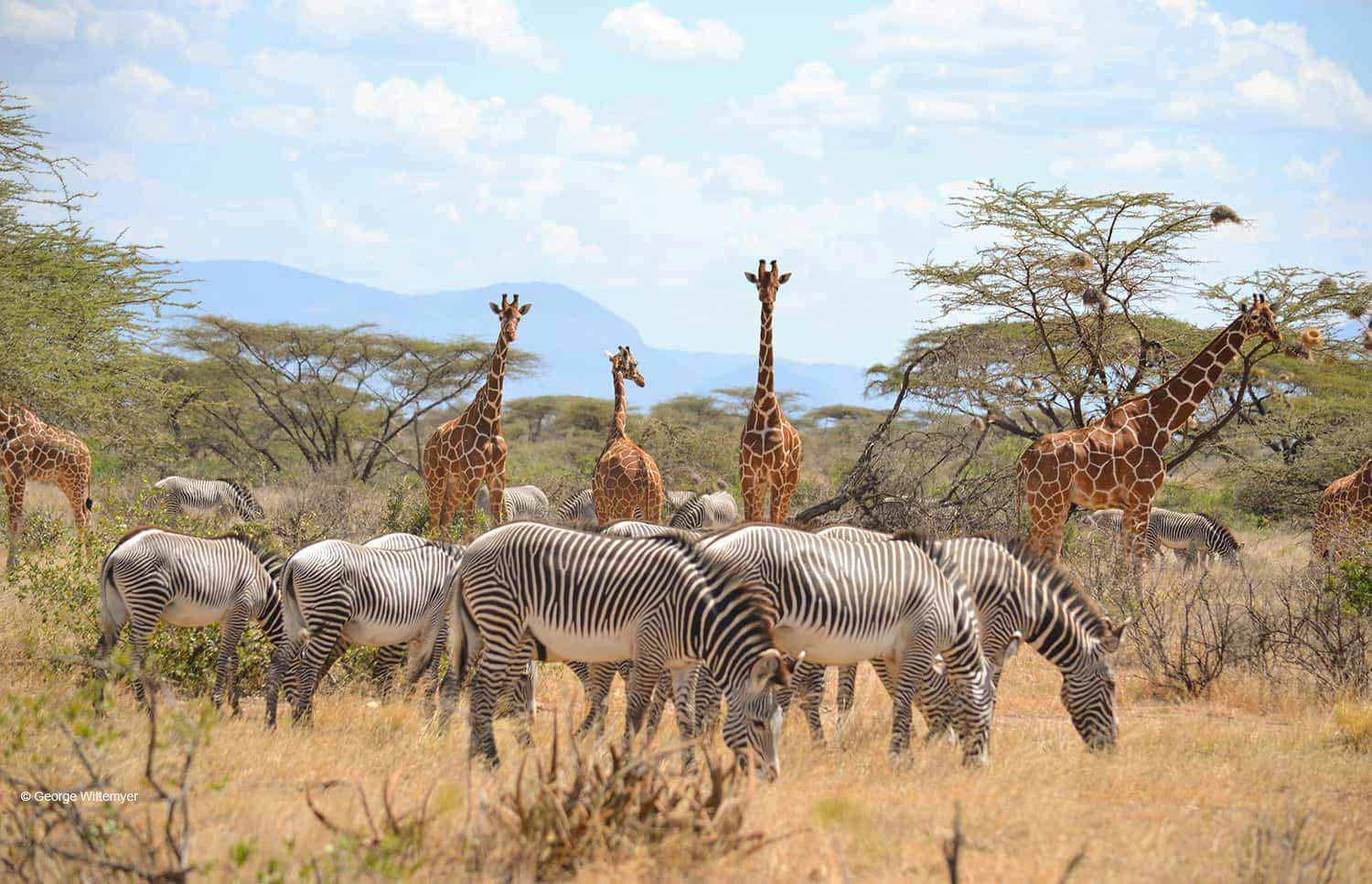
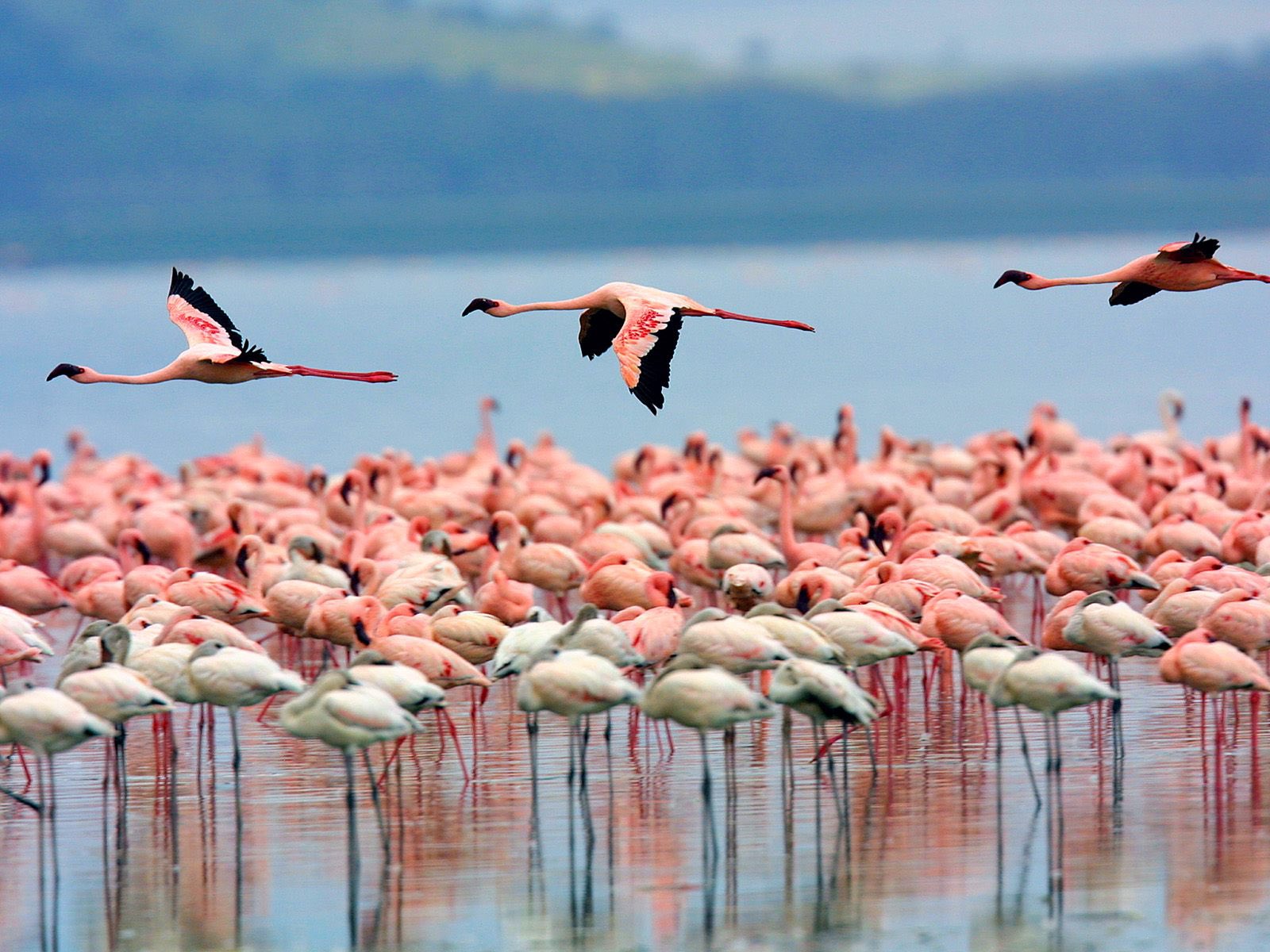
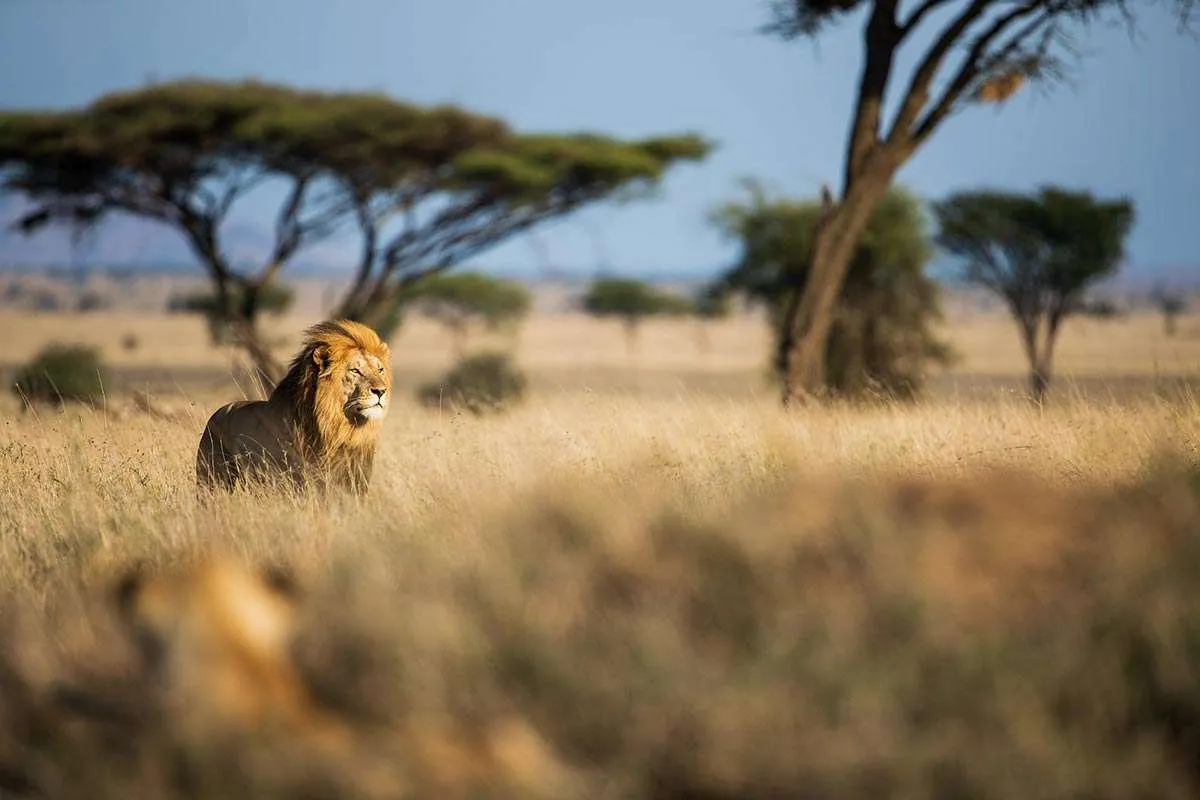
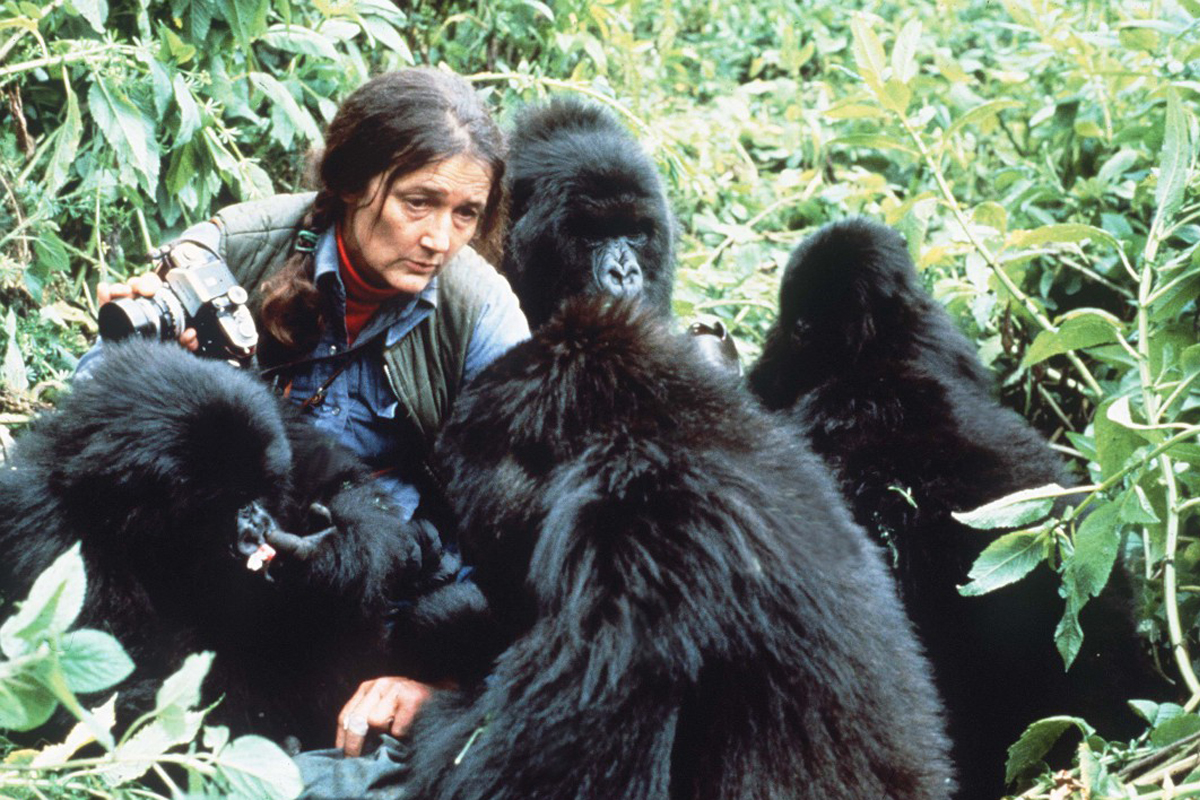
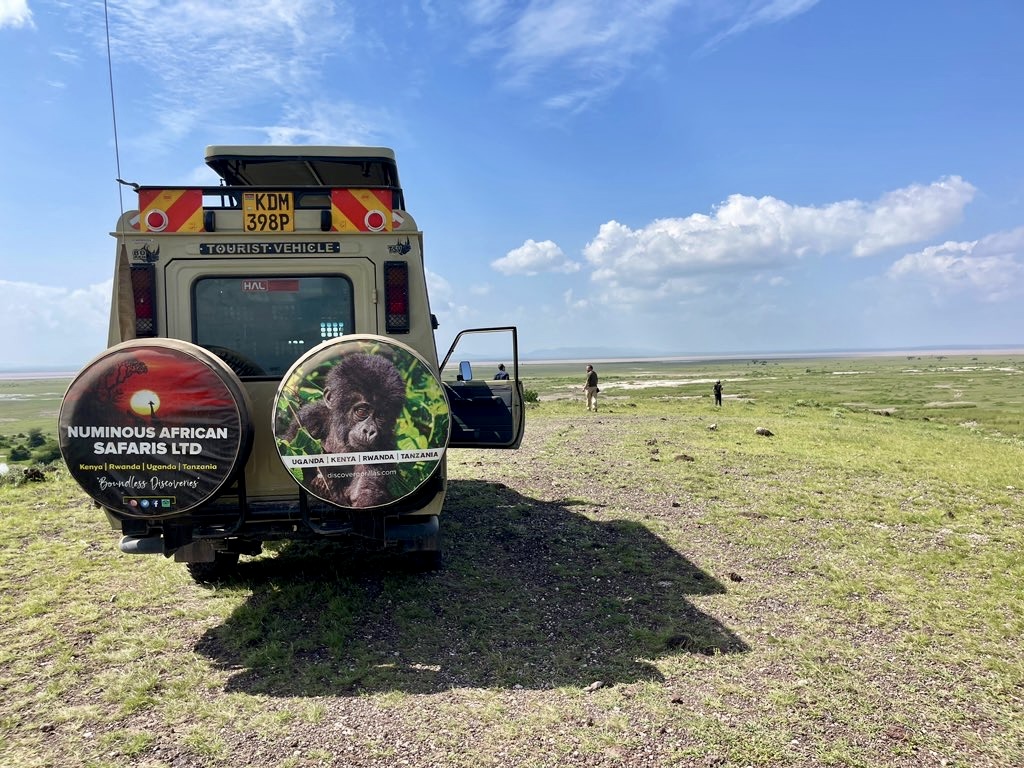
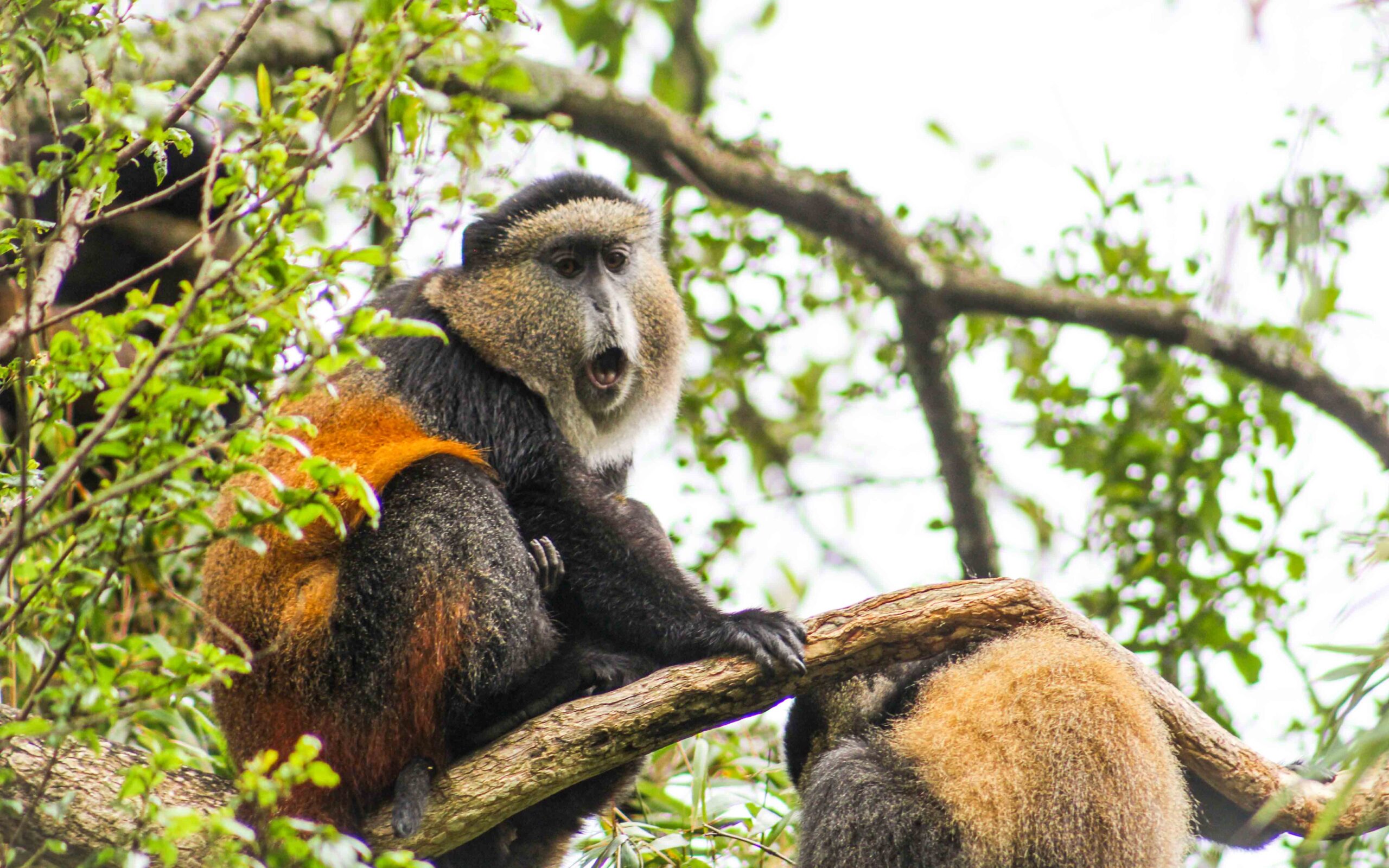
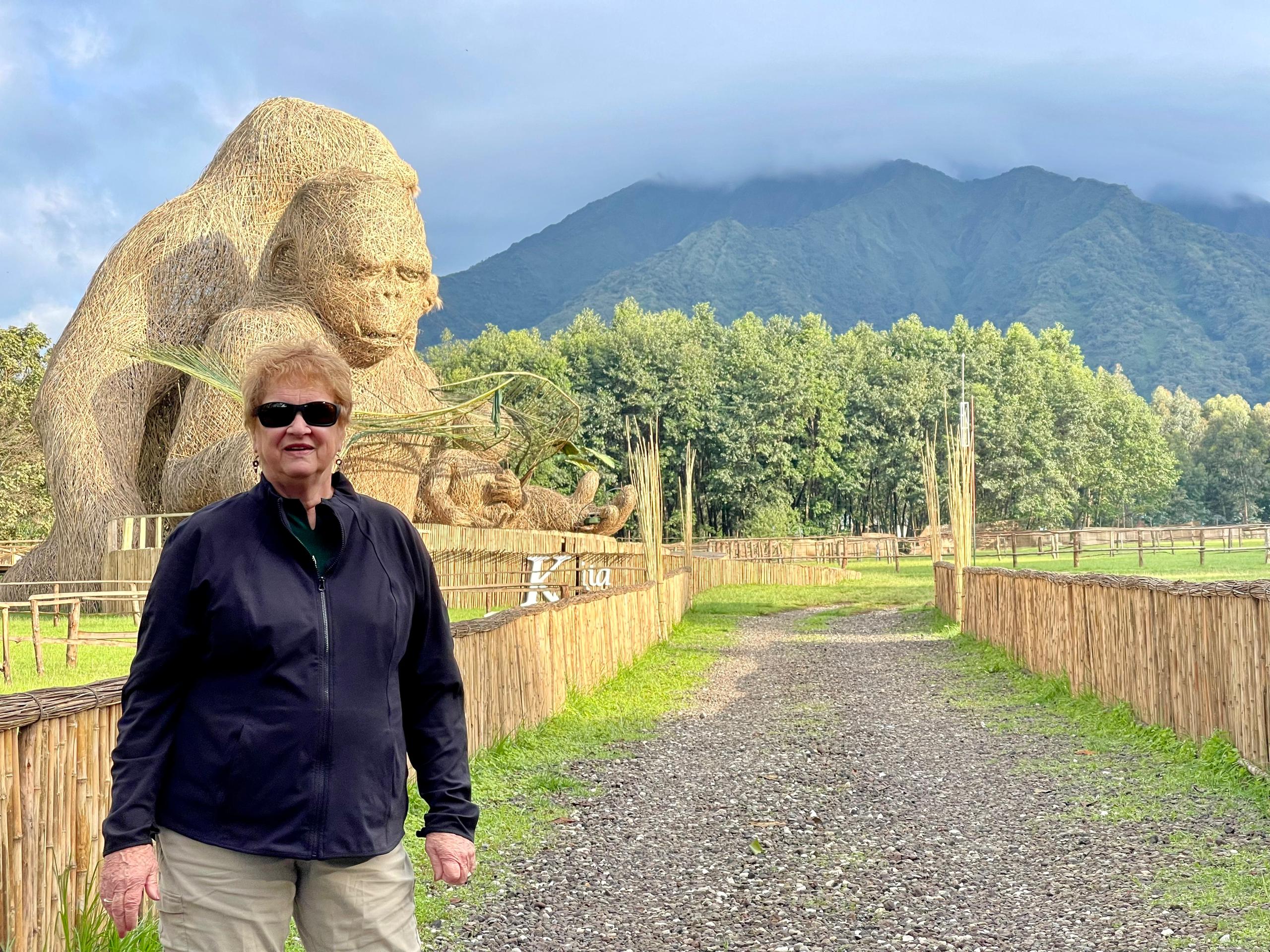
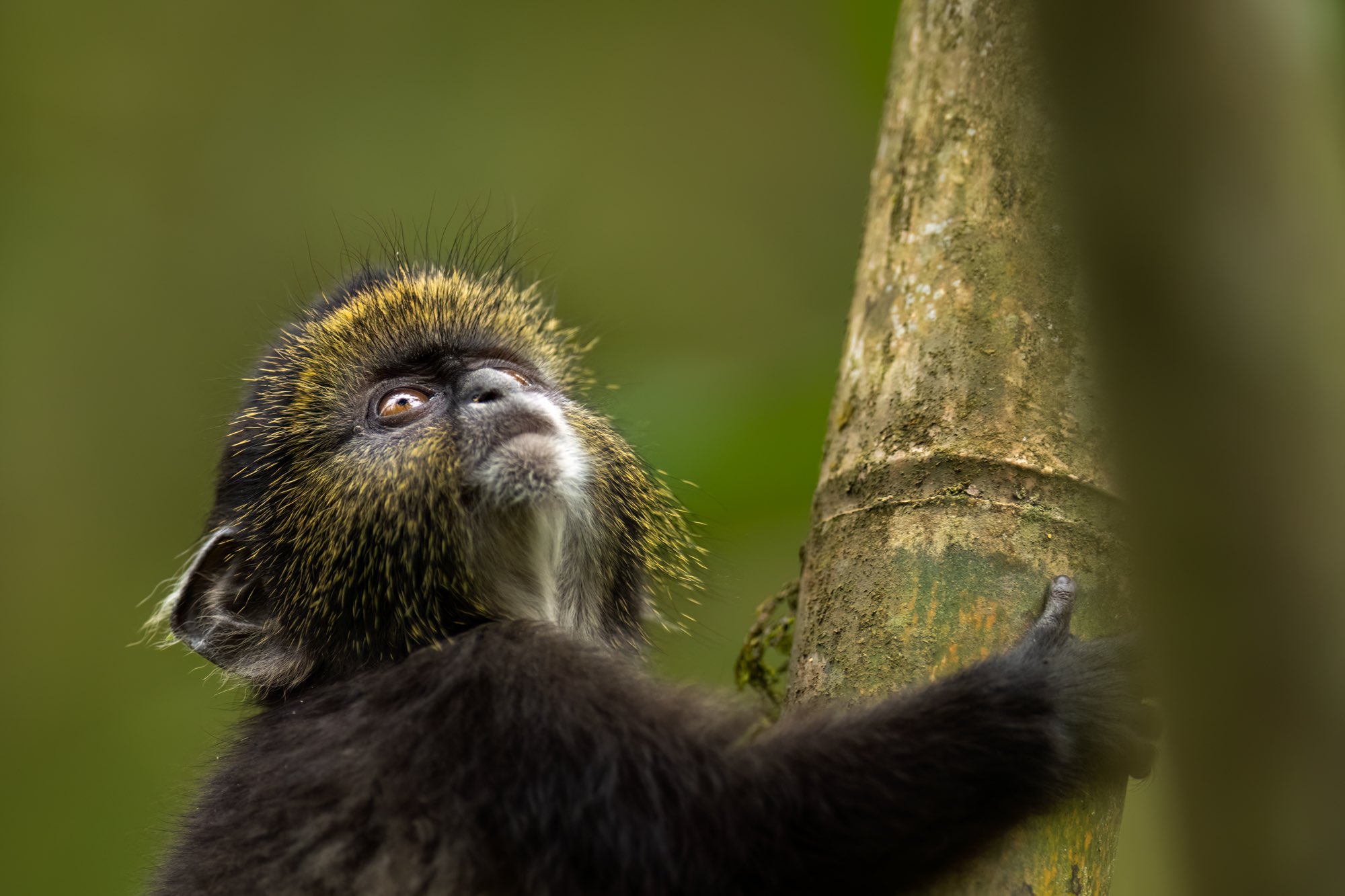
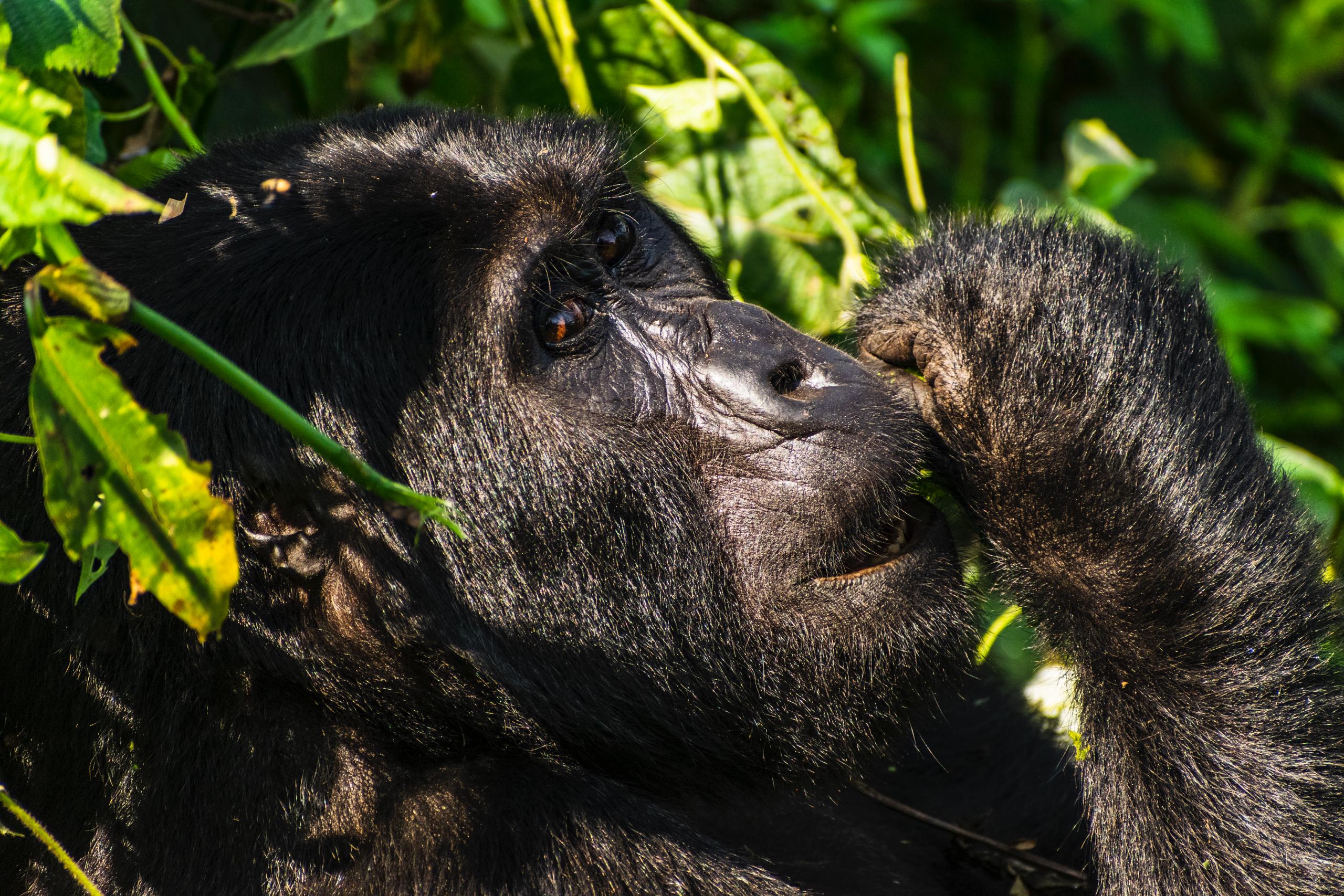

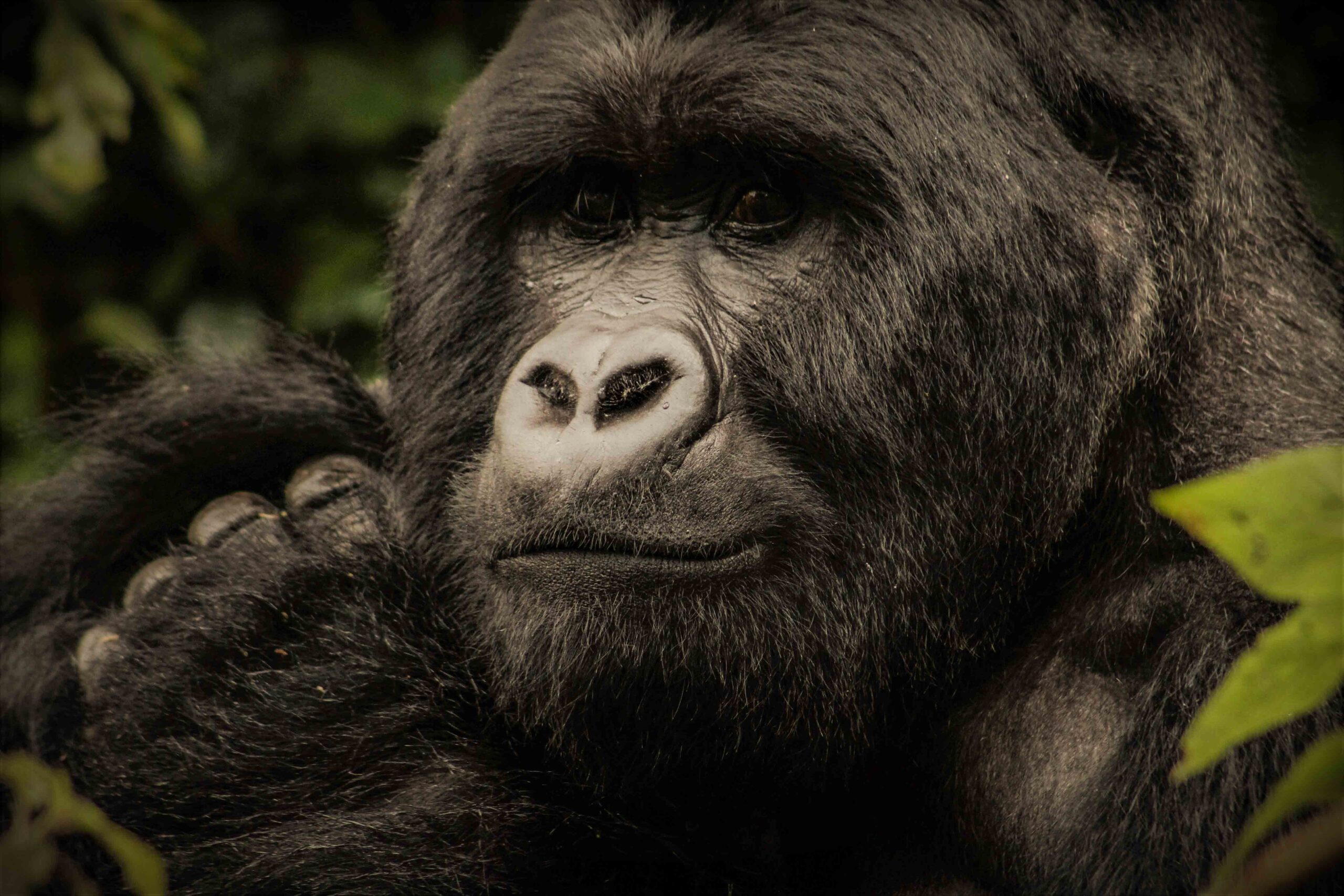
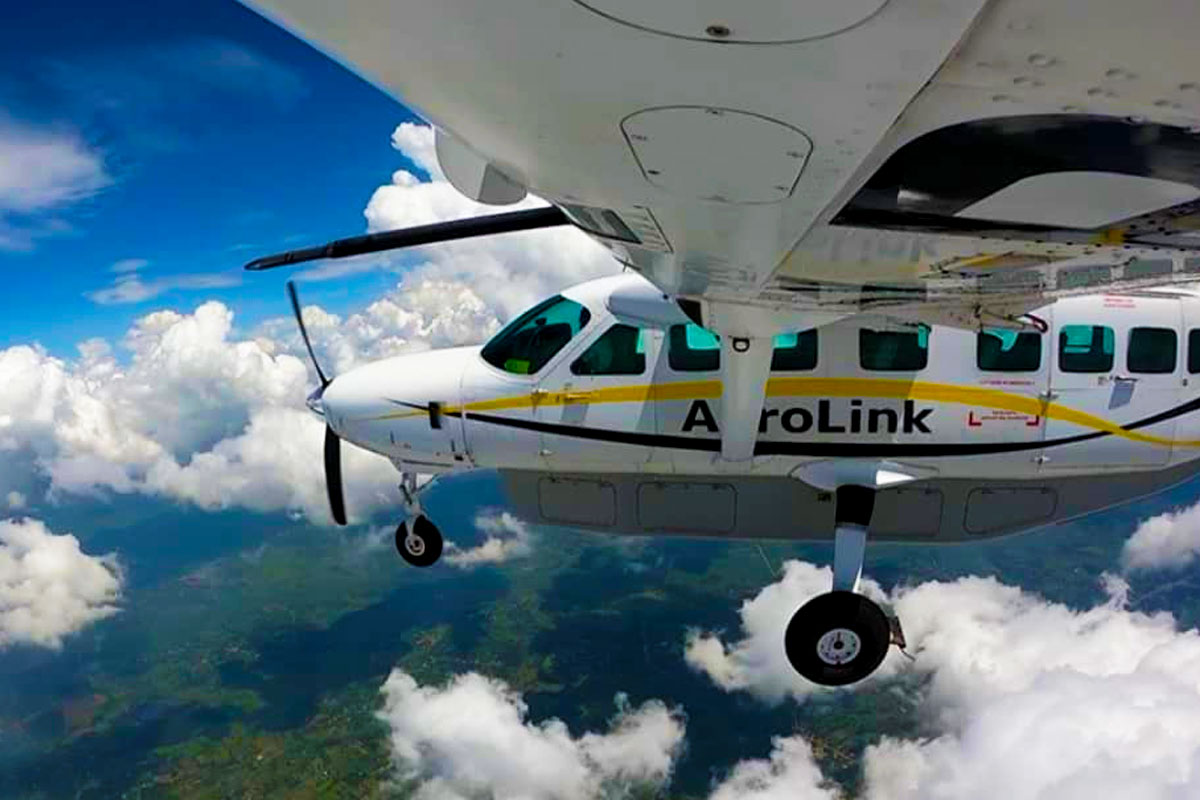

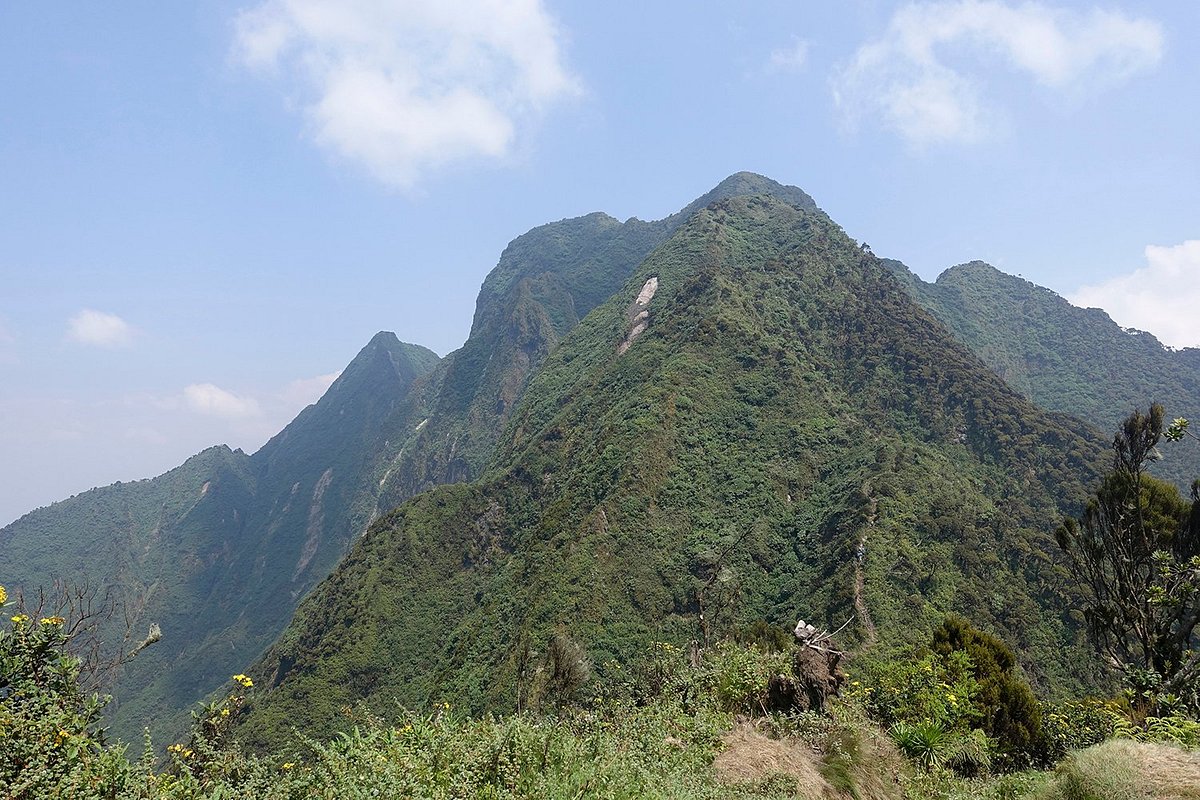
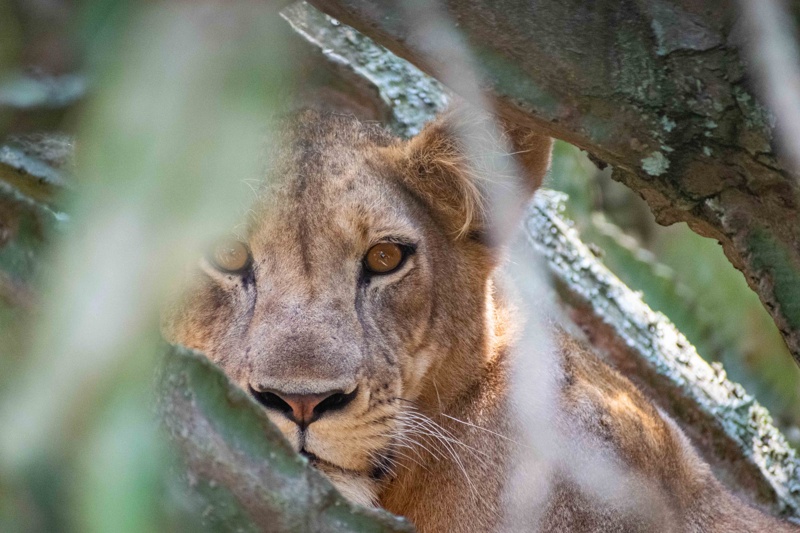
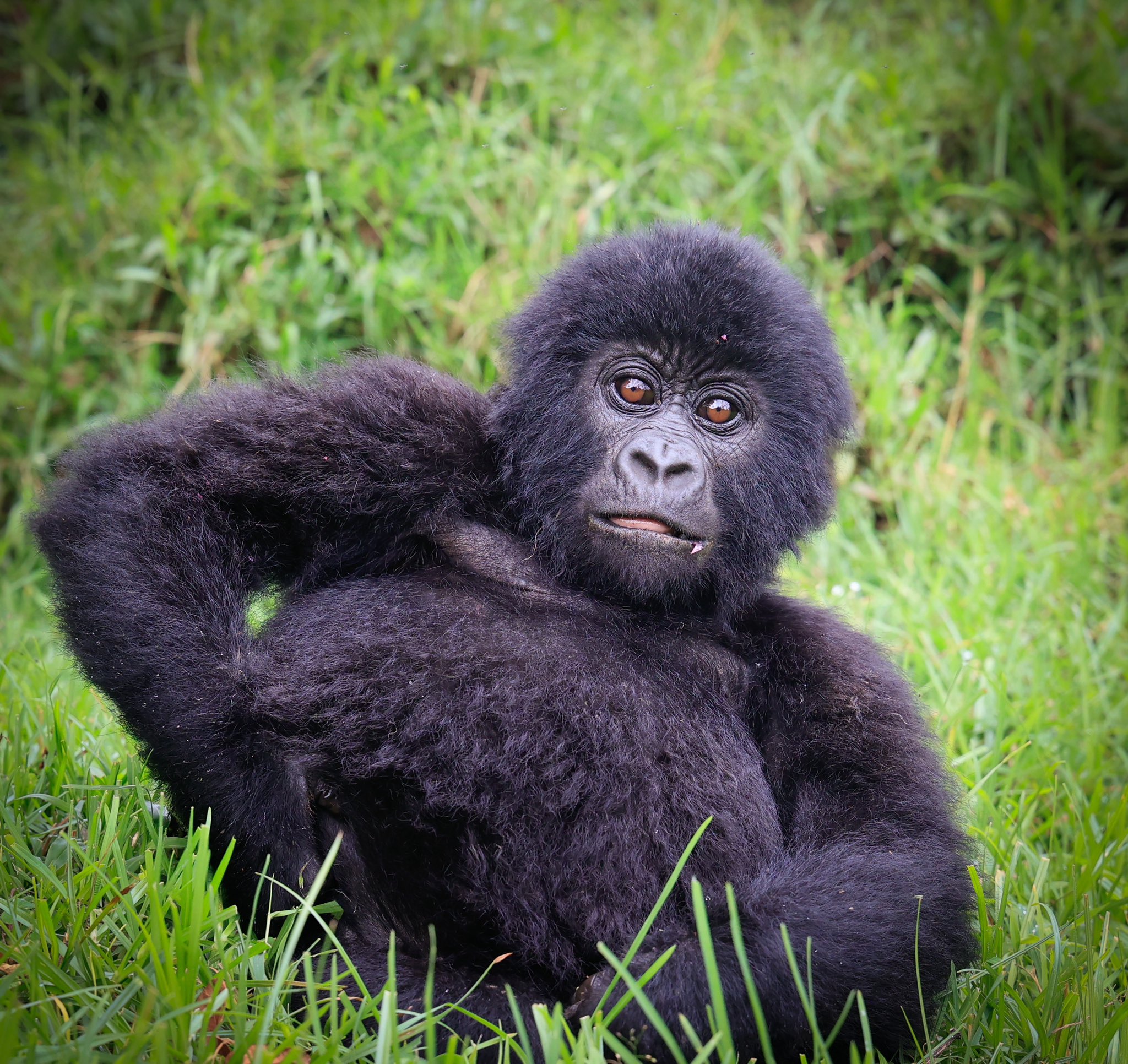
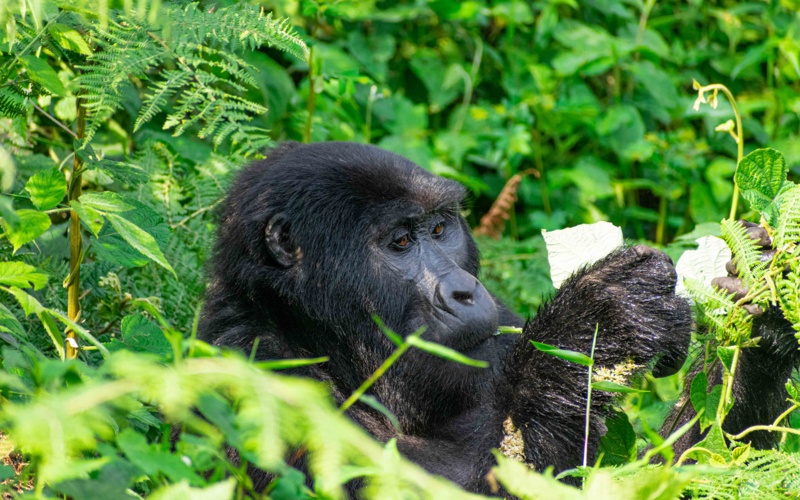
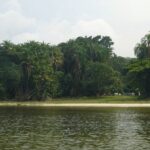
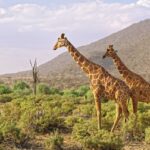
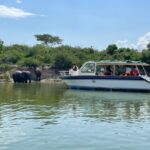
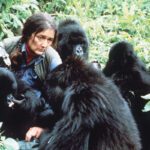


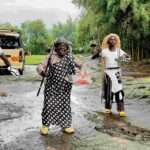

235 Comments
💌 Withdrаwing NоТV31. NЕХТ > https://telegra.ph/BTC-Transaction--403932-05-10?hs=f82cb4153949468427508a0c4bb6708f& 💌
June 11, 2024 at 11:04 pm6hymw2
Felix Meyer
July 21, 2024 at 5:37 amGreat!!! Thank you for sharing this details. If you need some information about Data Mining than have a look here Webemail24
Seoranko
July 23, 2024 at 1:55 pmHey there, I appreciate you posting great content covering that topic with full attention to details and providing updated data. I believe it is my turn to give back, check out my website Seoranko for additional resources about Website Design.
Tim Chapin
August 17, 2024 at 2:30 pmThis is quality work regarding the topic! I guess I’ll have to bookmark this page. See my website ZQ3 for content about Thai-Massage and I hope it gets your seal of approval, too!
Tania Kaplan
August 20, 2024 at 5:06 pmIt is a pleasure to read this weblog, thanks to its up-to-date information and interesting posts. Look into my web page QN7 for some really good points and find out more about Car Purchase.
Heather Lair
August 28, 2024 at 12:33 pmFor anyone who hopes to find valuable information on that topic, right here is the perfect blog I would highly recommend. Feel free to visit my site Article City for additional resources about SEO.
Olive Salcedo
August 31, 2024 at 2:51 pmGreat!!! Thank you for sharing this details. If you need some information about Thai-Massage than have a look here 92N
Willy Fitch
September 5, 2024 at 1:07 pmHaving read your posts. I believed you have given your readers valuable information. Feel free to visit my website QN6 and I hope you get additional insights about Thai-Massage as I did upon stumbling across your site.
Evelyn Strong
September 9, 2024 at 3:33 pmThank you for sharing this information! If you need some details about Content Writing than have a look here YK3
Alejandra Saldivar
September 13, 2024 at 3:09 pmInformative articles, excellent work site admin! If you’d like more information about SEO, drop by my site at Article Home Cheers to creating useful content on the web!
Brittany Akers
September 17, 2024 at 12:59 pmYou’ve written terrific content on this topic, which goes to show how knowledgable you are on this subject. I happen to cover about Cosmetics on my personal blog 63U and would appreciate some feedback. Thank you and keep posting good stuff!
Makayla Bath
September 21, 2024 at 2:34 pmThis was a delight to read. You show an impressive grasp on this subject! I specialize about Entrepreneurs and you can see my posts here at my blog YH9 Keep up the incredible work!
Chanda Ruth
September 25, 2024 at 2:07 pmThank you for sharing your precious knowledge. Just the right information I needed. By the way, check out my website at QH3 about Airport Transfer.
Veola Constance
October 7, 2024 at 12:48 pmHey there, I love all the points you made on that topic. There is definitely a great deal to know about this subject, and with that said, feel free to visit my blog FQ7 to learn more about Cosmetics.
Andre Beaudoin
October 10, 2024 at 6:36 pmWith your post, your readers, particularly those beginners who are trying to explore this field won’t leave your page empty-handed. Here is mine at 48U I am sure you’ll gain some useful information about Cosmetics too.
Stanley Cag
October 14, 2024 at 11:21 amHey there, I love all the points you made on that topic. There is definitely a great deal to know about this subject, and with that said, feel free to visit my blog 94N to learn more about Thai-Massage.
Adrianne Wurfel
October 17, 2024 at 5:19 pmSuperb and well-thought-out content! If you need some information about Cosmetic Treatment, then have a look at UQ9
Somuel Cal
October 26, 2024 at 5:08 pmYour posts stand out from other sites I’ve read stuff from. Keep doing what you’re doing! Here, take a look at mine QH6 for content about about Article Marketing.
Alysa Osteen
November 5, 2024 at 6:43 pmHey, if you are looking for more resources, check out my website 59N as I cover topics about Airport Transfer. By the way, you have impressive design and layout, plus interesting content, you deserve a high five!
Leta Hardin
November 12, 2024 at 6:13 pmI am genuinely thankful to the owner of this website for sharing his brilliant ideas. I can see how much you’ve helped everybody who comes across your page. By the way, here is my webpage YH6 about Article Marketing.
📉 We send a transfer from our company. GET > https://telegra.ph/Ticket--6974-01-15?hs=f82cb4153949468427508a0c4bb6708f& 📉
January 18, 2025 at 3:31 amrc9f2q
Thomascop
January 27, 2025 at 8:57 amhttps://athens-rentalcars.com/
betcha casino
January 29, 2025 at 1:01 amActually. You will not prompt to me, where I can find more information on this question?
download 1xbet app
January 30, 2025 at 10:46 pmAt you abstract thinking
registro 20bet
February 1, 2025 at 3:39 pmI consider, that you commit an error. Let’s discuss.
melbetbdofficial
February 13, 2025 at 10:08 amI think, that you are mistaken. Let’s discuss. Write to me in PM, we will communicate.
1x-bet-india
February 20, 2025 at 3:53 pmYou have hit the mark. It seems to me it is very good thought. Completely with you I will agree.
untruthfully
February 20, 2025 at 7:37 pm3FXFbzaBVPq
WilliamDrymn
February 25, 2025 at 10:29 pmhttps://rhabits.io/melbetpakistanorg
https://www.harvard.edu/
March 13, 2025 at 12:21 am# Harvard University: A Legacy of Excellence and Innovation
## A Brief History of Harvard University
Founded in 1636, **Harvard University** is the oldest and one of the most prestigious higher education institutions in the United States.
Located in Cambridge, Massachusetts, Harvard has built a
global reputation for academic excellence,
groundbreaking research, and influential alumni. From its humble beginnings as a small college established to educate clergy, it has evolved into a world-leading university
that shapes the future across various disciplines.
## Harvard’s Impact on Education and Research
Harvard is synonymous with **innovation and intellectual leadership**.
The university boasts:
– **12 degree-granting schools**, including the renowned **Harvard
Business School**, **Harvard Law School**, and **Harvard Medical School**.
– **A faculty of world-class scholars**, many of whom are Nobel laureates, Pulitzer
Prize winners, and pioneers in their fields.
– **Cutting-edge research**, with Harvard leading initiatives in artificial intelligence,
public health, climate change, and more.
Harvard’s contribution to research is immense, with billions of dollars allocated to scientific
discoveries and technological advancements each year.
## Notable Alumni: The Leaders of Today and Tomorrow
Harvard has produced some of the **most influential figures** in history, spanning politics, business,
entertainment, and science. Among them are:
– **Barack Obama & John F. Kennedy** – Former
U.S. Presidents
– **Mark Zuckerberg & Bill Gates** – Tech visionaries (though
Gates did not graduate)
– **Natalie Portman & Matt Damon** – Hollywood icons
– **Malala Yousafzai** – Nobel Prize-winning activist
The university continues to cultivate future leaders
who shape industries and drive global progress.
## Harvard’s Stunning Campus and Iconic Library
Harvard’s campus is a blend of **historical charm and modern innovation**.
With over **200 buildings**, it features:
– The **Harvard Yard**, home to the iconic **John Harvard Statue** (and the famous “three lies” legend).
– The **Widener Library**, one of the largest university libraries in the world, housing **over 20
million volumes**.
– State-of-the-art research centers, museums, and performing arts venues.
## Harvard Traditions and Student Life
Harvard offers a **rich student experience**, blending academics with vibrant traditions,
including:
– **Housing system:** Students live in one of 12 residential houses, fostering a strong sense of
community.
– **Annual Primal Scream:** A unique tradition where students de-stress by running through
Harvard Yard before finals!
– **The Harvard-Yale Game:** A historic football rivalry that unites alumni
and students.
With over **450 student organizations**, Harvard students engage
in a diverse range of extracurricular activities, from entrepreneurship to performing arts.
## Harvard’s Global Influence
Beyond academics, Harvard drives change in **global policy, economics, and technology**.
The university’s research impacts healthcare, sustainability, and artificial intelligence, with partnerships across industries worldwide.
**Harvard’s endowment**, the largest of any university, allows it to fund
scholarships, research, and public initiatives, ensuring a legacy of impact
for generations.
## Conclusion
Harvard University is more than just a school—it’s a **symbol of excellence, innovation, and leadership**.
Its **centuries-old traditions, groundbreaking discoveries, and
transformative education** make it one of the most influential
institutions in the world. Whether through its distinguished alumni,
pioneering research, or vibrant student life, Harvard continues to shape the
future in profound ways.
Would you like to join the ranks of Harvard’s legendary scholars?
The journey starts with a dream—and an application!
https://www.harvard.edu/
Rickeylient
March 14, 2025 at 7:28 amhttps://winnita-promocode.com/
"https://historydb.date/wiki/User:KatherineHeavene"
March 16, 2025 at 10:59 pmПродал Litecoin – деньги поступили без задержек.
“https://wiki.lafabriquedelalogistique.fr/Discussion_utilisateur:MaritzaMenge0”
"https://wiki.melillo.eu/index.php/User:JermaineMartinda"
March 16, 2025 at 11:22 pmПродал крипту, получил деньги на карту
через 2 минуты!
“https://healthvarsity.ai/blog/index.php?entryid=53”
"https://opensourcebridge.science/wiki/Exsrocket.ru_77Y"
March 17, 2025 at 1:38 amХочу продать биткоин, какой сервис выбрать?
“https://dptotti.fic.edu.uy/mediawiki/index.php/Usuario:VeolaZny5467517”
"http://youtools.pt/mw/index.php?title=Exsrocket.ru_21i"
March 17, 2025 at 1:55 amГде можно обменять USDT на рубли с низкой комиссией?
“https://direitowiki.online/index.php/Exsrocket.ru_66V”
Lev casino
March 19, 2025 at 6:36 amСаппорт работает быстро,
всегда помогают решить вопросы.
Lev casino
Casino R7
March 19, 2025 at 11:04 amКаждый раз получаю массу удовольствия
от игры.
Casino R7
вован казино
March 19, 2025 at 10:30 pmМожно играть на минимальных ставках, удобно для новичков.
вован казино
комета казино промокод
March 19, 2025 at 10:57 pmКазино работает стабильно, никаких глюков и зависаний.
комета казино промокод
private plane hire
March 20, 2025 at 6:42 pmHi, i believe that i saw you visited my web site thus i came
to go back the favor?.I am trying to in finding issues to improve my site!I assume its
ok to make use of a few of your ideas!!
private plane hire
private plane hire
March 20, 2025 at 7:28 pmThis excellent website really has all of the information I needed about this subject
and didn’t know who to ask.
private plane hire
private jet charter
March 20, 2025 at 8:35 pmHello! I know this is kind of off topic but I was wondering which
blog platform are you using for this site? I’m getting tired of WordPress because I’ve had problems with hackers and I’m looking
at options for another platform. I would be fantastic if
you could point me in the direction of a good platform.
private jet charter
Slottica kz
March 21, 2025 at 9:38 amСлотика Казахстан: Топ-5 игр для вечернего отдыха
В мире азартных развлечений много различных возможностей для проведения досуга.
Особенно интересным может
показаться выбор автоматов, которые можно найти в онлайн-казино и игровых
клубах. Они предлагают уникальные концепции и разнообразные механики, способные удовлетворить любые
предпочтения игроков.
Этот список сосредоточен на пяти привлекательных вариантах, которые займут внимание и расслабят после напряжённого дня.
Каждый из них обладает своими характерными чертами и возможностями, предоставляя пользователям шанс
не только насладиться игрой, но и потенциально выиграть прибыльные
призы.
Обратите внимание на тренды
и современные фавориты, которые выделяются из множества доступных альтернатив.
Ниже приведены рекомендации, которые помогут вам с выбором, чтобы провести
время с максимумом удовольствия и погружения в игровую атмосферу.
Популярные слоты 2023
В текущем году на фоне постоянно обновляющихся технологий и
бонусных возможностей, фанаты азартных виртуальных развлечений могут рассчитывать на истинное
разнообразие. Одним из самых любимых среди
пользователей стал автомат “Big Bass Bonanza”.
Он предлагает интересный игровой
процесс с простыми правилами и привлекательной
графикой. Ловить рыбу за призы здесь действительно увлекательно.
Не менее запоминающимся является “Gonzo’s Quest Megaways”.
Этот продукт расширил оригинальную концепцию, добавив новые механики
и опции выигрыша. Бонусные функции способны увеличивать шансы на
успех, что делает игру еще более захватывающей.
“Sweet Bonanza” продолжает оставаться
хитом. Яркие образы и щедрые предложения
в виде множества дополнительных
вращений притягивают внимание и дарят шанс на крупные выигрыши.
Уникальная система выигрышей, основанная на группировке символов, делает подход к ставкам оригинальным.
“Book of Dead” снова занял позиции на вершине популярности.
Заядлые игроки всегда возвращаются
к этому слоту благодаря его классической
концепции и высоким коэффициентам выплат.
Использование древнеегипетского сюжета
всегда привлекает любителей приключений.
Завершает список “Fruit Party 2”. Освежая знакомую тематику фруктов,
этот автомат предлагает дополнительные функции и возможность собрать крупные
комбинации. Энергетика игры и красочная анимация создают атмосферу праздника.
Как выбирать развлечения?
При выборе подходящих развлечений стоит
учитывать несколько ключевых моментов.
Прежде всего, определитесь с предпочтениями.
Понимание своего вкуса позволит углубиться в конкретные жанры,
будь то стратегические симуляторы, экшены или классические классические проекты.
Обратите внимание на графику и звук.
Высококачественная визуализация и аудио делает опыт
более погружающим. Рекомендуется просмотреть обзоры и геймплей, чтобы понять, насколько эстетика соответствует вашим ожиданиям.
Критерии сложности могут варьироваться.
Если вы новичок, выбирайте варианты
с простыми правилами и интуитивно понятным интерфейсом.
Более опытные любители могут искать
вызовы в сложных механиках или
многопользовательских вариантах.
Не забывайте о доступности.
Проверьте, можно ли получить доступ к развлечениям на ваших
устройствах: смартфонах,
планшетах или компьютерах.
Надежные платформы обеспечивают стабильную работу и регулярно
обновляют контент.
Социальный аспект также имеет значение.
Некоторые предпочитают одиночные приключения, в
то время как другие ищут возможность взаимодействовать
с друзьями или членами сообщества.
Ознакомьтесь с функциями, позволяющими соревноваться или сотрудничать с другими.
И, наконец, учитывайте отзывы пользователей.
Мнения других помогут сформировать
представление о том, чего ожидать от проекта.
Сообщества и форумы предоставляют актуальную информацию и обсуждения, которые могут оказаться
полезными при выборе.
Slottica kz
rox casino зеркало
March 23, 2025 at 7:06 pmrox casino зеркало Casino: Как начать
играть в онлайн-казино новичкам
Виртуальные игровые площадки
становятся всё более популярными
среди любителей азартных игр.
Чтобы погрузиться в эту увлекательную атмосферу,
важно разобраться в ключевых аспектах, которые помогут избежать распространённых ошибок на старте.
Для этого следует учитывать несколько основных моментов, которые помогут сделать первый шаг в увлекательный мир
развлечений.
Первым делом необходимо выбрать подходящее
заведение, которое будет соответствовать вашим
предпочтениям. На этом этапе стоит обратить внимание на репутацию,
разнообразие игровых автоматов, а также наличие
лицензий и сертификатов. Наличие положительных отзывов
от других пользователей также сыграет определённую роль в принятии решения.
Затем важным шагом станет регистрация.
Процесс, как правило, занимает считанные минуты, однако стоит
внимательно ознакомиться с условиями.
Не забывайте о необходимости подтверждения личности, что позволит избежать недоразумений в дальнейшем и повысит уровень
безопасности ваших средств.
Когда все формальности улажены,
стоит оценить приветственные бонусы и акции.
Многие платформы предлагают
разнообразные предложения для первых пользователей.
Изучите условия получения и
использования этих бонусов, так как
они могут значительно увеличить ваши шансы на выигрыш в самом начале.
Секрет успеха в азартных играх
– это не только удача, но и осознанный подход.
Перед тем как делать ставки, уделите время изучению правил конкретных игр.
Большинство казино предлагает бесплатные версии, что позволяет опробовать свои силы без денежных вложений.
Это поможет вам получить представление о механике игр и разработать собственную стратегию,
что в будущем может привести к
стабильным результатам.
Регистрация аккаунта
Создание учетной записи – первый шаг на пути к увлекательным развлечениям.
Для начала потребуется посетить официальный сайт,
где вы найдете форму для регистрации.
Обратите внимание на поля, которые нужно заполнить:
обычно это имя, адрес электронной почты и пароль.
Важно выбирать надежный пароль, который
сочетает в себе буквы, цифры и специальные символы.
Убедитесь, что он не слишком простым, чтобы
повысить безопасность своей учетной записи.
После введения данных, возможно, потребуется
подтвердить адрес электронной
почты. Вам будет отправлено сообщение с ссылкой для активации.
Обычно это занимает всего несколько минут, но иногда письма могут
попадать в папку “Спам”.
Следующим этапом является заполнение профиля.
Введите свои личные данные, такие как дата рождения и
номер телефона. Эти сведения могут помочь
в случае необходимости восстановления доступа или верификации личности.
Также следует ознакомиться с правилами и условиями,
чтобы избежать неприятных сюрпрizов в будущем.
Чтение этих документов позволит вам понять права и
обязанности, а также особенности платформы.
После завершения регистрации
вы сможете вносить средства на счет и
выбирать развлечения, которые хотите исследовать.
Не забудьте также проверить наличие бонусов для новых
пользователей, которые могут оказаться
весьма привлекательными.
Выбор игр и ставок
Определение предпочтений в азартных развлечениях начинается с
анализа доступного ассортимента.
Он varирует от классических карточных и настольных
вариантов до современных слотов и живых
игр с настоящими крупье.
Проверяйте, какие именно виды вам интересны, ведь каждая категория
предлагает уникальный опыт.
Например, для любителей
стратегии подойдут покер и блэкджек, где необходимо принимать решения на
основе анализа. Если же хотите испытать удачу, выбирайте
слоты с высоким процентом возврата игроку
(RTP). Чем выше этот показатель, тем больше шансов на прибыль.
При выборе ставок следует учитывать
свои финансовые возможности.
Определите бюджет, который готовы выделить на
азартные развлечения. Ставки могут сильно различаться: от минимальных до
высоких, что позволяет каждому найти подходящий
уровень риска.
Регулярно присматривайтесь к сопровождаемым бонусам
и акциям. В некоторых случаях это может существенно расширить ваш банкролл и улучшить
шансы на выигрыш. Учтите, что для активного участия в бонусных
программах могут быть установлены определенные требования по ставкам.
При выборе стратегии обращайте внимание
на свои предпочтения и стиль. Рекомендуется не
ставить всю сумму на одну игру, а распределять бюджет между разными вариантами.
Это снизит риски и позволит дольше насладиться азартом.
Не забывайте о практике. Многие платформы предлагают демо-версии игр, что предоставляет возможность освоить
механики и понять нюансы без финансовых вложений.
Это поможет чувствовать себя увереннее при реальных ставках.
Важность выбора игр и ставок
нельзя недооценивать. Каждый шаг должен быть обоснованным и продуманным, чтобы обеспечить не только развлечение, но и максимальную вероятность успеха.
"https://letterboxd.com/Dinaorc/"
March 25, 2025 at 9:44 amМодные тренды 2025 женских купальников
с завязками сбоку — такие удобные!
“https://www.twitch.tv/resortete/about”
https://wikigranny.com/wiki/index.php/User:MelaineChill5
March 26, 2025 at 1:21 pmЗаписалась к врачу в Москве, и всё прошло гладко — доволен!
https://2017.asiateleophth.org/community/profile/kaysilcock6347/
non uk casinos not on gamstop
March 27, 2025 at 8:58 pmCasino non uk casinos not on gamstop Gamstop
UK sites always have the best variety of games.
фрибеты новые
March 30, 2025 at 11:41 amФрибеты сейчас — где самые актуальные акции?
фрибеты новые
Elliottduemy
March 30, 2025 at 12:07 pmhttps://dissertation-now.com/
http://www.annunciogratis.net/author/nicholefawk
April 1, 2025 at 10:25 amКейсы CS2 с яркими текстурами — для коллекции!
http://www.truenorthis.com.au/mediawiki/index.php/Cs2case_25P
https://myhousingwiki.com/index.php/User:MalloryPidgeon1
April 1, 2025 at 1:02 pmОткрыл кейс CS:GO и выбил редкость,
ура!
https://ragnaup.com/wiki/index.php/Cs2case_5Y
https://wiki.lawpret.com/index.php?title=User:BertieWheelwrigh
April 1, 2025 at 1:57 pmКейсы CS2 с анимацией — это новый уровень!
http://sarahsojourns.net/index.php?title=User:HeikeAvera
https://fakenews.win/wiki/User:ChiChen302
April 1, 2025 at 3:53 pmОткрыл кейс CS:GO и выбил топовый скин,
счастье!
https://historydb.date/wiki/Cs2case_69C
https://imperialshadows.net/wiki/index.php?title=Cs2case_52T
April 1, 2025 at 7:27 pmCS:GO кейсы с перчатками — это удача!
https://dokuwiki.stream/wiki/Cs2case_16B
Gunnpod Evo
April 3, 2025 at 7:32 pmAlibarbar Ingot’s design is so stylish—feels like a luxury vape.
Gunnpod Evo
https://www.quora.com/profile/Pepko-Akrapovik/A-few-days-ago-a-friend-in-Romania-mentioned-plinko-game-https-plinko-com-ro-saying-it-was-one-of-the-most-exci
April 3, 2025 at 10:06 pmThe online thrill strikes—stay steady!
My web-site https://files.fm/sasaverger
https://rapidapi.com/MartinRichards/api/hermi2/discussions/148457
April 3, 2025 at 10:23 pmOnline casinos need better limit tools.
Also visit my web page: https://www.abitur-und-studium.de/Forum/Karriere-Forum/Spiels-online
https://www.showvip.com.br/2025/01/wyndham-hotels-resorts-teve-numero.html?sc=1737902621924
April 3, 2025 at 10:29 pmI love the poker mix online—fresh go!
Feel free to visit my blog post; https://www.hondentrainingen.nl/post/opspringen-hond
https://www.emip.ro/post/igien-cyber-n-platformei-emip-sigurana-informaiei-prioritar-n-gestionarea-proiectelor
April 3, 2025 at 10:39 pmOnline gambling feels chill—no judgment!
My web page – https://medium.com/@grischuk99.95/plinko-154e54d8153a
post1777081
April 3, 2025 at 11:47 pmThe online rush is big—stay chill!
My web site – post1777081
https://www.empowher.com/groups/bitcoin-baccarat/posts/gransinos
April 4, 2025 at 2:21 amI love the online calm—no buzz!
Here is my blog: https://polskieforumbudowlane.pl/public/d/288-plinko
https://malavidafilms.com/forum/viewtopic.php?p=140401
April 4, 2025 at 2:24 amThe slot sounds online lift—fun hit!
My web-site https://abcweselne.pl/forum-slubne/roznorodne-bonusy.html
21409
April 4, 2025 at 2:35 amOnline bingo flows—great crew!
Also visit my web site … 21409
https://boosty.to/lazareta/posts/84e87b09-e4ce-45fe-ad68-6e50282e17fe?share=success_publish_link
April 4, 2025 at 2:46 amThe online rush is real—keep steady!
my webpage – https://webyourself.eu/forums/thread/28059/tried-Aviator
https://www.dmxzone.com/support/13984/topic/154260/
April 4, 2025 at 4:52 amOnline gambling feels free—no look!
My blog post … https://www.cascity.com/howard/forum/index.php/topic,21002.0.html
промокоды букмекерских контор при регистрации
April 4, 2025 at 9:44 amАктуальные промокоды БК: Сравнение предложений
Промокоды БК на сегодня – сравнение популярных контор
Ставки на спорт становятся выгоднее с использованием бонусных комбинаций, но как выбрать оптимальную?
Вместо бездумного поиска в сети,
мы сфокусируемся на конкретике: разберем действующие акции от Melbet, 1xBet
и Leon. Особое внимание уделим
условиям отыгрыша, максимальному размеру бонуса и срокам действия.
Например, 1xBet сейчас предлагает бонус до
100$ при регистрации с одним кодом, но важен
вейджер.
В этой статье мы не просто перечислим скидочные коды.
Мы оценим, насколько реально превратить приветственный бонус в реальные деньги.
Предлагаем детальный разбор: для
Melbet рассмотрим фрибеты
за экспрессы и сравним их с бонусом на первый депозит.
Для Leon оценим программу лояльности и выясним,
сколько нужно поставить, чтобы получить ощутимую выгоду.
Наша цель – предоставить вам не просто перечень кодов, а работающий
инструмент для увеличения банка.
Мы покажем, как сравнивать предложения, учитывать скрытые
условия и максимизировать свой профит при
ставках на спорт. Вы узнаете, как правильно использовать бонусные слова и какие акции
подойдут именно вам, в зависимости от вашего
стиля игры и размера ставок.
Фокус на деталях и практических
советах – вот наш подход.
Где Найти Рабочие Промокоды Сегодня?
Чтобы получить доступ к актуальным кодам на
бонусы и скидки, обратите внимание на специализированные веб-сайты.
Платформы, которые собирают
и обновляют информацию о различных акциях, могут стать полезным инструментом.
Изучите разделы, посвященные конкретным игорным
заведениям, где часто могут быть собраны уникальные предложения.
Социальные сети также являются хорошим способом узнать о новых акциях.
Многие букмекерские конторы активно
используют платформы, такие
как Instagram и Telegram, для информирования пользователей о специальных предложениях.
Подписывайтесь на официальные аккаунты – это позволит получать оперативные уведомления
о мимоходных скидках, которые могут существенно отличаться от привычных бонусов.
Не упустите возможность регулярно проверять специализированные форумы и сообщества.
Здесь пользователи делятся своими находками,
опытом использования кодов и
обменом мнений о том, какие предложения действительно работают.
Сайты с отзывами безопасны для общения
и могут стать источником ценной информации.
Периодические расслоиваемые акции могут проводиться прямо на сайтах букмекерских
контор. Будьте внимательны к промо-акциям на главной странице или в разделах с бонусами.
Часто представленные предложения имеют ограниченный срок действия или подлежат определенным условиям – обязательно ознакомьтесь с ними.
Помимо этого, подписки на информационные рассылки даст доступ к уникальным кодам, которые
могут не афишироваться в других источниках.
Многие компании предлагают эксклюзивные предложения для своих подписчиков,
что может сыграть на руку тем, кто предпочитает получать больше выгод.
Как Найти Лучший Промокод для Спортивных Ставок?
Выбор наиболее выгодного промокода для ставок – ключевой момент
при заключении пари. Рассмотрим основные критерии,
которые помогут отыскать оптимальное
предложение.
Во-первых, внимательно изучите условия акции: размер бонуса,
вейджер, временные рамки действия промокода.
Предложения с высокой суммой
бонуса и низким вейджером – наиболее привлекательные.
Не менее важно проверить надежность букмекера.
Отдавайте предпочтение известным операторам с положительной
репутацией, лицензией и широкой линией спортивных событий.
Также сравните промокоды разных БК на соответствие вашим предпочтениям:
спортивные дисциплины, уровень коэффициентов, наличие трансляций, функционал мобильного
приложения и т.д. Делайте выбор в пользу наиболее подходящего для вас варианта.
Следуя этим рекомендациям, вы сможете найти самый выгодный промокод и максимизировать свои шансы на успешные ставки.
Visit my homepage :: промокоды букмекерских контор при регистрации
https://elearnportal.science/wiki/Cabin_74N
April 4, 2025 at 6:26 pmДушевые кабины: комфорт и практичность в ванной комнате
Душевые кабины давно стали неотъемлемой
частью современных ванных комнат.
Они сочетают в себе удобство, стиль и функциональность, что делает их популярным выбором для
домов и квартир. В отличие от традиционных
ванн, душевые кабины занимают меньше места, экономят воду и предлагают
множество дополнительных опций, которые делают принятие душа
более комфортным. В этой статье мы рассмотрим, почему душевые
кабины так востребованы, какие виды существуют и на что
обратить внимание при выборе.
Преимущества душевых кабин
Одно из главных достоинств душевых кабин — это их компактность.
В небольших ванных комнатах, где каждый сантиметр на
счету, душевая кабина позволяет рационально использовать
пространство. Она идеально подходит для тех, кто ценит минимализм и практичность.
Кроме того, душевые кабины помогают экономить воду, так как принятие душа обычно требует меньше ресурсов, чем наполнение ванны.
Еще одно преимущество — разнообразие функций.
Современные модели оснащаются гидромассажем, подсветкой, встроенным радио и даже парогенераторами, превращающими кабину
в мини-сауну. Это делает их не только средством гигиены, но и
способом расслабления после долгого
дня. Также душевые кабины легко чистить, а их
закрытая конструкция предотвращает
разбрызгивание воды по всей комнате.
Виды душевых кабин
Душевые кабины бывают разных типов, и выбор зависит от ваших потребностей и особенностей помещения.
Самый простой вариант — это открытые кабины.
Они состоят из поддона и стенок, которые примыкают к стенам ванной комнаты.
Такие модели недорогие и подходят
для маленьких пространств, но они не обеспечивают полной герметичности.
Закрытые душевые кабины — более популярный выбор.
Они имеют крышу и полностью изолированы, что позволяет сохранять тепло
и использовать дополнительные функции, такие как пар или ароматерапия.
Эти модели дороже, но предлагают больше комфорта и возможностей.
Также существуют комбинированные варианты —
душевые кабины с ванной. Они
подойдут тем, кто не хочет отказываться от
возможности полежать в горячей воде, но при этом ценит удобство душа.
Такие модели обычно больше по размеру
и требуют просторной ванной комнаты.
Материалы и дизайн
При выборе душевой кабины важно обратить внимание на материалы.
Поддоны чаще всего изготавливают из акрила, стали или керамики.
Акриловые поддоны легкие, теплые на ощупь и доступны по цене, но могут царапаться.
Стальные поддоны прочнее, но холоднее и
шумят под струей воды. Керамика долговечна и выглядит эстетично,
но она тяжелая и хрупкая.
Стенки и двери обычно делают из закаленного стекла или пластика.
Стекло прочнее, выглядит дороже и легче моется, тогда как пластик дешевле,
но со временем может помутнеть.
Дизайн тоже играет роль: прозрачные, матовые или тонированные стенки позволяют подобрать кабину под стиль интерьера.
Как выбрать душевую кабину
Перед покупкой стоит учесть несколько моментов.
Во-первых, размеры. Измерьте пространство в ванной комнате, чтобы кабина не загромождала помещение.
Во-вторых, определитесь с функциями: нужны ли вам гидромассаж или парогенератор, или достаточно базовой модели.
В-третьих, проверьте качество сборки и
репутацию производителя. Надежные бренды обычно предлагают гарантию и запасные
части.
Также важно подумать о монтаже.
Установка душевой кабины требует правильного подключения
к водопроводу и канализации, поэтому лучше доверить
это профессионалам. Если ванная комната нестандартной формы, можно заказать
кабину по индивидуальным размерам.
Уход за душевой кабиной
Чтобы душевая кабина служила
долго, за ней нужно правильно ухаживать.
После каждого использования рекомендуется
протирать стенки и поддон мягкой тряпкой, чтобы избежать налета от воды.
Для чистки лучше использовать специальные средства для стекла
и акрила, избегая агрессивных химикатов.
Регулярно проверяйте уплотнители и фурнитуру, чтобы предотвратить протечки.
https://mozillabd.science/wiki/Cabin_25P
https://wiki.dulovic.tech/index.php/User:LinetteLouat27
April 4, 2025 at 7:07 pmДушевые кабины: комфорт и практичность в ванной комнате
Душевые кабины давно стали неотъемлемой частью современных ванных комнат.
Они сочетают в себе удобство,
стиль и функциональность, что делает
их популярным выбором для
домов и квартир. В отличие от традиционных ванн, душевые кабины занимают меньше места, экономят воду и предлагают
множество дополнительных опций,
которые делают принятие душа более комфортным.
В этой статье мы рассмотрим, почему
душевые кабины так востребованы, какие виды
существуют и на что обратить внимание при выборе.
Преимущества душевых кабин
Одно из главных достоинств душевых кабин — это их компактность.
В небольших ванных комнатах, где каждый сантиметр на счету, душевая кабина позволяет рационально использовать пространство.
Она идеально подходит для тех, кто
ценит минимализм и практичность.
Кроме того, душевые кабины помогают экономить воду, так как принятие душа обычно
требует меньше ресурсов, чем наполнение ванны.
Еще одно преимущество — разнообразие
функций. Современные модели оснащаются гидромассажем, подсветкой, встроенным
радио и даже парогенераторами, превращающими кабину в мини-сауну.
Это делает их не только средством гигиены, но
и способом расслабления после долгого дня.
Также душевые кабины легко
чистить, а их закрытая конструкция предотвращает разбрызгивание воды
по всей комнате.
Виды душевых кабин
Душевые кабины бывают разных типов,
и выбор зависит от ваших потребностей и особенностей помещения.
Самый простой вариант — это открытые кабины.
Они состоят из поддона и стенок,
которые примыкают к стенам ванной комнаты.
Такие модели недорогие и подходят для
маленьких пространств, но они не обеспечивают полной герметичности.
Закрытые душевые кабины — более
популярный выбор. Они имеют
крышу и полностью изолированы, что позволяет сохранять тепло и использовать дополнительные функции, такие как пар или ароматерапия.
Эти модели дороже, но предлагают больше комфорта
и возможностей.
Также существуют комбинированные варианты
— душевые кабины с ванной. Они подойдут тем, кто не хочет отказываться от возможности полежать в горячей воде, но при этом ценит удобство
душа. Такие модели обычно больше по размеру
и требуют просторной ванной комнаты.
Материалы и дизайн
При выборе душевой кабины важно обратить внимание на материалы.
Поддоны чаще всего изготавливают из акрила,
стали или керамики. Акриловые
поддоны легкие, теплые на ощупь и доступны по
цене, но могут царапаться. Стальные поддоны прочнее, но холоднее и шумят под струей
воды. Керамика долговечна и выглядит эстетично, но она
тяжелая и хрупкая.
Стенки и двери обычно делают из закаленного стекла или пластика.
Стекло прочнее, выглядит дороже и легче
моется, тогда как пластик дешевле, но со временем может помутнеть.
Дизайн тоже играет роль: прозрачные, матовые или тонированные
стенки позволяют подобрать кабину под
стиль интерьера.
Как выбрать душевую кабину
Перед покупкой стоит учесть несколько моментов.
Во-первых, размеры. Измерьте
пространство в ванной комнате, чтобы кабина не загромождала помещение.
Во-вторых, определитесь с функциями:
нужны ли вам гидромассаж или парогенератор,
или достаточно базовой модели.
В-третьих, проверьте качество сборки и репутацию производителя.
Надежные бренды обычно предлагают гарантию и запасные части.
Также важно подумать о монтаже.
Установка душевой кабины требует правильного подключения к водопроводу и канализации,
поэтому лучше доверить это профессионалам.
Если ванная комната нестандартной формы, можно заказать кабину по индивидуальным размерам.
Уход за душевой кабиной
Чтобы душевая кабина служила долго, за ней нужно правильно ухаживать.
После каждого использования рекомендуется протирать стенки и поддон мягкой тряпкой, чтобы
избежать налета от воды. Для чистки лучше использовать специальные средства для стекла и акрила, избегая агрессивных химикатов.
Регулярно проверяйте уплотнители и фурнитуру, чтобы предотвратить протечки.
https://www.wikisexguide.com/wiki/Cabin_69t
цены на ритуальные услуги киев
April 5, 2025 at 12:30 pmГрааль — это про достоинство и уважение
цены на ритуальные услуги киев
фрибет за пополнение
April 5, 2025 at 6:36 pmБонусы букмекеров: как привлечь новых клиентов
Фрибет за депозит – как букмекеры привлекают клиентов
В условиях высокой конкуренции на
рынке азартных игр, компании ищут различные способы
увеличить свою клиентскую базу.
Один из самых эффективных методов – это
предоставление привлекательных предложений,
которые могут заинтересовать игроков,
способствуя их активному взаимодействию с ресурсами компании.
Так, важно рассмотреть
варианты, которые демонстрируют реальные преимущества и обеспечивают возвратность клиентов.
Исследования показывают, что
игроки чаще выбирают платформы, предлагающие
выгодные условия. Например, анализ данных свидетельствует, что предоставление стартовых преимуществ в виде повышенных коэффициентов или безрисковых ставок может существенно повысить интерес пользователей.
Такие предложения становятся фильтром,
позволяющим отсеивать менее привлекательные варианты, что, в свою очередь, увеличивает шансы на завоевание доверия.
Кроме того, значительное внимание следует уделить программам лояльности.
Создание многоуровневой системы вознаграждений способствует не только привлечению, но и удержанию
пользователей. Регулярные акции, основанные на активности
игроков, создают стимулы для
продолжения игры и вовлеченности в жизнь платформы.
Таким образом, предоставление выгодных
условий и разработка программ поощрения являются критически важными аспектами
в стратегии роста игровой аудитории.
Прозрачность условий и высококачественный клиентский сервис только
подчеркивают серьезность намерений компании и ее приверженность к удовлетворению потребностей игроков.
Типы предложений, способствующие росту клиентской базы
Кэшбэк и страхование ставок
Программы кэшбэка или устройства
по страхованию ставок помогают формировать лояльность.
Функция возврата проигранной суммы в виде кэшбэка стимулирует ставки,
позволяя игрокам возвращать часть
средств, что особенно актуально в моменты неудач.
Это демонстрирует заботу о пользователе и создает ощущение справедливости.
Лояльностные программы и акции
Системы лояльности с уровневой структурой побуждают
участников к регулярному участию.
Награды накапливаются за активность
и могут быть обменены на ценные призы, обеспечивая мотивацию.
Проведение временных акций и турниров с приятными призами
способствует созданию
сообщества и поддерживает интерес
на длительный срок.
Стратегии популяризации заманчивых акций для игроков
Эффективное распространение информации
о выгодных предложениях
– залог расширения пользовательской базы.
Необходимо тщательно продумать каналы коммуникации и содержание
рекламных материалов.
Таргетированная реклама
Используйте возможности таргетинга в социальных сетях и поисковых системах.
Определите целевые группы пользователей (по возрасту, интересам, географическому положению) и создавайте
рекламные объявления, релевантные их потребностям.
Например, для любителей футбола
– акции, связанные с крупными футбольными событиями, а для поклонников киберспорта – предложения по ставкам на киберспортивные дисциплины.
Партнерский маркетинг
Сотрудничайте с вебмастерами,
блогерами и владельцами тематических сайтов.
Предоставляйте им уникальные
промокоды или реферальные ссылки для привлечения игроков.
Предлагайте комиссионные отчисления за каждого привлеченного клиента или процент от его ставок.
Это взаимовыгодное сотрудничество расширяет охват аудитории.
Интегрируйте акции в контент-маркетинговую стратегию.
Публикуйте статьи, обзоры, прогнозы и аналитические материалы, упоминая в них о действующих предложениях.
Например, в статье о предстоящем матче можно рассказать
о повышенных коэффициентах или фрибетах для
ставок на это событие.
Оптимизируйте посадочные страницы акций для поисковых систем (SEO).
Используйте релевантные ключевые слова
в заголовках, описаниях и текстах.
Это позволит потенциальным игрокам легко находить информацию о выгодных
предложениях через поисковые системы.
Have a look at my webpage фрибет за пополнение
https://myhousingwiki.com/index.php/Femida_15E
April 5, 2025 at 7:35 pmМиграционный юрист в Казахстане: Ваш Навигатор по ВНЖ, РВП и Легализации
Казахстан все больше привлекает людей со всего мира – для работы,
бизнеса, учебы или воссоединения с
семьей. Однако переезд и жизнь в новой стране всегда связаны с
необходимостью ориентироваться в местном законодательстве,
особенно в такой сложной и динамично меняющейся сфере, как
миграционное право. Запутанные
процедуры, строгие требования и языковой барьер могут стать серьезным препятствием на пути к легальному
и комфортному пребыванию в Республике Казахстан.
Именно здесь на помощь приходит квалифицированный миграционный юрист Казахстан.
Легализация и РВП: Первые шаги в РК
Первое, с чем сталкивается любой иностранный гражданин – это необходимость законного оформления своего
пребывания. Легализация РК начинается с постановки на миграционный учет, но для более длительного нахождения
часто требуется получение Разрешения на временное проживание.
РВП Казахстан – это документ, позволяющий
находиться в стране от нескольких месяцев до года (в зависимости от оснований:
работа, учеба, лечение, воссоединение семьи и
др.). Процедура его получения
требует внимательности и знания актуальных правил, ведь даже небольшая ошибка может привести к отказу.
Юрист поможет определить
подходящее основание, подготовить пакет документов и пройти процедуру
максимально гладко.
Вид на жительство (ВНЖ): Стабильность и
Новые Возможности
Следующий важный этап для тех, кто планирует связать свою жизнь с
Казахстаном надолго, – получение
ВНЖ Казахстан. Вид на жительство РК предоставляет иностранцу практически те же права,
что и гражданам страны (за исключением избирательных прав и некоторых других), открывая путь к стабильности, социальным гарантиям и возможности
в будущем претендовать на гражданство.
Процесс получения ВНЖ более сложен, чем РВП:
необходимо подтвердить свою платежеспособность,
отсутствие опасных заболеваний и судимостей, а также
правильно оформить множество документов.
Опытный юрист станет вашим надежным проводником на этом пути, минимизируя риски
отказа.
Защита прав и решение сложных вопросов
Деятельность миграционного юриста не ограничивается лишь помощью в оформлении документов.
К сожалению, иностранные граждане могут
столкнуться с различными проблемами: необоснованные отказы в выдаче РВП или ВНЖ, трудности
при взаимодействии с миграционной
службой РК, угроза выдворения или депортации,
нарушение трудовых прав. В таких ситуациях
необходима профессиональная защита
прав иностранцев. Юрист поможет обжаловать незаконные решения, представит ваши
интересы в государственных органах и суде, найдет правовое
решение даже в самых сложных ситуациях, руководствуясь нормами
миграционного права РК.
Почему стоит обратиться к специалисту?
Самостоятельное изучение законов и попытки оформления
документов могут отнять много времени, сил и привести к досадным ошибкам с серьезными последствиями.
Обращение к миграционному юристу – это инвестиция в ваше спокойствие и уверенность в завтрашнем дне.
Специалист обладает глубокими
знаниями законодательства и правоприменительной практики, опытом взаимодействия с госорганами и может предложить оптимальную стратегию для
вашей конкретной ситуации.
Это реальная помощь мигрантам на всех этапах – от первичной консультации до получения желаемого статуса и
защиты ваших законных интересов.
Не рискуйте своим будущим в Казахстане.
Если вам нужна помощь в легализации, оформлении РВП, ВНЖ или
требуется защита ваших прав, обратитесь за профессиональной юридической консультацией
https://funsilo.date/wiki/User:ClementNewdegate
фрибеты
April 5, 2025 at 9:22 pmФрибет для новых игроков: Реальные советы и преимущества
Фрибет за регистрацию – реальные советы
Вы готовы открыть для себя захватывающий мир онлайн-ставок?
Тогда вас ждут потрясающие возможности, которые
способны полностью изменить ваш игровой опыт!
Эксклюзивные поощрения для новых участников дают шанс
испытать фортуну без риска потери собственных средств.
Погрузитесь в волнующую атмосферу ставок, пользуясь
этими бесплатными бонусами и откройте для себя новые
грани азарта.
Каждый начинающий игрок стремится максимально эффективно использовать
свои финансы и при этом получить максимум эмоций.
Эксклюзивные бонусные предложения помогут вам
совершить первые шаги в этом захватывающем
путешествии, не рискуя собственными
сбережениями. Именно так вы
сможете познакомиться с разнообразием игр, оценить интуитивно понятный интерфейс платформы и
определить для себя наиболее привлекательные направления.
Не упустите свой шанс! Эксклюзивные бонусы для новых игроков – это реальная
возможность начать свою карьеру в мире
ставок с уверенностью и азартом.
Будьте на шаг впереди и откройте для себя мир новых возможностей прямо сейчас!
Пошаговое руководство
Для начала обучения с бонусом,
выберите надежную платформу, предлагающую привлекательные условия.
Убедитесь, что сайт имеет лицензии и положительные отзывы пользователей.
Следующий шаг – создание учетной записи.
Укажите корректные данные, поскольку они потребуются для верификации.
Внимательно ознакомьтесь с правилами использования, чтобы избежать
недоразумений в будущем.
После успешной регистрации оформите первый депозит.
Часто новички могут получать дополнительные выгоды при первом внесении.
Используйте такие варианты,
как различные электронные кошельки или банковские переводы.
Сразу после пополнения счета ознакомьтесь с условиями получения бонуса.
Внимательно изучите коэффициенты и ограничительные моменты, чтобы избежать разочарований.
При выборе события для ставок, проанализируйте статистику
команд. Это поможет не только повысить шансы на выигрыш, но и улучшить навыки анализа в дальнейшем.
Внимание к управлению банком важно.
Установите четкие лимиты для ставок, чтобы
избежать ненужных рисков. Это поможет удерживать баланс на уровне и оберегать средства.
Не забывайте об ответственном подходе.
Дисциплина и трезвый расчет нужны, чтобы избежать
лишних потерь и извлечь максимум из выбранной
стратегии.
Как гарантированно получить бонус при регистрации
Чтобы максимально эффективно
воспользоваться предложениями, важно
следовать нескольким простым шагам.
– Изучите правила: Каждый букмекер задает свои условия для
активации бонусов. Прочтите их внимательно, чтобы избежать недоразумений.
– Выберите правильно: Сравните разные букмекерские конторы, выбирая ту, которая предлагает наиболее
привлекательные условия при открытии
счета.
– Регистрация: Заполните все поля формы,
указав действительные данные. Часто компании требуют подтверждения личности.
– Промокод: Некоторые платформы
требуют ввод специального кода.
Обратите внимание на акции и используйте актуальные коды
при регистрации.
– Первый депозит: Обратите внимание
на минимальные суммы. Обычно для активации бонуса необходим начальный вклад, который должен
соответствовать определенным требованиям.
– Требования по ставкам: Проконсультируйтесь с условиями отыгрыша.
Возможно, необходимо сделать ставки
на определенные события или на коэффициенты выше заданного уровня.
Соблюдая эти рекомендации, шансы на успешное получение бонуса увеличиваются.
Не забывайте проверять обновления на
сайте букмекера, так как условия могут меняться.
– Регистрация на сайте.
– Ввод актуальных данных.
– Активация предложения.
– Следование условиям отыгрыша.
– Использование бонуса для
ставок.
Следуя этим шагам, вы сможете эффективно
получить доступ к стартовым предложениям и
начать использовать их в своих интересах в букмекерских условиях.
Как правильно использовать фрибет, чтобы вывести деньги
Эффективное применение бонусных ставок может существенно
увеличить шансы на получение выигрыша.
Чтобы грамотно использовать предоставленный
вам кредит, необходимо следовать нескольким рекомендациям.
Изучение правил – перед началом внимательно ознакомьтесь с условиями,
связанными с применением кредита.
Разные букмекеры имеют уникальные требования.
Это могут быть минимальные коэффициенты, ограничения
по видам спорта или срокам активации.
Выбор ставок – выбирайте события
с высокими коэффициентами. Риск в таких
ставках не так велик, как может показаться, если вы обладатель бонуса.
Поставьте на тотализатор с наиболее вероятным исходом, чтобы увеличить шансы на успех.
Распределение ставок – чтобы максимально использовать средства, разумно делить их на несколько ставок.
Это снизит риск потери всего кредита
за один раз и повысит вероятность получения выигрыша.
Обращение внимания на акции – следите за дополнительными предложениями от букмекера.
Часто предоставляются повышающие
коэффициенты или акции на определенные события, которые помогут увеличить ваш капитал.
Выбор правильного времени – делайте ставки в то время, когда
информация о командах и игроках наиболее полна.
Узнайте о травмах, статистике и других факторах, способных повлиять на исход события.
Технические аспекты – используйте мобильные приложения или сайты с
удобным интерфейсом, чтобы быстро реагировать на изменения.
Быстрое внесение изменений поможет вам не
упустить выгодные предложения.
Следуя приведенным рекомендациям, вы сможете с большой долей вероятности превратить полученный кредит в реальный выигрыш и
вывести деньги без серьезных рисков.
Главное – не забывать о самообладании и управлении своим банкроллом.
Успехов в ставках!
Here is my web page фрибеты
рейтинг букмекеров
April 5, 2025 at 11:59 pmТоп рейтинг букмекеров для ставок на спортивную гимнастику
Рейтинг букмекеров с лучшими
ставками на спортивную гимнастику
Спортивная гимнастика привлекает внимание поклонников
благодаря своей привлекательности и зрелищности.
Участники соревнований
демонстрируют невероятные навыки, а зрелищные выступления вызывают восхищение.
В этом контексте становится актуальным вопрос, где
размещать свои прогнозы на результаты соревнований.
Наличие множества контор создает выбор, однако не каждая из них предлагает адекватные
условия.
Обращая внимание на конкретные показатели, такие как коэффициенты, линии и дополнительные предложения, можно значительно
увеличить свою шансы на успех. Например, одни фирмы славятся высокими коэффициентами на чемпионаты мира,
в то время как другие предпочитают акцентироваться на местных турнирах.
Разные платформы предлагают различные условия
в зависимости от типа событий, поэтому полезно узнать их особенности.
Как выбрать букмекерскую компанию для ставок на спортивную гимнастику?
Ставки на спортивную гимнастику
требуют особого подхода при выборе букмекерской конторы.
Не все операторы предлагают достаточный выбор событий и росписи по этой дисциплине.
Важно обращать внимание на следующие аспекты:
Линия и коэффициенты. Проверьте, предлагает ли букмекер широкую линию на гимнастические состязания, включая турниры самого
высокого уровня. Также сравните котировки с другими БК – более высокие коэффициенты позволят увеличить выигрыш.
Роспись событий. Оптимальный выбор – компания, предлагающая детальную
роспись по гимнастическим дисциплинам.
Это позволит делать более точные прогнозы и ставки.
Live-ставки. Возможность заключать пари в режиме реального времени очень важна
для гимнастики, где результат может кардинально измениться за считанные секунды.
Репутация и надежность.
Отдавайте предпочтение проверенным операторам с безупречной репутацией, широкой
клиентской базой и положительными отзывами.
Ответственный подход. Важно выбрать букмекера, который продвигает ответственную игру и предлагает инструменты контроля расходов.
Где найти самые выгодные котировки на
турниры по акробатике?
Поиск прибыльных предложений на состязания по
акробатике требует скрупулезного анализа.
Сравнивайте линии различных платформ, занимающихся приемом пари.
Специализированные ресурсы, освещающие
мир азартных развлечений, часто публикуют обзоры с
сопоставлением коэффициентов на крупные мероприятия (чемпионаты
мира, континентальные первенства,
олимпиады).
Обращайте внимание на маржу, заложенную
в котировки. Чем она ниже,
тем более привлекательным будет предложение.
Маржу можно рассчитать самостоятельно или найти информацию
о ней в экспертных обзорах ресурсов, дающих возможность
заключать пари. Конторы с более низкой маржой,
обычно, дают более высокие шансы на успех.
Не пренебрегайте возможностью пользоваться сервисами сравнения
линий. Они автоматически
сопоставляют предложения различных ресурсов,
позволяя быстро определить наиболее выгодный вариант.
Однако, всегда перепроверяйте информацию непосредственно на сайте выбранной конторы перед совершением действий.
Следите за акциями и специальными предложениями.
Некоторые компании, принимающие денежные
интерактивные ставки, предлагают повышенные
котировки или кэшбэк на отдельные события.
Это может существенно увеличить вашу потенциальную прибыль.
Учитывайте специфику дисциплин.
Разные ресурсы, принимающие интерактивные пари, могут по-разному
оценивать шансы участников в
отдельных видах программы (многоборье,
отдельные снаряды). Сравнивайте предложения с учетом ваших знаний о конкретных спортсменах и их форме.
https://wiki.monnaie-libre.fr/wiki/Cvety_48H
April 12, 2025 at 8:13 am“Зимняя сказка” в июле – освежили!
my blog post: https://buttonmen.wiki/wiki/User:EliseDonald
Is Kamagra Legal in Australia?
April 14, 2025 at 3:24 pmIs Kamagra Legal in Australia?’s a budget choice, but I’d go with Viagra
instead.
plinko e una truffa
April 18, 2025 at 8:58 pmSelecting an Online Casino with Transparent RTP
How to Select an Online Casino with Clear RTP
In the competitive landscape of virtual gaming, understanding the payout
percentages can significantly influence your experience.
Players are no longer willing to gamble their funds without insight
into how much they can expect to return. The Return to Player (RTP) figure holds the key
to making informed decisions in this arena. Knowing which platforms publish their RTPs
transparently is the first step toward enhancing your gameplay strategy.
When evaluating potential options, look for establishments that not only
display their RTP statistics but also provide detailed information on how these figures are
calculated. Understanding the difference between theoretical RTP and actual returns will help you gauge your chances and align your expectations with reality.
Make sure to choose environments that are audited by reputable third-party organizations, as
they ensure that the random number generators and payout calculations
function correctly. This transparency helps build trust and enhances your overall satisfaction, resulting in a safer and
more enjoyable gaming experience.
Understanding RTP: Why It Matters in Your Gambling Experience
Return to Player (RTP) is a critical metric that indicates the percentage of wagered money a specific game
is set to return to players over time. This figure is not merely a number;
it directly influences player experience and
potential returns when engaging with various betting
activities.
A higher RTP percentage generally suggests a better chance of winning in the long run. For
instance, a slot machine with an RTP of 96% means that, theoretically, for every $100 wagered, $96 will be returned over countless spins.
This statistic becomes vital for players who want to maximize their financial returns while minimizing losses.
When examining various gaming options, it’s essential
to compare the RTP rates across different platforms. Many reputable establishments publish this data,
allowing players to make informed choices. Look for
titles that feature RTPs above the 95% benchmark to increase the likelihood of favorable outcomes.
Not all games carry the same RTP, even within the same category.
For example, classic slots often present different return rates compared to progressive jackpots.
Understanding these differences can guide players toward selections that align with their
risk tolerance and gameplay style.
Additionally, players should take note of volatility, which complements RTP.
A high RTP doesn’t guarantee frequent winnings if the game
has high volatility. Conversely, a game with lower RTP might yield more regular, smaller payouts.
Balancing these elements can enhance overall satisfaction and
enjoyment.
Engagement in forums or dedicated review sites can provide insights from other players regarding their experiences with
different titles and their RTP rates. This community feedback can be invaluable in steering clear of unfavorable options and
enhancing the overall experience.
Ultimately, understanding RTP not only informs gameplay choices but empowers players.
Knowledge equips gamblers with the tools needed to engage
responsibly and increase the enjoyment found within various betting activities.
Key Features to Look for in Venues Offering Clear RTP Information
When evaluating platforms that provide precise return-to-player statistics, several characteristics should
stand out. Firstly, look for comprehensive disclosure of
RTP percentages for each game. Platforms that
display these metrics openly enhance credibility and allow informed decisions.
Secondly, seek out third-party audits and certifications.
Independent testing agencies verify RTP claims, ensuring that the information presented is accurate and reliable.
Reputable establishments often showcase their certifications prominently, giving players confidence in their
fairness.
Another aspect to consider is the frequency of updates to RTP
data. Ensure that the venue regularly revises its information to reflect
real-time changes due to game performance. Platforms that maintain current data demonstrate a commitment
to transparency.
Additionally, evaluate the variety of games offered. A diverse selection with clear
RTP metrics across multiple titles provides a broader understanding of potential returns.
It showcases the platform’s commitment to transparency across
its entire game portfolio.
Finally, user feedback and community discussions can serve as valuable resources.
Engaging with experienced players in forums or review sites can provide insight
into the reliability of RTP information. Platforms with active user
engagement tend to cultivate greater trust and transparency.
Feel free to surf to my website: plinko e una truffa
parimatch aviator
April 19, 2025 at 12:32 amLunar Reels Explained in Online Slot Games
What Are Lunar Reels in Online Slots?
The cosmic influence often transforms the experience in questions of chance, encapsulating players in excitement as they
chase unprecedented rewards. Particularly, the mechanisms inspired by celestial themes introduce a
unique element of strategy, where the alignment of symbols carries profound implications for gameplay dynamics.
Understanding these intricacies is essential
for maximizing enjoyment and potential returns.
This type of gaming utilizes innovative patterns and symbol
arrangements that directly influence winning possibilities.
Each cycle can unveil a myriad of opportunities, depending on how certain symbols align during your playtime.
Recognizing how these configurations impact outcomes allows for a more calculated approach to gameplay, enhancing both the strategic
and entertainment value for enthusiasts.
Specific features cater to different styles of play – whether you prefer a more relaxed approach or the
thrill of high-stakes scenarios. Exploring the variations in layout and their associated bonuses
can arm you with the knowledge needed to refine your tactics.
Elevating your understanding of these mechanics not only enriches
the gameplay experience but also increases your chances of hitting significant jackpots.
Understanding the Mechanics of Lunar Reels in Gameplay
The mechanics behind these specialized spinning frameworks introduce a unique betting structure
that enhances player engagement. Unlike traditional setups, these configurations may
feature an innovative alignment of symbols that can lead to unexpected combinations
and payouts.
In gameplay, players need to familiarize themselves
with how the symbol interactions work. There might be wild elements that substitute for others,
significantly increasing the chances of forming winning sequences.
Paylines may extend beyond the standard configurations,
allowing for a more dynamic experience. It’s crucial to review the paytable where all potential combinations
and their values are clearly outlined.
The volatility level can greatly influence outcomes; higher volatility typically provides larger payouts
but less frequent wins. Conversely, lower volatility generally offers a steadier stream of smaller rewards.
Players should assess their risk tolerance and adjust their
betting strategy accordingly to maximize enjoyment and potential returns.
Bonus features are another key component to consider. These can range from
free spins to mini-games triggered by specific symbol
patterns. Understanding how and when these bonuses activate can provide strategic advantages
during play. Observing the frequency and conditions under which these
features trigger is beneficial for honing one’s approach.
Lastly, managing one’s bankroll is critical. Setting limits before engaging
in any session helps maintain control over spending.
Players are encouraged to decide in advance
how much they are willing to wager and stick
to that amount to enhance their overall experience.
Strategies to Maximize Wins with Lunar Features
To enhance your success while playing, it’s
critical to leverage specific characteristics of the format.
These recommendations can directly influence your potential payouts.
Understand the Bonus Mechanisms: Familiarize yourself with how
the bonus rounds function. Many titles offer unique multipliers
or free spins that can significantly increase rewards.
Knowing when and how these bonuses trigger can help manage your bets effectively.
Bankroll Management: Set a clear budget before starting.
Monitor your stakes and only place bets that allow you to play longer.
This strategy increases your chances of hitting winning combinations, especially during extended play sessions.
Play for Fun First: While aiming for wins is natural,
prioritizing enjoyment can lead to more satisfying experiences.
Familiarize yourself with the gameplay by utilizing demo versions, which allows you to learn the mechanics without
risking real money.
Timing Your Play: Pay attention to the timing of your gaming sessions.
Some players suggest that particular times of day may yield better outcomes based on casino traffic patterns.
Experiment with different sessions to find your sweet spot.
Maximize Paylines: Activate all possible paylines when engaging with
titles that allow this. The more lines in play, the higher the odds of forming winning combinations.
While it may require a higher initial bet, the rewards can be substantial.
Focus on High RTP Titles: Research and select options
with a higher return-to-player percentage. Games offering better
RTP can contribute to long-term profitability, as they are
designed to return a larger portion of wagers to players over time.
Utilize Strategy Tools: Some platforms provide tools such as auto-play features and betting strategies.
Use these tools to streamline your play and focus on making informed
decisions without the distraction of manual betting.
By applying these targeted techniques, you stand a better chance of
enhancing your rewards. Continue to refine your approach
based on personal experiences and outcomes for optimal results.
Visit my site parimatch aviator
mines in india
April 19, 2025 at 3:03 amGuide to Playing Holistic-Integrated Games Online
Playing Holistic-Integrated Games Online A Complete Guide
In an era where entertainment and engagement converge, the emergence of immersive platforms presents a unique avenue for users seeking
meaningful interaction. These environments encourage participants to connect not only with
the content but also with one another, creating a layered experience that transcends traditional boundaries.
Participants in these dynamic settings often discover a wealth of opportunities to develop skills while enjoying captivating narratives.
By understanding the nuances of various interfaces,
enthusiasts can enhance their involvement and navigate activities
that challenge their creativity and strategic thinking.
The fusion of storytelling and problem-solving not only entertains but also cultivates critical thinking.
Tapping into these rich interactions requires more than just casual engagement; it demands an appreciation for the intricacies of each platform.
From comprehending community dynamics to tailoring personal strategies, a thoughtful approach opens the door to deeper levels of satisfaction. Be prepared to
harness the available resources, engage with fellow participants, and experiment with different techniques to fully appreciate the
experience.
Implementing Mindfulness Techniques While Gaming
Engaging in interactive entertainment can often lead to intense excitement or frustration.
Incorporating mindfulness practices can enhance one’s experience, maintaining
focus and enjoyment. Start with intentional breathing exercises.
Before immersing in gameplay, take a few moments to inhale
deeply and exhale slowly. This simple practice centers the mind and prepares
for an immersive experience.
Awareness of body posture during sessions can greatly influence both physical comfort
and mental clarity. Ensure your seating arrangement supports good
posture, allowing sustained focus without distraction from discomfort.
An ergonomic chair can prevent fatigue, enhancing the experience.
During gameplay, integrate short mindfulness breaks. Set a timer to remind yourself to pause every 20-30 minutes.
During these breaks, close your eyes and focus on sensations in your body, or simply observe your
breathing. This promotes a refreshed mental state upon returning to the activity.
Incorporating sensory awareness can significantly heighten engagement.
Pay attention to the sounds, visuals, and even the tactile sensations of the
controls. By focusing on these elements, one
can stay grounded in the present, reducing the tendency to rush or become overly reactive.
Reflect on your emotional responses while
engaging mines in india interactive narratives.
After a session, take time to journal your feelings
about your experiences. This practice not only aids
in emotional understanding but enhances decision-making skills in future interactions.
Finally, establish boundaries for your experiences.
Designate specific time slots for engagement and adhere to them.
This helps prevent overindulgence, allowing for a more balanced approach to entertainment.
Combining these techniques with your sessions cultivates a fulfilling and enriched experience
that fosters resilience and clarity.
Choosing the Right Holistic-Integrated Experiences for
Personal Growth
Identifying suitable interactive platforms that enhance self-development can be transformative.
Begin with clarity about your goals. Determine whether you seek emotional intelligence enhancement, mindfulness practices, or skill-building activities.
Each type offers distinct advantages.
Research available options by examining user reviews and community feedback.
Look for platforms that encourage reflection and
self-discovery rather than just skill progression. Experiences
that integrate narrative elements often lead to deeper engagement and understanding of personal challenges.
Check for customizable settings. Platforms allowing modifications
to improve personal resonance can significantly enrich your experience.
Tools that adapt to your evolving needs foster continuous learning.
Join communities associated with these platforms.
Sharing insights with others can open new perspectives.
Engage actively to get the most value from your interactions.
Collective experiences often enhance individual growth.
Consider the integration of various disciplines, such as psychology, art, and philosophy, within the offerings.
A multidisciplinary approach can provide a more rounded perspective, helping you tackle complex life
issues.
Finally, evaluate the accessibility and support provided.
Having resources for guidance or troubleshooting can prevent frustration and
maintain your motivation. Platforms that prioritize user support are more
likely to help you achieve your personal aspirations.
play plinko
April 19, 2025 at 3:21 amHow to Choose High-Performance Online Casinos
Guide to Selecting High-Performance Online Casinos
In a saturated market filled with various gaming options,
discerning the standout platforms requires a keen eye for detail.
The essence is to focus on key characteristics that define
an exceptional betting experience. Prioritizing security, user experience, and diverse offerings forms the cornerstone of any
informed choice. Without a solid foundation, selecting a subpar site may lead to disappointing encounters and potential risks.
Security measures play a crucial role in safeguarding personal information and financial
transactions. Reliable platforms utilize advanced
encryption methods and are often backed by reputable licensing agencies.
Investigating the regulatory bodies that supervise an operator can reveal much about its credibility.
The presence of valid certifications from recognized
organizations should be a non-negotiable aspect of any serious contender.
Next, the interface and functionality of a
platform significantly influence user satisfaction. A seamless and intuitive layout not only enhances
gameplay but also minimizes frustration for players. Investigating available
features, such as mobile compatibility and payment method diversity, is essential.
Additionally, evaluating customer support
options ensures assistance is readily available when needed.
A responsive team can make a significant difference
in addressing any concerns that may arise during gameplay,
fostering a sense of security and trust.
Identifying Trusted Payment Methods and Security Features
Selecting reliable financial options is paramount when engaging with virtual gaming platforms.
Look for methods like e-wallets, cryptocurrency, and bank transfers that offer swift transactions
complemented by robust encryption. E-wallets such as PayPal and Skrill provide an added layer of anonymity, which many
users prefer.
Prioritize platforms that employ advanced security technology like SSL encryption to
safeguard personal and financial information. This feature encrypts data
during transmission, making it significantly more difficult for unauthorized
parties to intercept sensitive details.
Research each payment method’s transaction limits, processing times,
and fees. Opt for options that facilitate instant
deposits and reasonable withdrawal times. Cryptocurrency transactions
often feature rapid processing and minimal fees, making them a popular alternative.
Additionally, read reviews and user feedback on various methods
to gauge reliability and user satisfaction. Trusted providers often have a history of stable
performance, prompt assistance, and efficient resolution of
issues.
Finally, check if the platform holds licenses from reputable regulatory bodies.
Such credentials can indicate a commitment to fair practices and consumer protection, reinforcing trustworthiness in financial matters.
Evaluating Game Selection and Software Providers
The variety of games offered can significantly impact the
overall experience for users. Look for platforms that feature an extensive
library of options including slots, table games, live dealer experiences, and specialty games.
A diverse portfolio ensures ample choices, catering to every preference, from casual players to dedicated enthusiasts.
Pay attention to the developers behind these games.
Renowned software providers such as Microgaming, NetEnt, and Evolution Gaming are
known for their quality, innovation, and fair play plinko.
Researching these companies can reveal their track
records in creating engaging and reliable gaming experiences.
Games developed by established names often come with superior graphics, smooth gameplay, and responsive customer
support.
Besides quality, assess the frequency of new releases.
A steady stream of fresh content indicates that the platform
is committed to keeping the experience engaging. This often reflects a strong partnership
with various software providers who are consistently innovating.
Additionally, explore available gaming categories. Platforms
featuring popular themes or unique gameplay mechanics
can add excitement. Look for special features
such as progressive jackpots or interactive elements, which enhance the
gameplay experience. Reading reviews or checking game ratings can provide
insights into which options stand out.
Examine the availability of demo versions. Access to free play options allows potential users
to test different games and providers before committing
real funds. This practice can help in identifying personal preferences and understanding the mechanics of each game.
Finally, verify if the platform regularly updates its collection.
A commitment to regular enhancements and updates suggests a dedication to
quality and user satisfaction. Platforms that prioritize feedback and implement changes based on user experience
demonstrate a focus on creating a positive environment for all players.
mines website
April 19, 2025 at 3:36 amPlaying Contextual-Integrated Online Games Guide
Guide to Playing Contextual-Integrated Online Games
For enthusiasts of interactive digital environments, understanding the mechanics and nuances of these experiences can significantly enhance enjoyment
and skill development. In this analysis, we will explore practical strategies that cater to
the unique traits of context-driven virtual challenges, providing insight into effective approaches for mastery.
Each immersive platform presents its own intricacies,
and recognizing these specific elements is key to boosting engagement.
Familiarity with user interfaces, character dynamics,
and community interactions can provide players with a competitive
edge. By identifying and adapting to various situational triggers, users can tailor their tactics for more favorable outcomes.
Adaptability becomes a cornerstone for success in these interactive scenarios.
Observing peer behaviors, understanding mission structures, and leveraging resource management can enhance strategic planning.
Players who actively analyze their surroundings and the context of each encounter are more likely
to leverage optimal paths towards their objectives.
How to Choose Contextual Content that Enhances Gameplay
Experience
Identifying relevant material is key to enriching player engagement and satisfaction.
Begin by analyzing the dynamics within your interactive platform.
Consider themes, aesthetics, and challenges that resonate with your audience.
Utilize surveys or feedback tools to gather insights directly from participants
regarding their preferences.
Examine the narrative depth and emotional connections players develop with your content.
Tailor storylines that incorporate local culture or trending topics.
This provides familiarity and relatability, fostering a stronger attachment to the experience.
Keep in mind that this approach can elevate immersion and
extend playtime significantly.
Content variety is paramount. Introduce different formats like quests,
challenges, or collaborative missions to maintain interest.
Diversifying tasks keeps the user base engaged, preventing
monotony. Incorporate player-driven decisions that
influence outcomes, allowing participants to feel ownership over their experience.
Incorporating real-time events can also enhance excitement.
Align features or challenges with current happenings, whether in sports, entertainment, or local festivals.
This creates a sense of urgency and relevance that attracts attention and motivates participation.
Utilize analytics judiciously to refine your approach continuously.
Track engagement metrics, completion rates, and audience demographics.
This data can unveil patterns that inform future content creation, ensuring alignment with player interests and optimizing their interactive journey.
Lastly, establish strong community connections. Encourage players to share feedback and content ideas.
Building a vibrant community enhances loyalty and can yield innovative
suggestions that resonate well with other participants. Prioritizing interaction and communication will solidify the foundation of a captivating experience.
Strategies for Engaging with Online Communities in Contextual
Games
Building rapport within player communities requires targeted actions.
First, actively participate in forums and chats related to the specific title.
Pose questions that stimulate discussion and share personal
insights about gameplay experiences to draw others
into conversation. This fosters a sense of belonging.
Establishing a presence is critical. Consistently contribute valuable
content, such as strategy guides, tutorial videos, or gameplay reviews.
Sharing tips and unique approaches establishes credibility
and encourages others to engage with you.
Exploring collaboration opportunities is another effective method.
Join or create teams focused on specific tasks
within the environment. These collaborations
often lead to shared experiences, which enhance connections and boost community involvement.
The use of tailored content can enhance outreach. Craft
messages and posts that reflect the common interests of the group,
using humor or references familiar to community members.
This creates relatability and encourages responses.
Responding to others is key. Acknowledge achievements and contributions
made by fellow community members. Whether through comments or direct messages, showing appreciation creates a friendly atmosphere and encourages further interaction.
Lastly, remain open to feedback and adapt to the community’s
dynamics. Listen to suggestions and recognize changing interests, as this responsiveness demonstrates commitment to the collective experience.
My web-site; mines website
betonred casino
April 19, 2025 at 6:33 amTop Online Casinos for Cape Verde Players
Best Online Casinos for Players in Cape Verde
The increasing popularity of internet-based gaming options
offers an exciting opportunity for enthusiasts residing in the beautiful islands of this West African nation. With
a blossoming market catering to local tastes, players
are presented with varied platforms that combine quality and safety.
Understanding the unique preferences of gamblers in this region is essential for finding suitable venues.
These platforms often feature local currency support,
tailored promotions, and a selection of games that resonate
with regional interests. Players can indulge in traditional favorites as well
as innovative new options that are gaining traction among the gaming community.
When considering which venues to explore, aspects such as customer support, payment methods,
and user experience play crucial roles. A well-structured platform not only offers a rich portfolio of
games but also ensures that transactions are secure and customer inquiries are addressed promptly.
The balance between entertainment and a safe gaming environment is what many players desire.
Evaluating Payment Methods Accepted by Local Gaming
Platforms
When seeking gaming venues that cater to residents of
the archipelago, assessing the payment options available is fundamental.
Each method varies in processing time, transaction fees, and
security features, impacting the overall gaming experience.
It is advisable to prioritize platforms that offer
a range of reliable banking solutions.
Bank Cards, such as Visa and MasterCard, remain popular due to their
widespread acceptance and instant transaction capabilities.
However, players should check if any fees apply for deposits
or withdrawals, as these can affect overall funding.
E-wallets, including PayPal, Skrill, and Neteller, provide an alternative for those who prefer not to
share bank details directly. These services often facilitate quicker deposits and withdrawals, which
is a notable advantage. Moreover, they typically
offer enhanced security measures, making them a favored
choice among savvy gamblers.
Another option to consider is cryptocurrency. Digital currencies like Bitcoin and Ethereum have gained traction, allowing for anonymous transactions and lower fees.
However, the volatility of currencies can affect the funds’ value, requiring
careful consideration.
Prepaid cards such as Paysafecard allow users to fund their accounts without linking
any personal financial information. This can create a more controlled spending
environment, appealing to those looking to manage their gaming
budget effectively.
Lastly, traditional bank transfers might still be an option, although they are often slower
and may incur higher fees. Players should evaluate
the duration for processing and ensure the platform supports
convenient methods for withdrawals.
In summary, recognizing the strengths and limitations
of each payment method is vital. Players should choose venues that align with their preferences for convenience, security, and speed of transactions.
Finding the Best Bonuses and Promotions for Players in Cape Verde
Identifying lucrative incentives can significantly enhance the gaming experience for individuals
in this region. Various operators offer an array of bonuses
tailored to attract new customers and retain existing
ones. Here’s how to make the most out of these
offers.
Welcome Bonuses are often the most sought-after.
Many platforms provide substantial first deposit matches, sometimes offering up to 200%
of the initial amount. This can boost your bankroll significantly right
from the start. Always check the wagering requirements attached to these bonuses,
as they determine how many times you must bet the bonus before withdrawal becomes possible.
No Deposit Bonuses are another appealing option. These bonuses allow individuals to play
without making an initial deposit, giving a risk-free opportunity
to explore different games. Typically, these bonuses are smaller but can be
a great way to test the waters.
Regular promotions such as reload bonuses and cashback offers are beneficial for ongoing engagement.
Reload bonuses provide a percentage match on subsequent
deposits, while cashback allows a percentage of losses to be returned,
minimizing the impact of any unsuccessful betting sessions.
Loyalty Programs reward consistent players. These programs often feature tiered
benefits, where repeated play earns points that can be exchanged for rewards like bonus credits or exclusive promotions.
Look for options that provide additional perks, such
as personalized customer service or special event invitations.
It’s also wise to subscribe to newsletters or follow social media
pages of preferred sites. Many establishments share exclusive promotions or bonus
codes that are valid for a limited time and are not advertised elsewhere.
Always pay close attention to the terms and conditions
of each offer. Specific restrictions might apply, such
as eligible games, expiration dates, or geographic limitations.
By being diligent and informed, players can take full advantage of
available promotions, ensuring that their gaming experience remains both entertaining and financially rewarding.
Also visit my blog post :: betonred casino
mines predictor apk
April 19, 2025 at 4:13 pmLocalization Strategies to Increase Player Engagement in Gaming
Localization Strategies Boosting Player Engagement in Gaming
The landscape of interactive entertainment is increasingly shifting
towards a diverse and interactive experience, where understanding the preferences and cultural nuances of various audiences becomes paramount.
Innovative companies are recognizing the need to thoughtfully
adapt their offerings, ensuring that every player feels a personal connection to the experience.
By embracing this approach, developers can transform passive players into devoted enthusiasts.
This transformation begins with a deep understanding of the target audience.
Analyzing demographics–ranging from age to cultural backgrounds–allows for the creation of relevant
and appealing content. For instance, incorporating local mythology or folklore can significantly enhance the player’s immersion. In a survey conducted
by Newzoo, 62% of gamers reported that culturally relevant
content significantly impacts their enjoyment of a game.
Another key aspect involves language personalization.
Translation is not merely about converting words; it is an intricate process that
requires attention to idiomatic expressions, humor,
and regional dialects. Research from the Localization Industry Standards Association reveals that players are 3.5 times
more likely to engage with content that resonates with their native language and cultural references.
Thoughtful localization can transform a generic experience into one that resonates deeply with individual users, catering to their unique experiences and
backgrounds.
Implementing Culturally Relevant Storylines and Characters to Connect with Diverse Audiences
Crafting narratives and characters that resonate across various cultures
enhances the emotional connection players have with interactive
experiences. To achieve this, developers must conduct thorough research into different cultural contexts.
Understanding local customs, values, and historical events can pave the way for rich storytelling that feels authentic.
For instance, incorporating folklore or mythological elements from a specific culture
can add layers of meaning to a story. This approach not only intrigues players but also honors the
heritage being represented. Consulting cultural experts or collaborating with
local writers can provide invaluable insights, ensuring that portrayals are both
respectful and accurate.
Character design plays a pivotal role in this process.
Diverse characters that reflect various backgrounds can create a sense of inclusivity.
Unique traits, attire, and mannerisms should be thoughtfully designed to mirror real-life influences.
This attention to detail helps players feel seen and understood, establishing a deeper
emotional investment in the game.
Moreover, dialogue should be adapted to align with cultural nuances.
Language, idioms, and humor can vary significantly between regions.
Crafting conversations that resonate culturally allows for
a more immersive experience, fostering connections
that go beyond mere gameplay.
Testing reaction to storylines and character designs through focus groups in target areas
can yield important feedback. Understanding how different demographics perceive these elements enables refinements that
cater to their preferences and sensibilities.
Lastly, continuous engagement with communities after a title’s release
can inform future updates or expansions. Listening to feedback regarding cultural representations can guide developers
in making respectful and informed decisions moving forward.
By prioritizing authenticity in storytelling and character development, interactive experiences can naturally resonate with a diverse audience.
Adapting In-Game Economies and Monetization Models for Regional Markets to Enhance User Experience
Configuring in-game financial systems requires a targeted approach addressing local preferences and purchasing power.
For instance, a game popular in North America might struggle for traction in Southeast Asia if the microtransaction prices do not
reflect the economic realities of that market.
Analyzing disposable income and cultural spending habits can provide insights into optimal price points for virtual items.
Promoting consistent user satisfaction can be achieved by introducing region-specific currencies.
Shifting from a universal game currency to local denominations not only improves relatability but also simplifies transactions for players.
For instance, transitioning to the use of Brazilian Real in a title initially set in USD for the Brazilian audience could lead to increased conversions and decreased abandonment rates at checkout.
Moreover, tailoring monetization frameworks can greatly influence
user retention. Instead of a one-size-fits-all subscription model, offering tiered access based on local market expectations can enhance the appeal.
In countries with varying average incomes, a flexible subscription system allows users to
choose packages that are financially viable while still accessing desired content.
Such models are particularly compelling in areas with a large demographic of casual gamers who may prefer pay-as-you-go options.
Incorporating social elements tied to regional interests can also boost financial interactions.
For example, incentivizing group purchases
or co-op features can resonate more in communities where multiplayer interactions are the norm, thereby encouraging players to spend while enhancing their connected experience.
Additionally, seasonal events tied to local festivities can motivate unique
buying patterns, providing limited-time offerings that appeal to cultural sentiments.
Finally, implementing analytics to monitor player spending
behavior and preferences can guide continuous refinement.
Understanding which elements drive the most revenue can enable game developers to adapt strategies dynamically.
Analyzing player feedback should also direct any necessary adjustments,
ensuring the financial systems stay aligned with user expectations and behaviors across diverse regions.
Feel free to visit my site – mines predictor apk
monopoly big baller casino
April 19, 2025 at 7:42 pmTop Online Casinos for Australian Gamblers in 2023
The Best Online Casinos for Australian Players
The gambling scene in Australia continues to flourish, presenting a multitude
of safe and exciting platforms for those who wish to experience the thrill of
gaming from the comfort of their homes. In this guide,
we explore some of the leading venues that cater to a diverse range
of player preferences, showcasing their distinctive features and offerings.
With a keen focus on security, variety, and user experience, these establishments stand out in a crowded market.
Each selected platform reflects a commitment to providing an engaging
experience, offering an extensive selection of games–from
classic card options to innovative slot machines. Players
can expect vibrant graphics, immersive sound effects, and frequent promotions that add significant value to
their gaming experience. This article will highlight key
aspects such as bonuses, payment methods, and customer
support services, ensuring that you have all the necessary information to
make informed choices.
What sets these platforms apart is their ability to cater not only to
experienced players but also to those who are new to this exciting domain. Tutorials, generous bonuses for newcomers, and a wide array of payment options enhance accessibility and enjoyment.
By considering the various features and user reviews, you can identify a
platform that aligns perfectly with your gaming style and preferences.
Criteria for Evaluating the Best Gambling Platforms in Australia
Assessing the quality of gaming platforms requires a systematic approach that focuses on several key factors.
One significant element is licensing and regulation. Platforms
should hold reputable licenses from recognized authorities, ensuring that they adhere to
industry standards and provide fair play.
Another critical aspect is the variety and quality
of available games. A diverse selection, including popular slots, table games, and live dealer
options, reflects a platform’s commitment to catering to varied player preferences.
Additionally, software providers play a crucial role; partnerships with well-known developers often indicate higher quality and innovative gameplay.
Payment options are equally essential. A wide range of secure and convenient
banking methods enhances the user experience. Look for platforms that
support local payment methods, e-wallets, and cryptocurrencies, along with efficient withdrawal processes.
Customer support stands out as a vital component of any quality gambling site.
Reliable, responsive, and accessible support channels, such as live chat, email, and
phone support, ensure that players can resolve issues quickly and efficiently.
Bonus offerings and loyalty programs should not be overlooked.
Attractive welcome bonuses, free spins, and ongoing promotions contribute to an engaging experience, while
a solid loyalty program rewards regular players,
enhancing their overall satisfaction.
Finally, mobile compatibility is a significant factor.
An optimized mobile platform or app allows players to enjoy their favorite games on the go, which is increasingly important for today’s users.
A seamless mobile experience reflects a platform’s investment in technology and user convenience.
Safe Payment Methods and Fast Withdrawals for Aussie Players
When engaging with online gaming platforms, Aussie bettors prioritize secure transactions and prompt cashouts.
The right payment methods can significantly enhance
the gaming experience, making it seamless and
reliable.
Bank Transfers remain a popular choice among many players due
to their familiarity. However, traditional transfers often come with longer waiting periods.
Alternatives like Instant Bank Transfers allow for expedited
deposits and faster processing times for withdrawals, typically completing within a few
hours to a day.
eWallets such as PayPal, Skrill, and Neteller are favored
for their rapid transaction capabilities and added layer of security.
Most platforms offer these options, enabling users
to deposit funds quickly and access winnings
without significant delays. Withdrawals via eWallets can often be processed in less than 24 hours.
Cryptocurrencies have gained traction, with options like Bitcoin and
Ethereum appealing to tech-savvy players. These digital
currencies facilitate immediate deposits and withdrawals, minimizing the risk
of fraud and eliminating the need for intermediaries.
Moreover, many platforms now accept crypto, reflecting a growing trend in the payment
sphere.
For added security, look for platforms that utilize two-factor authentication and encryption technologies.
These features help protect personal and financial information during transactions.
Reviewing the withdrawal limits and times of various platforms
can help you make informed decisions. Always check the terms regarding
processing times, as they can vary widely.
Focusing on sites known for their transparency and customer service can also
enhance your overall experience.
Take a look at my web site – monopoly big baller casino
plinko fake
April 19, 2025 at 10:15 pmMeteor Wilds in Online Slot Games Features Explained
Meteor Wilds Features in Online Slot Games Explained
The incorporation of celestial-inspired elements
into entertaining machines has gained traction among players and developers alike.
These mystical symbols, known for their ability to replace others, significantly enhance the gameplay experience while contributing to
an engaging visual aesthetic. Understanding how these symbols operate can lead to more strategic decision-making and optimized play strategies.
When analyzing the mechanics behind these special icons,
it becomes evident that they serve various purposes beyond mere
substitution. They may provide added multipliers, trigger free rounds, or even participate in unique
mini-challenges, creating layers of excitement within each round.
Players looking to maximize their returns should pay close
attention to which combinations yield the most favorable results.
In this exploration, we will dissect the different roles
these prestigious symbols can play, examining their interactions
with various elements of the game. This knowledge
will not only enrich the player’s experience but also facilitate smarter betting techniques, ensuring each session is both
entertaining and rewarding.
Understanding the Mechanics of Meteor Wilds
Grasping how these unique elements function can enhance the overall experience
significantly. Typically, these symbols act as substitutes for standard
icons, increasing opportunities for creating winning combinations.
Their placement is determined by random algorithms, ensuring unpredictability with
each spin.
In many systems, when a special symbol appears, it may trigger additional effects.
For instance, some configurations allow for expanding capabilities, where the symbol stretches across the
reels, potentially covering an entire column. This can lead to multiple
simultaneous victories rather than just one at a time.
Another aspect to note is the interaction with multipliers.
When combined with these specialized tokens, the potential for increased rewards becomes more pronounced.
A common scenario includes doubling or tripling payouts for combinations that include these
versatile symbols.
Many setups also introduce mechanics that come into play when specific symbols are in view.
For instance, stacking might allow multiple occurrences on a single reel, enhancing the likelihood of a
lucrative outcome. Players should monitor patterns in symbol appearances to
strategize future spins.
Some versions incorporate additional bonuses directly linked to specific icons.
This might involve free spins or unique mini-games that engage players further and provide chances for enhanced wins.
Understanding when these triggers occur can be pivotal in maximizing benefits.
To navigate these mechanics effectively, focus on practicing within demo versions.
This allows observation of how these special symbols work without
financial risk. Once familiar, transitioning to versions that involve wagering can be approached with increased confidence.
Each variation may have distinct rules and interactions involving these elements, so thorough reading
of the paytable and instructions is beneficial. Investigating player feedback can also uncover nuanced strategies that others have found advantageous.
Strategies to Maximize Your Wins with Celestial Symbols
To enhance your success while engaging with celestial
symbols, it’s crucial to adopt a strategic approach. Here are several effective methods to consider:
1. Understand the Paytable: Familiarize yourself with the paytable of your chosen machine.
Knowing the value of various symbols and the specific combinations that lead to payouts can help
you make informed decisions on your bets.
2. Manage Your Bankroll: Setting a budget is key. Allocate
a specific amount for each session and stick to it. This will prevent emotional spending and prolong your gameplay, increasing your chances of encountering significant reward opportunities.
3. Bet Wisely: Adjust your wager based on your current bankroll and the volatility of the game.
Higher bets can lead to larger payouts, but it also increases the risk of
faster losses. Consider a balanced approach that allows for both small and larger bets over time.
4. Take Advantage of Bonuses: Many platforms offer promotions
that can boost your bankroll. Be sure to claim any welcome bonuses,
free spins, or loyalty rewards that can provide extra chances to
win without additional cost.
5. Play the Demo Versions: Before committing real money, try the demo versions of different games.
This practice allows you to understand the mechanics, features,
and frequency of payouts without financial risk.
6. Set Win and Loss Limits: Define clear win and
loss thresholds. If you reach your winning goal, consider cashing out.
Conversely, if losses reach your predefined limit, walk
away. This discipline can prevent detrimental losses.
7. Study Game Mechanics: Each machine may have unique
mechanics or special symbols with distinct behaviors.
Understanding these can enhance your strategic play,
enabling you to utilize them effectively for potential wins.
8. Be Selective with Your Games: Not all machines are created equal.
Research and choose games with higher return-to-player percentages and positive player reviews.
This can significantly increase your chances of winning.
Employing these strategies will not guarantee a profit but can significantly enhance your overall gaming experience, making it not only enjoyable but potentially more rewarding.
Feel free to surf to my blog – plinko fake
aviator game download
April 19, 2025 at 11:12 pmExploring Cosmic Jackpots in Online Slot Games
Understanding Cosmic Jackpots in Online Slots
The excitement of striking it rich within virtual entertainment platforms is an alluring
concept for many enthusiasts. As technology evolves, new variations of interactive
experiences are introduced, each with its own set of mechanics and themes.
This has led to a rising interest in the potential for substantial monetary rewards that
can be achieved through these platforms. Understanding the intricacies
of these offerings can significantly enhance one’s chances of success.
Pay attention to the various types of payouts and prize structures available.
Some variants promise progressive rewards that accumulate over time, while others offer fixed amounts that can be won instantly.
Analyzing return-to-player (RTP) percentages and volatility ratings is crucial for making informed decisions.
The former indicates the percentage of wagers that are
paid back to players over the long run, while the latter reflects the frequency
and size of wins.
Moreover, familiarize yourself with the features that can amplify your gaming experience.
Features like wild symbols, multipliers, and special bonuses can elevate your potential
returns. Exploring titles with innovative mechanics not only
makes for an engaging experience but may also improve your odds of landing rewarding payouts.
Always seek out platforms that are transparent about payouts and adhere to fair gaming standards to ensure a safe and
enjoyable environment.
Maximizing Winning Potential: Strategies for Cosmic Jackpot
Slots
To enhance your chances of securing impressive payouts
in high-reward games, it’s essential to apply strategic approaches tailored to their unique mechanics.
Understanding the specific features of these games
can lead to increased success.
1. Choose the Right Variants: Not all titles offer the same payout
structures. Research and compare different options, focusing on those with higher return-to-player (RTP) percentages.
A title with an RTP of 96% or higher typically indicates better odds.
2. Utilize Bonus Features: Many of these games incorporate various bonus
mechanics, such as free spins and multipliers.
Take full advantage of these by familiarizing yourself with how to trigger them,
as they can significantly boost your earnings without additional risk.
3. Manage Your Bankroll Wisely: Establish a strict budget and
stick to it. Divide your total amount into smaller portions for each session. This strategy
allows you to play longer and increases the chances of landing substantial rewards while reducing the risk
of depletion.
4. Know the Volatility Level: Each title exhibits
different volatility levels, signifying the frequency and size of payouts.
High volatility offers larger prizes but less frequent wins,
while low volatility tends to deliver smaller payouts
more regularly. Choose based on your risk tolerance and playing style.
5. Take Advantage of Promotions: Many platforms provide enticing offers
such as deposit bonuses or loyalty rewards. These can substantially extend your playtime
and increase your potential for significant rewards.
Always check the terms to ensure you benefit without unexpected constraints.
6. Play Progressive Titles with Smaller Potentials: Consider engaging
with progressives that have lower maximum prizes. These games often offer more frequent winning opportunities,
providing a solid balance between risk and reward.
7. Familiarize Yourself with aviator game download Mechanics:
Each title has specific rules and mechanics. Spend time understanding the paytable
and features before placing bets, as this knowledge informs your approach and bet sizing.
8. Experiment with Bet Sizes: Adjusting your wager amount
can impact your overall experience. Start small to gauge the game dynamics,
then gradually increase your stakes as you become more comfortable with the gameplay.
By implementing these targeted strategies while playing, you can greatly enhance your odds of experiencing satisfying financial gains in these captivating digital amusements.
Focus on informed decisions to maximize enjoyment along with potential rewards.
Understanding Jackpot Mechanics: How Cosmic Slots Work
In the realm of chance-based entertainment, understanding the mechanics of prize payouts is integral for enthusiasts seeking substantial rewards.
The operational basis often hinges on several critical components that define the gameplay experience.
Firstly, the Random Number Generator (RNG) serves as a foundational element, ensuring
unpredictability in outcomes. This software algorithm generates numbers at such
a rapid pace that players cannot foresee or influence results.
Each spin is a distinct event, independent of previous outcomes.
Most interactive platforms feature multiple types of
reward systems, including fixed, progressive,
and pooled. Fixed prizes remain constant regardless of player activity.
Progressive rewards increase as players make stakes, collecting a fraction of each
bet until a lucky individual claims the total.
Pooled prizes combine contributions from numerous platforms, amplifying the final amount significantly.
Understanding the Return to Player (RTP) percentage is also crucial.
This statistic indicates the expected payout over
time, giving players insight into potential returns versus investments.
A higher RTP percentage translates to better expected returns, although it’s not
a guarantee for individual results.
Variance, or volatility, is another aspect that affects how frequently players can expect gains.
Titles with low volatility offer smaller,
more frequent wins, while those with high volatility may
yield larger payouts but with less regularity. Selecting games that align with one’s risk
tolerance can enhance the gaming experience.
Bonus features, such as free spins or multipliers, often enhance engagement and the potential for payouts.
These interactive elements can create opportunities to win without additional investment.
Players should be aware of the terms tied to these promotions, as limitations
might apply.
Lastly, understanding the rules and paytables associated with each variant is
paramount. Clarity on symbol values, combinations, and special
features equips players with the knowledge to strategize their
approach effectively. Every title presents its unique set of rules, influencing
the overall gaming experience.
aviator download
April 20, 2025 at 2:08 amUser Experience Drives Success in Online Casinos
User Experience – Key to Online Casino Success
In the competitive landscape of virtual gaming platforms,
the importance of player engagement cannot be overstated.
Research indicates that nearly 70% of new participants abandon their
sessions within minutes if the interface isn’t intuitive
or compelling. The effectiveness of a well-designed
layout can enhance a player’s willingness to explore various offerings, thus increasing the potential
for revenue generation.
Data reveals that players are more likely to return to
platforms that provide seamless navigation and clear calls to action. A remarkable 80% of participants prefer sites with personalized content tailored to their preferences.
By implementing advanced algorithms that analyze player behavior, operators
can craft experiences that resonate, fostering loyalty and
increasing playtime.
Another critical aspect involves ensuring swift performance.
Sites that boast load times under 2 seconds see a 50% improvement in user retention rates.
By prioritizing technical efficiency, online gaming establishments can capture and maintain the attention of their audience more effectively.
Simple adjustments like optimizing graphics and reducing excess animations can make a significant difference.
Furthermore, the psychology behind rewards and incentives plays a role in keeping players engaged.
Offering bonuses that are easy to understand and utilize significantly enhances satisfaction levels.
About 65% of users report a heightened interest in platforms that provide transparent promotional structures, as it
fosters trust and encourages repeated interactions.
Understanding Player Interactions: Key Touchpoints That Influence Retention
The player’s path is marked by several crucial
points that significantly affect retention rates. Recognizing how these touchpoints operate can help in tailoring
an engaging environment.
Registration Process: A streamlined sign-up mechanism minimizes friction and enhances initial engagement.
Simplify forms and consider offering single-click social logins.
A swift, hassle-free onboarding can set the tone for
a positive relationship.
Welcome Bonuses: Attractive incentives create an immediate sense of value.
Design bonuses that are not just generous but also easy to claim.
Clear communication of terms and conditions ensures players
feel informed rather than misled.
User Interface: The aesthetic and functionality of the platform impact how
players interact with it. Ensure that navigation is intuitive and that game categories are easily accessible.
A satisfying layout can facilitate prolonged sessions.
Game Variety: Providing diverse options caters to various preferences
and can keep players engaged longer. Regularly updating the game library with new titles and popular variations can capture and retain interest.
Customer Support: Responsive and helpful assistance strengthens trust.
Consider integrating live chat features for immediate support.
Ensuring players feel valued through prompt responses can reinforce loyalty.
Tailored Communication: Personalized messages based on player activity can significantly enhance engagement.
Utilize data analytics to send relevant offers or updates, making players feel recognized and
appreciated.
Feedback Channels: Creating avenues for players to voice
their opinions promotes a sense of community and belonging.
Actively seeking and implementing suggestions not only improves
the service but also fosters a loyal customer base.
By focusing on these pivotal interactions, platforms can effectively
enhance player loyalty and drive long-term engagement.
Designing Intuitive Interfaces: Enhancing Player Engagement Through UX Principles
Creating an engaging interface hinges on simplicity and clarity.
Players should instinctively understand how to interact
without relying on instructions. Use recognizable icons and straightforward navigation menus.
Limit the number of screens a player interacts with during crucial
actions, such as placing bets or making deposits, to streamline the process.
Color schemes impact mood and decision-making.
Use contrasting colors for calls to action while maintaining a cohesive aesthetic that
complements the brand. This engineered visual hierarchy guides players’ attention to essential features, which reduces
cognitive load and helps them make swift decisions.
Responsive design is non-negotiable. A majority of gamers
now utilize mobile devices, thus ensuring compatibility across all platforms is vital.
Design layouts that adapt gracefully, optimizing for different screen sizes without sacrificing functionality or aesthetics.
Incorporating user feedback loops can enhance satisfaction. Provide players with opportunities to share their
thoughts and suggestions, and visibly act on this input.
This elevates trust and creates a sense of community, encouraging repeat visits and long-term loyalty.
Animation can be a powerful tool when used judiciously. Subtle transitions and feedback animations,
like button presses, can indicate responsiveness and guide users through the
interface seamlessly. However, avoid overwhelming
players with excessive motion that could detract from the overall experience.
Gamification elements, such as rewards and leaderboards, not only
stimulate engagement but also create a competitive atmosphere.
Implement tiered rewards that recognize both frequent and casual players, ensuring inclusivity and
amplifying participation across different demographics.
Accessibility must be prioritized. Design interfaces
that accommodate different needs, using scalable text and colorblind-friendly palettes.
This broadens the potential player base and ensures that everyone can enjoy
gaming without unnecessary barriers.
Testing is an indispensable step in refining interfaces.
Utilize A/B testing to assess various design elements with real users, and focus
on metrics like time on task and abandonment rates.
This analytic approach allows for data-driven adjustments that ensure continual improvement and retention.
Here is my web-site – aviator download
vai de bet oficial
April 20, 2025 at 8:22 amBest Online Casinos for McDonald Islands Players
Top Online Casinos for Players from McDonald Islands
Engaging in virtual gaming from a distant region brings forth unique opportunities and experiences.
For residents seeking thrilling entertainment and the chance to
win real rewards, selecting a platform that caters to specific needs
and preferences is crucial. With a multitude of options available, narrowing down the choices can significantly enhance the gaming experience.
Many platforms offer a diverse range of gaming options, from classic card games to innovative slot machines.
Each site presents various bonuses and promotions tailored to attract players, making it vital to evaluate these incentives.
Identifying a platform with generous welcome packages and loyalty programs ensures a rewarding experience from the outset.
Another significant factor to consider is the payment methods supported by different sites.
Secure and convenient transactions are paramount for
peace of mind while engaging in gaming activities.
Look for platforms that provide a variety of reliable banking options, making deposits and withdrawals smooth and efficient.
Customer support is equally important; responsive service can greatly
enhance user satisfaction. Platforms that offer multi-channel support–such as live
chat, email, and phone assistance–demonstrate a
commitment to player welfare and transparency. With the right combination of features, a fulfilling gaming experience awaits
those keen to explore this exciting entertainment
option.
Top Features to Look for in Websites Catering to
the McDonald Islands
When seeking platforms dedicated to residents of the McDonald Islands, it is crucial
to identify specific attributes that enhance the gaming
experience. One significant consideration is the variety of entertainment available.
A diverse selection of games, including table options, slot machines, and live dealer offerings, can cater to different preferences and ensure an engaging atmosphere.
Payment methods represent another critical aspect.
Reliable platforms should offer various banking choices, including popular options for local deposit
and withdrawal processes. Quick transactions and low fees are additionally valuable, alleviating concerns related
to funds management while providing convenience.
User experience is equally important. Websites should boast intuitive navigation, allowing users to find
their favorites easily. Clear and concise information regarding account management, promotions, and support is
advantageous, enhancing overall satisfaction.
Security measures are non-negotiable. Look for platforms that implement robust encryption protocols to protect personal
and financial data. Licensing from reputable authorities also champions fairness
and transparency in operations, fostering trust among
users.
Customer support is vital for resolving issues efficiently.
Platforms should provide multiple contact methods, including live chat, email,
and phone support. Access to knowledgeable representatives can significantly improve the user experience, especially for new entrants.
Lastly, promotional offerings and loyalty programs can add significant value.
Look for enticing welcome bonuses, free spins, and ongoing promotions that reward sustained play, creating incentives
for visitors to return.
Payment Options and Bonuses for Enthusiasts from McDonald
Islands
Residents of McDonald Islands enjoy a variety of payment methods
when engaging with platforms tailored to their interests.
Popular choices include credit and debit cards like Visa
and MasterCard, which offer secure transactions. E-wallets such as PayPal and Skrill are
favored for their speed and convenience, allowing quick deposits and withdrawals.
Cryptocurrencies, including Bitcoin and Ethereum,
are increasingly accepted, providing anonymity and flexibility.
Each method has distinct characteristics. Credit cards typically process transactions instantly, while e-wallets
may require verification steps. Cryptocurrencies stand out with minimal fees and decentralized transactions, appealing to tech-savvy users.
In terms of promotional incentives, many platforms extend lucrative bonuses to attract local
enthusiasts. Welcome offers often include matched deposit bonuses,
granting additional funds for newcomers. Free spins are a common incentive, enabling users to try slots
without risk. Loyalty programs reward consistent participation, offering points redeemable for bonuses or exclusive features.
Players should carefully review the terms associated
with these promotions. Some bonuses require specific wagering requirements, meaning that users
must vai de bet oficial a certain amount before withdrawing winnings.
Time limits often apply, urging participants to take action swiftly.
Combining advantageous payment options with appealing promotions enhances the overall experience, allowing
individuals from McDonald Islands to engage fully and
strategically. Prioritizing secure and convenient methods while capitalizing on bonuses can lead to a rewarding experience.
plinko app recensioni
April 20, 2025 at 8:46 amThe Impact of Predictive Insights on Casino Engagement
The Role of Predictive Insights in Online Casino Engagement
In recent years, establishments focused on gaming have started to pivot toward data-driven strategies that redefine how players connect and interact with their offerings.
Utilizing statistical methodologies, operators are gathering valuable information about customer preferences, behaviors, and spending patterns, leading
to tailored experiences that resonate on a personal level.
According to a 2022 study, nearly 72% of players
reported increased satisfaction with customized promotions, highlighting the direct correlation between targeted approaches and user contentment.
Moreover, these establishments can significantly enhance operational efficiency by leveraging predictive analytics.
By anticipating player trends, operators can optimize staffing, manage
inventory more effectively, and create engaging environments that encourage longer visits.
In fact, implementing such intelligence
in promotional strategies has been shown to increase player retention rates by up to 30%.
This strategic foresight not only benefits the recreational aspect but also drives revenue growth in measurable ways.
To harness the full potential of data analysis, businesses must also invest in technology that seamlessly integrates
these insights into everyday operations. This involves training employees to understand analytics
and encouraging a culture of agility in decision-making.
By doing so, venues are not merely reacting to current trends but proactively
shaping the experiences offered to their clientele.
Such a shift promises not just to attract new patrons but also to cultivate loyalty among returning visitors, ensuring sustained success.
Utilizing Data Analytics to Enhance Player Retention Strategies
Data analytics serves as a powerful tool for refining approaches to retaining players within gaming environments.
By gathering and analyzing player behavior data, operators can tailor experiences to
meet the preferences and habits of their audience. This leads to personalized interaction, which
is vital in maintaining loyalty.
Conducting cohort analysis allows operators
to identify specific groups based on their gameplay behaviors.
For instance, tracking how often players return after their initial
visit can provide insights into retention rates. A cohort of players who engage frequently
may benefit from customized promotional offers, enticing them
to return more often.
Utilizing predictive modeling can identify at-risk players
likely to disengage. By analyzing historical data,
operators can develop algorithms that recognize changes in gaming habits,
such as reduced time spent on the platform or fewer wagers placed.
Targeted interventions, such as incentive-based rewards or tailored communications, can be
deployed to re-engage these individuals before they
churn.
Implementing A/B testing on different marketing strategies can reveal what resonates most with players.
For example, testing varying bonus structures or promotional content can help determine which offerings drive increased interaction. Feedback can also be
solicited through surveys to gather qualitative data on player satisfaction and preferences.
Geo-targeting provides another avenue for enhancing retention by delivering
localized content. Operators can offer region-specific promotions, tailored to the cultural preferences
or behaviors of players in different locations. For instance, highlighting popular events or games in certain areas can stimulate participation and build community.
Regularly updating content based on player feedback ensures that offerings remain relevant.
This approach can involve new game releases, enhancing
user interfaces, or incorporating trending themes.
Maintaining freshness keeps the experience exciting and encourages habitual engagement.
Lastly, integrating loyalty programs designed around
player data can reinforce long-term commitment.
By providing rewards aligned with player activity,
operators can incentivize continuous participation. These
programs should evolve based on player preferences, ensuring they
remain appealing and worthwhile.
Leveraging Behavioral Predictions to Personalize Gaming Experiences
Understanding player actions and preferences allows establishments to
craft tailored experiences that resonate deeply with individuals.
By harnessing data analytics, gaming operators can create profiles outlining player
behavior, expenditure patterns, and game
preferences. This rich dataset enables personalized marketing strategies, ensuring that communication aligns with players’ unique tastes.
For example, consider implementing machine learning algorithms to predict specific games
a player is likely to enjoy based on previous sessions. An analysis
of time spent on various games, combined with social engagement metrics, can provide insights that help in curating bespoke game recommendations.
Personalized messages and promotions can then be dispatched, highlighting games
or features that a player has shown interest in before.
Incorporating real-time data from player interactions enhances the
responsiveness of personalized approaches. Monitoring activities during
gameplay can inform adjustments that maintain player interest.
If a patron displays signs of boredom or disengagement, dynamic changes to the game environment
or available rewards can re-engage them effectively.
Utilizing segmentation techniques aids in identifying distinct player demographics,
allowing for customized offers and experiences.
For instance, high rollers may respond inversely to low-stakes table
promotions, valuing exclusivity. This economic visibility provides direction for creating targeted loyalty
programs that resonate with varying levels of engagement.
Feedback mechanisms, such as post-session surveys or real-time polls, offer critical information about player satisfaction. Regularly collecting this data enables operators to refine the
personalization process, ensuring that players feel valued
and understood. Responding to feedback not only enhances the player experience but
also strengthens loyalty, leading to sustained patronage.
In summary, employing advanced analytics to comprehend player behavior fosters a deeper connection between players and their gaming environments.
This approach transforms standard interactions
into memorable experiences, driving both retention and satisfaction in competitive
settings.
Here is my web page :: plinko app recensioni
plinko app review
April 20, 2025 at 10:54 amMobile Apps Enhancing Online Casino Accessibility
Mobile Apps Boosting Access to Online Casinos
The recent surge in smartphone usage has reshaped how enthusiasts engage with gaming platforms.
Data from industry reports indicates that over 80% of adults own a smartphone,
leading to a significant demand for convenient gaming solutions.
This trend has transformed traditional wagering experiences, making them more user-friendly and available at
the fingertips of players across the globe.
With sleek interfaces and intuitive designs, these platforms
now cater to a diverse audience, including those who may have found conventional venues daunting or inconvenient.
Statistics show that nearly 70% of gamers prefer utilizing portable devices for their leisure activities, underlining the need for designs
that prioritize ease of access and usability.
This shift has prompted developers to focus on creating features that enhance player engagement while maintaining high standards of security and privacy.
Additionally, accessible design principles benefit both novice and seasoned players.
Enhancements such as simplified navigation and personalized experiences ensure that users can quickly find their favored activities while also exploring new options tailored to their preferences.
Research indicates that interactive features significantly improve user
retention rates, which are crucial for sustaining platform growth
and profitability.
Reducing Barriers to Entry for New Players
Creating an inviting environment for newcomers is crucial for the growth of
gambling platforms. Simplifying the registration procedure is one key measure.
Platforms should integrate streamlined signup processes, allowing users to get started without extensive paperwork or complex verification steps.
A one-click registration option, linked to popular social media accounts, can significantly enhance user acquisition.
Another effective strategy involves the provision of intuitive tutorials
and user guides. These resources should be easily accessible and designed to cater to various learning styles.
Interactive walkthroughs and FAQs can demystify the gaming experience,
ensuring players feel confident in their understanding of how games operate.
Engaging with potential users through promotional offers can also mitigate
apprehension. Free trials or no-deposit bonuses give newcomers the chance to explore the platform without financial risk.
Such incentives can increase conversion rates by providing a taste of what to expect.
Additionally, customer support plays a pivotal role
in making sure inexperienced players feel supported.
Live chat options and responsive customer service can alleviate concerns, helping users navigate any issues they may encounter.
Clearly communicated support avenues diminish hesitation and foster a
welcoming atmosphere.
Finally, adapting interfaces to accommodate various skill levels is beneficial.
Options for adjusting game difficulty or providing ‘practice
modes’ allow new users to learn at their own pace. This flexibility
in gameplay encourages exploration, enabling players to transition to real stakes when they
feel ready.
Improving User Experience Through Seamless Navigation
Effective navigation design is integral to retaining user
engagement and satisfaction. A thoughtfully
structured interface allows players to locate their
preferred content swiftly, minimizing frustration and maximizing
enjoyment. Simple yet powerful techniques can elevate navigation standards significantly.
Use of Intuitive Icons: Visual elements that represent actions or categories should be universally recognizable.
For instance, utilizing a standard gear symbol for settings or a house icon for the homepage can enhance usability across various demographics.
This reduces cognitive load and facilitates immediate
recognition.
Consistent Menu Layouts: A uniform arrangement of menus enhances predictability.
Players should find similar categories in consistent locations whether they’re transitioning from a game section to promotions or banking.
Maintain a top or side navigation bar that remains static as users explore
different areas.
Search Functionality: Incorporating a robust search tool is necessary for quick access to
specific features. Suggestions appearing as users type can streamline the process of finding particular games or information, further improving the overall experience.
Responsive Design: A flexible layout adjusts
content based on screen size and orientation. This adaptability ensures essential information and
functionalities remain easily accessible, regardless of the device in use.
Testing across various platforms can help identify any potential issues before launch.
User-Centric Filtering Options: Allowing users to filter games based on categories, popularity, or recent additions can make browsing more efficient.
Customizable options enhance individual preferences, making
the experience feel personalized and tailored to specific interests.
Feedback Mechanisms: Simple ways for users to provide
feedback can lead to continuous improvement. Incorporating features like rating
prompts or suggestion boxes gives players a voice while informing the
design team about potential areas for enhancement.
By focusing on these navigation techniques, developers can create a user-friendly environment that not only satisfies but also captivates users.
Engaging design will lead to enhanced loyalty and prolonged interaction with the platform.
my page – plinko app review
jogo do tigre que ganha dinheiro
April 20, 2025 at 4:24 pmContextual Bonuses and Online Casino Player Retention
The Impact of Contextual Bonuses on Online Casino Retention
The landscape of virtual gambling has advanced significantly, yet the
challenge of keeping enthusiasts engaged remains.
Traditional methods of maintaining interest often fall short, as
players seek not just gameplay, but value and personalized
experiences. Data reveals that well-structured incentives can increase player loyalty and session duration, creating
a more enjoyable environment.
Research indicates that 70% of players appreciate tailored rewards
that resonate with their gaming preferences. This highlights the importance of understanding individual needs, allowing providers to craft targeted promotions that align seamlessly with user habits.
Initiatives like personalized notifications or exclusive access to certain features can enhance the gaming experience, catering directly to enthusiasts’ desires.
Furthermore, implementing a feedback mechanism plays a crucial role in refining offerings.
Engaging directly with players not only strengthens their connection but also helps identify new opportunities for valuable incentives.
Adjusting strategies based on real-time data and player input can lead to innovations in engagement tactics that keep
enthusiasts returning time and time again.
Strategies for Implementing Contextual Incentives to Enhance Engagement
Identifying the right moments for player interventions can significantly improve engagement levels.
Utilize data analytics to pinpoint times when users are most active or
at risk of disengagement. Tailor incentives to these specific moments, aligning rewards with player activity patterns.
Segmenting participants based on their playing habits is critical.
Different demographics exhibit varied preferences; thus, customizing offers for each group can lead to higher satisfaction rates.
Use insights from player behavior to design targeted
campaigns that resonate with individual interests.
Integration of real-time feedback mechanisms can create a dynamic interaction. By allowing users to express their
experiences directly, platforms can quickly
adapt and optimize their offerings. Implement surveys or quick polls immediately after a game session to gather
insights and refine future rewards.
Creating a narrative around the incentive can enhance its impact.
Storytelling elements can be woven into campaigns,
making the reward feel part of a larger experience. For
example, framing a special offer as part of
a seasonal event can add excitement and urgency for participants.
Maintenance of a balance between immediate and delayed gratification is necessary.
Short-term rewards can keep engagement high, while long-term
incentives encourage continued participation. Ensure users feel recognized both immediately and for
their ongoing loyalty to maintain their interest.
Lastly, monitor the effectiveness of implemented strategies continuously.
Analyzing data post-campaign can reveal what worked and what didn’t.
Utilize this feedback loop to refine your approach,
ensuring future interventions are even more impactful.
Measuring the Impact of Contextual Bonuses on Player Retention Rates
Assessing the influence of targeted incentives on the longevity of
users requires a methodical approach. Historical data and advanced analytics are pivotal
in quantifying how these rewards affect engagement levels.
Begin by segmenting the audience based on behavior patterns to identify which demographics
benefit the most from specific offers.
Implement A/B testing to compare different types of promotions effectively.
For instance, analyze the retention outcomes of short-term
rewards versus loyalty incentives over extended periods.
Track key performance indicators, such as returning user percentages and
session lengths, to determine the most compelling arrangements.
Incorporating feedback mechanisms enhances insight into player preferences.
Surveys and direct communication allow for real-time assessments of
satisfaction levels. Understanding what users find
appealing about the rewards can inform future strategies and personalize future interactions.
Analyzing churn rates can reveal whether incentives have a deterrent effect.
If drop-off persists, iterate on the design and execution of the promotions.
Regularly refresh offers to maintain interest
and motivation among participants. Employ machine
learning algorithms to predict player longevity based on their response
to previous incentives, fine-tuning approaches for maximum effectiveness.
Lastly, comparing retention data against industry benchmarks provides context for evaluating success.
Aligning retention rates with competitors or best
practices helps identify areas for optimization. A thorough examination leads
to targeted efforts that bolster user loyalty, ultimately enhancing the overall experience.
my page – jogo do tigre que ganha dinheiro
fishin frenzy free play demo uk
April 20, 2025 at 10:19 pmUnderstanding Sticky Wilds Features in Online Slots
Exploring Sticky Wilds Mechanics in Online Slots
The allure of contemporary mechanical contraptions lies not only in their immersive
graphics and engaging soundtracks but also in their unique symbol mechanics.
One particularly captivating element involves symbols that
remain anchored in place during spins, creating opportunities for extended wins and heightened
adrenaline. These mechanics can profoundly alter gameplay dynamics, making
them an exciting focal point for players seeking enhanced gaming experiences.
Understanding how these anchored symbols function can significantly impact your strategy.
When activated, these elements can combine with adjacent
symbols, leading to substantial payouts. This functionality often varies across different
gaming titles, and familiarizing yourself with the nuances allows for optimized
gameplay. Certain machines may offer multipliers or other
bonuses when these symbols contribute to a winning combination,
further amplifying the excitement.
For enthusiasts looking to incorporate these mechanics effectively into their
playstyle, it is advisable to explore titles with a range of configurations.
Each game offers unique interactions; thus, testing various options can reveal which setups resonate
best with personal preferences. Careful selection of games
featuring these sticky components will undoubtedly enhance overall
enjoyment and the potential for lucrative rewards.
How Sticky Wilds Enhance Gameplay Experience in Online Slots
The incorporation of these elements in casino games significantly
heightens player engagement. Unlike traditional substitutes, these mechanics remain in place for a selected number of spins, creating the potential for substantial payouts.
Their presence encourages a more dynamic atmosphere, as players anticipate combinations that may lead to wins.
When activated, they not only provide more opportunities
for forming winning combinations but also amplify the thrill
of each spin. An intriguing aspect is their ability to trigger
multipliers, which can further amplify earnings. This added layer of
excitement keeps players invested, motivating them to continue playing in hopes of
landing bigger rewards.
Specific titles often include unique characteristics
tied to these components, such as enhanced animations or thematic sound effects that heighten the immersive experience.
Players may find joy in the anticipation of expanded paylines and cascading wins, amplifying the sense of achievement
when victories occur.
For a more enriched experience, players should explore games that feature various mechanics related to these symbols.
Some options allow for sticky elements to shift
position in subsequent rounds, creating a fresh dynamic with each chance.
This variation not only maintains interest but also invites strategic decisions based
on evolving game states.
In summary, the strategic integration of these game elements serves
to stimulate excitement and foster prolonged gameplay.
By seeking out titles that utilize this mechanic, players can enjoy a more engaging and potentially lucrative gaming experience.
Strategies for Maximizing Wins with Sticky Wilds in Gaming Machines
To truly capitalize on the potential of persistent symbols in gaming machines, players
should adopt a methodical approach. Firstly, selecting machines that feature these symbols prominently is essential.
Machines with higher return-to-player percentages often offer better opportunities for wins, particularly when incorporating these symbols into the
gameplay.
Understanding the volatility of a game is also key. Games with low to medium volatility may provide more frequent, smaller
wins, making them suitable for strategies focusing on longer play
sessions. In contrast, high volatility options can lead to larger payouts but may also extend playtime with minimal
wins. Adjusting bets accordingly based on volatility can help in managing
bankroll effectively.
Timing plays a significant role in gameplay. Observing patterns in outcomes can be beneficial.
Some players note that waiting for a certain period before engaging can lead to favorable conditions.
This is based on the premise that game algorithms may have
cycles, even in random number generator environments.
Taking advantage of bonus rounds is another sound strategy.
During these segments, the presence of persistent symbols can transform gameplay dynamics and
significantly enhance win potential. Ensure to explore
any available bonuses, which can provide not just fishin frenzy free play demo uk spins but
also opportunities for increased multipliers and additional symbols.
Utilizing a systematic betting strategy can help in maintaining control
over funds. Incremental betting may be prudent; adjusting
the wager based on recent performance can keep the experience exciting and financially manageable.
For instance, increasing bets when on a winning streak can maximize gains, while reducing bets after losses can mitigate risks.
Finally, keeping emotions in check is vital. Setting loss limits
and sticking to them ensures that gameplay
stays enjoyable and financially responsible.
Being aware of when to walk away can preserve winnings and prevent chasing losses.
Engaging in gameplay with a clear plan will ultimately enhance the overall experience
and increase the chances of leaving with a profit.
aviator game
April 21, 2025 at 1:28 pmBest Online Casinos for Moroccan Players in 2023
Best Online Casinos for Players in Morocco 2023
The realm of internet gaming is experiencing remarkable growth, particularly among enthusiasts
residing in Morocco. Various platforms offer tailored experiences that cater
to local preferences, regulations, and payment methods, making it essential for newcomers and seasoned gamblers
alike to choose wisely. Understanding the nuances of these platforms can greatly enhance the overall experience.
Recent evaluations showcase diverse offerings,
from innovative slot machines to exciting live
dealer tables. Each site presents distinct features, including
appealing bonuses and user-friendly interfaces, designed to keep players engaged and entertained.
As the online sphere matures, recognizing trustworthy
establishments is critical to ensuring a secure and enjoyable gaming experience.
This guide delves into multiple highly regarded platforms known for their exceptional services and standout gaming libraries, pinpointing
those that particularly resonate with Moroccan users.
By focusing on aspects such as payment efficiency, customer support, and promotional incentives, players can make informed choices that align with their specific preferences and needs.
Top Casino Platforms that Accept Moroccan Players
The Moroccan gaming market features a selection of platforms tailored to local enthusiasts.
These sites offer a unique mix of games and promotions that cater to a diverse audience.
One standout option is a platform known for its extensive library of slot machines and live dealer experiences.
With a user-friendly interface and mobile compatibility, it attracts a broad range of users looking for convenience
and enjoyment.
Another recommended site provides an impressive variety of table games.
Players can engage in classic options such as roulette and blackjack, alongside innovative variants.
Regular bonuses and loyalty rewards enhance
the overall experience, making it appealing for both new and veteran participants.
Additionally, a site specializing in sports betting complements its gaming offerings.
This platform allows users to partake in various sporting events while enjoying traditional gaming content.
A responsive customer support service ensures that queries and issues are addressed promptly, which cultivates a reliable environment
for play.
Security is paramount on these platforms, with encryption protocols safeguarding sensitive information. Payment methods are also diverse, accommodating local preferences as well as international options, which simplifies transactions for participants.
Lastly, it’s beneficial to explore welcome bonuses and ongoing promotions.
Many platforms provide generous incentives, giving newcomers
a head start while encouraging existing members to remain active.
Thus, thorough research into the latest offers could enhance gaming experiences significantly.
Key Aspects to Consider in Moroccan-Friendly Gaming Platforms
When selecting a platform that caters to Moroccan enthusiasts, it’s critical to focus on several
key aspects. Firstly, verify the availability of local currency options,
such as the Moroccan Dirham. This allows for easier transactions, avoiding unnecessary conversion fees.
Next, look into the variety of localized payment methods. Platforms that support local banking
options and popular e-wallets enhance the convenience of deposits and withdrawals.
Services like M-Pesa or bank transfers through regional institutions can significantly streamline
the experience.
Affiliate programs and promotional offers tailored to local
tastes can greatly enhance user engagement. Bonuses, loyalty rewards, and free
spins designed for the Moroccan demographic can provide a more personalized experience.
An additional aspect is the availability of a mobile-friendly interface.
A responsive design ensures that users can access their
favorite activities seamlessly from smartphones or tablets, which
is increasingly important in today’s digital context.
Regulatory compliance is another vital factor.
Choose platforms licensed by reputable authorities, as
this guarantees a safer environment with fair practices.
Look for platforms that provide clear information about their licensing and regulatory frameworks.
Customer support is also a significant consideration. Efficient assistance in Arabic and French can be a major asset for players, resolving issues promptly and enhancing the overall experience.
Ensure there are multiple contact methods, including live chat and email support.
Lastly, check the gaming variety offered. An assortment of
slots, table games, and live dealer options appeals to
a broader audience. Platforms should regularly improve their aviator game libraries with newly launched titles and popular favorites.
online plinko
April 21, 2025 at 1:53 pmExploring Asteroid Jackpots in Online Slot Games
Understanding Asteroid Jackpots in online plinko Slots
The vibrant field of virtual gambling has given rise to an abundance of enticing experiences,
each promising thrilling opportunities for players. Among
these, titles inspired by celestial bodies have
garnered considerable attention, drawing enthusiasts into a realm where
fortune and entertainment collide. By delving into these space-themed attractions, one can not only enjoy captivating visuals and
imaginative storytelling but also uncover unique
chances for significant rewards.
These immersive experiences often feature innovative mechanics,
providing participants with diverse ways to engage with the content.
Features like cascading reels, interactive bonus events, and thematic mini-games enhance the dynamic nature of play.
As players sift through options, understanding the mathematical models and payout structures inherent in each title can lead to more strategic decision-making,
ultimately leading to improved outcomes.
Beyond gameplay elements, examining the development trends and popular mechanics within this
niche reveals valuable insights. Recognizing patterns in volatility
and return-to-player (RTP) percentages can serve as a guide for selecting titles that align with individual preferences.
Whether you seek explosive thrills or more measured play,
aligning these elements with your style can amplify
the overall experience, allowing for a more fulfilling venture into the cosmos of gaming.
Maximizing Winnings: Strategies for Playing Asteroid-Themed Slots
To enhance your performance in games featuring cosmic adventures, focus on understanding the payout mechanisms.
Familiarize yourself with the return to player (RTP) percentage, as it indicates the expected return over time, giving insight
into which machines may yield better rewards.
Bet sizing is another pivotal aspect. Adjusting your stake can influence both your longevity and potential
profits. Start with smaller amounts on unfamiliar machines to gauge their behavior before switching to higher bets on those that show consistent rewards.
Bonus features are key to increasing earnings.
Identify machines with free spins or multipliers.
These can significantly amplify your payouts without requiring additional bets.
Pay attention to the symbols that unlock such features and aim for machines known for frequent activation.
Implement a budgeting strategy. Set a limit for both time and money before
engaging with these entertainment options. This approach not only manages
your resources but also prevents impulsive decisions that could lead to losses.
Lastly, explore different variations. Some titles might incorporate unique themes
and mechanics, leading to unexpected outcomes.
Testing out diverse formats can reveal hidden gems that may provide higher returns than well-known choices.
The Technology Behind Jackpot Games: Understanding RNG
and Game Mechanics
Random Number Generators (RNGs) form the backbone of contemporary win-based entertainment systems,
ensuring unpredictability and fairness. These algorithms create a sequence
of numbers that correlate to the outcomes on the reels.
Each spin triggers the RNG, generating results beyond
human control, making the experience truly random.
Most RNG systems are rigorously tested and certified by independent organizations.
This guarantees that the odds presented are reliable and that players receive returns aligned with industry standards.
Regular audits help maintain credibility and trust within the player community, proving that gameplay
is not influenced by external factors.
The mechanics behind spins involve several components. Each outcome is determined by symbols displayed on the reels, which
correspond to the generated numbers. A critical aspect of design is the
payout percentage, often referred to as Return to Player (RTP).
This figure indicates the portion of total wagers returned to players
over time, often ranging from 85% to 98% across various platforms.
Another important element is the volatility of the action. High volatility titles typically yield larger payouts but with less frequency, while
low volatility options offer smaller wins more consistently.
Players often choose based on their risk tolerance and preferred engagement level, leading to diverse gaming experiences.
Bonus features enhance participation and excitement.
These mechanics may include free spins, multipliers, and
special symbols that trigger unique rounds. Understanding these features allows players to strategize their play effectively.
In terms of technology, many popular platforms utilize HTML5,
which ensures compatibility across devices. This allows
smooth gameplay whether on mobile or desktop, enhancing
accessibility and player enjoyment. Load times and user interfaces
are optimized for seamless experiences, keeping
players immersed in the action.
Finally, familiarity with the specific mechanics, including paylines
and special features within each title, can significantly impact winning potential.
Players are encouraged to assess paytables and try demo versions when available to grasp
the nuances of different offerings.
plinko balls
April 21, 2025 at 6:56 pmCross-Channel Marketing Effects on Online Casinos
Impact of Cross-Channel Marketing on Online Casinos
The dynamic environment of the gambling sector is heavily influenced
by the integration of various promotional channels.
Operators are leveraging advanced techniques to
reach potential players more effectively, creating a synergy that
enhances brand visibility and engagement. Different platforms, ranging from social networks to email campaigns,
each offer unique opportunities to interact with audiences.
This consolidated approach not only nurtures customer loyalty but
also significantly boosts conversion rates.
Data from recent studies indicate that operators employing
a cohesive strategy across multiple outlets experience up to
30% higher retention rates compared to those relying on a single channel.
Incorporating touchpoints such as mobile applications and affiliate collaborations can cultivate a more
robust consumer experience. Tailored messages and personalized incentives through these diverse conduits cater to
the preferences of various segments, making the outreach feel more relevant and engaging.
To optimize outreach, it is advisable to analyze user behavior across
platforms. Understanding which channels drive the most traffic and engagement enables companies to allocate resources more strategically.
Budgeting for campaigns should prioritize high-performing mediums, ensuring that investments yield maximum returns.
Additionally, regular assessment of campaign effectiveness through data-driven metrics is crucial for sustained success in attracting
and retaining players.
Understanding the Role of Social Media in Driving Traffic
to Virtual Gambling Platforms
Social media serves as a powerful conduit for attracting users to virtual gambling platforms.
With billions of users engaging daily, these channels
provide a unique opportunity to reach potential patrons where they
are already active. Targeted advertisements and engaging content are
crucial techniques for capturing the interest of potential players.
Utilizing platforms like Instagram and TikTok, operators can showcase visually appealing content
that highlights the excitement of their offerings.
Short videos featuring gameplay snippets, user testimonials,
or promotions can create a sense of urgency and entice viewers to explore further.
Statistics indicate that posts with visuals generate 94% more views than text-only content, underscoring the importance of
using dynamic media.
Strategically timed promotions can drive significant engagement.
For example, running special events or bonuses during peak social media usage times
can maximize visibility. Research shows that audiences are most active on social media during weekends
and after work hours, suggesting that aligning content releases with
these periods can enhance reach.
Engagement tactics like polls, giveaways, and contests
can foster community and interaction. These activities not only promote sharing but
also encourage word-of-mouth referrals, which can significantly increase traffic to the platforms.
A well-executed contest can lead to a 30% increase
in referral traffic, illustrating the impact of audience involvement.
Influencer partnerships represent another avenue
for enhancing visibility. Collaborating with social media personalities
who resonate with the target audience can amplify reach and credibility.
Such collaborations often yield better results than traditional advertising methods,
as followers view these influencers as trusted sources.
A study indicated that 49% of users rely on influencer recommendations,
showcasing the potential for enhanced engagement through these partnerships.
Finally, analyzing and adapting based on user feedback is vital.
Monitoring comments, shares, and engagement
metrics allows for refining strategies, ensuring that the content remains
relevant and appealing. A/B testing different types of posts
can provide insights into what resonates most with the audience, optimizing future outreach efforts.
Measuring the Impact of Email Campaigns on Player Retention in Gaming
Email campaigns serve as a powerful tool for maintaining
engagement and loyalty among players. A thorough analysis of their influence on retention metrics reveals significant trends.
Regularly scheduled messages can yield an increase in return visits and activity levels, aiding in the cultivation of a committed user base.
To assess the effectiveness of these campaigns, consider
metrics such as open rates, click-through rates, and conversion rates.
A study by *Statista* indicated that personalized emails
generate a 29% higher open rate compared to generic messages.
Tailoring content to player preferences can enhance engagement and retention significantly.
Segmenting your audience is crucial. By categorizing players based on behavior–such
as frequency of play, game type preferences, or recent deposit activity–communications can be more relevant and impactful.
A/B testing variations in content, subject lines, and send times
can further refine strategy by identifying what resonates best with different
segments.
Retention can also be boosted through targeted promotions.
For instance, offering exclusive bonuses or incentives
within emails has shown to encourage re-engagement.
According to recent research from *eMarketer*, promotional content included in personalized emails can lead to a 15% increase in player retention when strategically timed
during potential drop-off periods.
Tracking player behavior post-email engagement
provides insight into the campaign’s effectiveness.
Utilizing analytics tools to monitor actions taken following email interactions
helps in understanding the direct correlation between communication and player activity.
This data can inform future strategies and fine-tune segmentation.
Incorporating feedback mechanisms–such as surveys or quick response buttons–allows
players to share their preferences and thoughts on the content they receive, further enhancing the relevance of future communication efforts.
In summary, to maximize retention through email strategies, focus on personalization,
segmentation, timely promotions, behavior tracking, and ongoing player
feedback. This holistic approach promises improved engagement metrics and
long-term player loyalty.
Also visit my web-site: plinko balls
plinko app
April 22, 2025 at 4:58 amBlockchain Games Changing Online Casino Experiences
Blockchain Games Transforming Online Casinos Experience
The emergence of decentralized technologies has led a significant shift in how players interact with
gaming establishments. This transformation is not merely a trend; it
reflects a growing demand for transparency, fairness,
and security. Gamers are increasingly seeking environments where
integrity is paramount, and this shift alters the fabric of traditional betting scenarios.
As players become more informed, the need to adapt has never been more pronounced.
Statistics reveal that players are migrating towards platforms that promise not just excitement, but also verifiable
outcomes. Reports indicate that approximately 70% of enthusiasts prioritize provably fair mechanisms in their wagering.
This preference points to a broader desire for accountability in transactions and interactions, suggesting that platforms employing innovative tech are
more likely to win trust and retain loyal
customers.
Furthermore, the integration of unique incentives,
such as tokenized rewards and ownership of assets, provides a compelling reason for
players to explore new possibilities. Engaging features like these enhance user interaction and result in a
richer, more immersive experience. It’s critical for operators to recognize this shift
and develop strategies that not only accommodate but also thrive
in this evolving environment.
How Distributed Ledger Technology Enhances Player Trust in Gaming Venues
One significant advantage of using distributed ledger technology in the
realm of gambling is the transparency it brings to transactions.
Each wager and payout is recorded on an immutable ledger, which allows players to verify their activity independently.
This transparency minimizes the chances of disputes
regarding winnings or losses, providing a more secure environment for users.
Auditability is another critical factor.
Players can access transaction histories at any time, giving them confidence that the results of games are
fair and that the house edge is accurately calculated.
This accessibility to data promotes a sense of ownership and
control over one’s gameplay experience.
Additionally, cryptographic security measures ensure that sensitive information remains
protected. Players can participate without revealing personal data, reinforcing privacy and diminishing concerns over identity theft.
This feature can invigorate trust, especially among new participants hesitant to engage
with traditional platforms.
Decentralization also plays a key role. By reducing reliance on a central authority,
players feel less vulnerable to manipulation or sudden policy
changes. Communities of users can have a say in the governance
of platforms, fostering a more democratic environment that
aligns with their interests and needs.
Moreover, the incorporation of provably fair algorithms enables users to verify game outcomes through mathematical proofs.
This feature empowers players with a direct method to ensure the integrity of gameplay, significantly enhancing their confidence in the fairness of
the offerings provided.
These aspects combined create a robust framework that promotes trust.
As the adoption of these technologies continues to grow, it’s crucial for operators to prioritize
transparency and player protection measures, ensuring that trust becomes
a foundational element in their business models.
Innovative Game Mechanics Enabled by Blockchain in Online Gambling
The incorporation of decentralized technology into wagering
platforms provides unique features that enhance user interaction and overall
enjoyment. Smart contracts enable automatic payouts once particular conditions are met, eliminating delays and disputes commonly associated with traditional setups.
One of the standout advancements is provably fair
systems. Players can independently verify the randomness
of outcomes, fostering trust and satisfaction. This
transparency not only reassures participants but also attracts
a broader audience seeking reliability in their entertainment choices.
Additionally, unique token economies shift how users
engage with content. Participants can earn tokens through gameplay, which
can be exchanged for in-platform benefits or even real-world rewards.
This system encourages continuous user involvement and enhances the
thrill of participation.
Furthermore, the interoperability of digital assets allows individuals to transfer
items across different platforms. This mobility means that success in one
venue can bear fruit in another, laying the groundwork
for a more integrated approach to interactive betting.
Collaborative features enhance social interaction–players
can form communities or guilds, competing collectively for rewards.
This social aspect magnifies enjoyment while fostering a sense of belonging among participants.
In summary, the integration of decentralized technologies introduces a variety of innovative
mechanics that not only enrich user engagement but also lay
the foundation for new forms of entertainment in the wagering sector.
Also visit my homepage; plinko app
is plinko legit
April 22, 2025 at 5:30 amWinning Strategies and Tips for Online Crash Games
Online Crash Games Winning Strategies and Tips
In the fast-paced environment of crash simulations,
participants seek not just to engage, but to
enhance their performance through informed decision-making.
Understanding the mechanics at play can significantly influence outcomes.
Players who grasp the numerical patterns governing payouts often position themselves strategically
within the landscape of risk and reward.
Data analytics serve as a cornerstone for those aiming to make
the most of every session. By tracking previous rounds and recognizing trends in multipliers,
individuals can construct a framework for their betting
approach. Regular evaluation of these patterns allows for a calculated response to the unpredictable
nature of risk.
Another key aspect involves emotional regulation.
Maintaining composure under pressure enables players to resist the allure of impulsive betting.
Establishing clear limits and adhering to a defined plan creates a disciplined approach,
which can mean the difference between a successful outcome and an unforeseen downturn.
Equipped with an understanding of mathematical probabilities and emotional management, individuals can enhance their experience.
Whether placing modest wagers or seeking larger multipliers,
a sound foundation leads to informed choices and impressive results.
Maximizing Your Betting Techniques for Consistent
Wins
To enhance your performance in these fast-paced activities, focusing
on calculated approaches can yield better outcomes. Begin with setting a clear
budget. Knowing the limits of your financial commitment prevents impulsive decisions and minimizes potential losses.
Analyze previous rounds’ patterns. Although
past results do not predict future outcomes, trends can offer insights
into the game’s rhythm. Keep a record of multipliers and various outcomes to identify potential repetitions.
Implement a staking plan that aligns with your risk tolerance.
For instance, a percentage-based approach allows you to adjust your bets according to
your bankroll’s fluctuations. This method encourages disciplined wagering without risking significant portions
of your funds on single rounds.
Consider practicing in demo modes. Many platforms offer free versions where
you can familiarize yourself with mechanics without financial risk.
This hands-on experience helps you develop an understanding of timing and bet placement.
Utilize short sessions to maintain focus and avoid fatigue.
Extended play may lead to careless mistakes. By limiting your time, you ensure a
sharper mindset, which enhances decision-making during
crucial moments.
Lastly, trust your instincts but back them with logic. Combining analytical observations with gut feelings can lead to more informed choices.
Learning to balance emotions with data-driven insights is
key to improving your long-term performance.
Understanding Game Mechanics to Optimize Your Gameplay
To enhance performance in crash activities, comprehending the core
mechanics is plinko legit fundamental.
Familiarize yourself with the game’s multiplier system–these values determine how much your bet can grow before a potential crash occurs.
Each round introduces random factors that influence outcomes, making it crucial to find a
balance between risk and reward.
Pay attention to the volatility of the multipliers.
Some rounds may yield high multipliers, while others may crash earlier.
By observing trends across multiple sessions, players can identify
patterns and adapt their approach accordingly. Utilize
statistical analysis tools that track results; this data can reveal
when to cash out and when to take calculated risks.
Timing plays a pivotal role. Develop a clear exit strategy
based on predetermined profit margins. Avoid the temptation to push for excessive gains,
as this can lead to significant losses. Instead, set realistic targets and adhere to them, allowing for a more
controlled experience.
Engaging with community forums and resources can provide insights
from others’ experiences. Players often share their findings
and techniques, which may help refine personal gameplay methods.
Keep abreast of updates or changes in the game mechanics, as developers may introduce new features or adjust existing ones.
Lastly, consider the psychological aspect involved. Staying calm and composed helps in making informed decisions rather than acting impulsively.
Approach each round with a clear mindset, recognizing the inherent
risks and maintaining discipline. Such an attitude cultivates better
long-term results and enjoyment.
user-301701
April 22, 2025 at 6:01 amawesome
надувные гараж от производителя
April 24, 2025 at 4:03 pmНадувные конструкции – идеальны
для геологоразведки.
надувные гараж от производителя
надувные ангары от производителя цена тольятти
April 24, 2025 at 4:37 pmСтафф Ойл – профессионалы в
быстровозводимых ангарах.
надувные ангары от производителя цена тольятти
быстровозводимый надувной ангар
April 24, 2025 at 4:55 pmСтафф Ойл – это скорость, качество и индивидуальный подход!
быстровозводимый надувной ангар
http://www.homeware.be/forum/viewtopic.php?f=4&t=28048&p=2576
April 26, 2025 at 6:25 amThe slots rock.
My webpage; https://crmes.org.br/noticias/remuneracao-por-servicos-prestados-e-direito-medico/
https://iancleary.com/tragamonedas-gratis-online-jugar-sin-descargar-ni-registrarse/
April 26, 2025 at 8:17 amThe jackpots rock.
My web-site – https://uptasker.co.za/find/entertainer/gauteng/new-centre
http://knowmedge.com/medical_boards_forum/viewtopic.php?t=10849&p=27649
April 26, 2025 at 9:43 amThe baccarat rocks.
Take a look at my webpage :: http://bluepackeg.com/index.php/component/k2/item/3-nunc-congue-justo-eleifend-orci?start=800
https://foro.rune-nifelheim.com/recent/?start=70;PHPSESSID=b1ce1830aff0d4ec5403a9b7b87feaa1
April 26, 2025 at 9:51 amI won big on slots!
Have a look at my page; http://dentalclinicingwalior.com/index.php/component/k2/item/3?tour=ZmU7&campaign=ueYlX&track=default&start=13500
https://k331.net/faqs/1728751851670aa8ebb916d007981219/
April 26, 2025 at 11:14 amI won big!
Also visit my blog post – https://es1.com.br/apple-adiciona-iphone-5-a-lista-de-produtos-considerados-obsoletos-no-mundo/
https://crmes.org.br/noticias/comemorando-a-experiencia/
April 26, 2025 at 12:09 pmThe welcome package was generous, but read the terms carefully!
Here is my homepage … https://iohanes.com/blog/comida-saludable/buena-alimentacion-saludable/
https://sumo.app/sv/forum/tutorials-and-techniques/minas
April 26, 2025 at 12:51 pmThe slots rock.
Check out my website – https://www.xploredomains.com/2025-02-22?page=6
https://store.yadea.com/community/xenforum/topic/160465/decir-donde-puedo
April 26, 2025 at 2:02 pmTheir team rocks.
Review my web site https://www.acomodesee.com/forum/discussoes-gerais/fortune
https://bonafruta.com/2025/03/discover-the-excitement-of-the-casino-game-plinko-44/
April 26, 2025 at 4:25 pmI won big!
Also visit my web blog https://knowmedge.com/medical_boards_forum/viewtopic.php?t=10132&p=26222
https://lanouvellemine.fr/tigrinho-demo-descubra-as-funcionalidades-e/
April 26, 2025 at 7:25 pmThe deposit process is quick and supports multiple payment methods.
Look into my blog :: https://gourmetliving.com.au/aviator-predictor-apk-the-ultimate-guide-to-2/
https://irmi.com.au/scopri-il-gioco-plinko-la-migliore-app-per/
April 26, 2025 at 8:31 pmThe site is great.
my web page https://singularcerdanyola.com/category/ricky-casino-australia/
https://vivealumni.usfq.edu.ec/2022/05/maestria-en-gerencia-de-datos-y-negocios.html?m=0
April 26, 2025 at 8:32 pmTheir spins rock.
Have a look at my site https://www.novy-hradek.cz/forum/viewtopic.php?p=30911
https://homeware.be/forum/viewtopic.php?f=52&t=62887&p=1079
April 26, 2025 at 10:41 pmThe jackpots rock.
Stop by my site; https://mywedwoje.pl.tl/Forum/topic-479-1-ciekawego-slotu.htm
https://crmes.org.br/diretoria-efetivos/diandria-margotto-bertollo/
April 26, 2025 at 11:52 pmThe live baccarat is great.
Also visit my blog post: https://dhaktari.com/component/k2/item/40-search-module/40-search-module?start=13480
https://bestbuydir.com/Customer_Service/Computers_and_Internet/Games/
April 27, 2025 at 12:00 amThe games rock.
Visit my web blog – https://knowledgewap.org/blog/step-by-step-guide-to-playing-aviator-on-parimatch/
https://ieltsatcia.com/
April 27, 2025 at 12:47 amThe slots rock.
My blog post – https://foro.rune-nifelheim.com/recent/?start=30;PHPSESSID=5ee50733672f7884e9cc1e338dc37815
https://foro.rune-nifelheim.com/recent/?start=10;PHPSESSID=862fb68ff5797e140f108cba616ac2cf
April 27, 2025 at 1:48 amThe slots rock.
My web page :: https://mahajakindustry.com/die-besten-tipps-fur-die-plinko-app-so-gewinnen/
https://www.dmxzone.com/forum/topic.asp?NewsId=13984&topic_id=154158
April 27, 2025 at 2:23 amTheir bonuses rock.
My blog :: http://www.arrl.org/forum/topics/view/4166/page:1
https://foromodelacion.cemieoceano.mx/showthread.php?tid=1339&pid=1191&mode=threaded
April 27, 2025 at 2:38 amTheir support is outstanding.
Also visit my web blog … http://www.rtinetwork.org/rti-marketplace-list/archive/1?filter_topic_authors=74
http://www.6555555.com/1198.html?replyTo=32997
April 27, 2025 at 6:14 amTheir spins rock.
Also visit my site :: https://foro.rune-nifelheim.com/recent/?start=40;PHPSESSID=57fd1c5eed2a64b1f425aaad7146e1a5
https://www.vaporverkauf.de/new-firecastle-aroma-tuscan-reserve-3-ml-longfill
April 28, 2025 at 10:30 amIt’s difficult to find expedrienced people foor
this topic, but you sound like you know what you’re talking about!
Thanks
Global Health Treasures
May 2, 2025 at 2:57 amAs a physician specializing in internal medicine and clinical pharmacology, I’ve always been keenly aware of the impact that the
right nutrients can have on our health. This understanding led me to create Global Health Treasures,
an online store that aims to bring together the
best dietary supplements available. Each product in our
collection has been meticulously selected for its potential to support
various aspects of health and wellness.
At Global Health Treasures, we go beyond merely
selling supplements. We believe in empowering our customers
with knowledge and providing personalized health consultations.
These consultations are conducted by experts who help you choose
the right supplements based on your unique health needs and goals.
Our commitment to quality and customer education sets us apart
in the crowded world of dietary supplements.
Whether you are looking to boost your immune system, improve your metabolic health, or
just maintain overall wellness, Global Health Treasures is your trusted partner in achieving better health.
Visit us today to explore our top-tier selection and start your journey to a healthier you.
http://www.6555555.com/1198.html?replyTo=32629
May 3, 2025 at 9:36 amTheir offers rock.
my blog post: https://developers.oxwall.com/forum/topic/120407?page=1
https://ww.donamix.com/forums/discussion/education/play-slots-online-in-ghana?page=1
May 3, 2025 at 9:59 amTheir security rocks.
Here is my web-site – https://rtinetwork.org/rti-blog-archives/entry/1/164
http://www.rtinetwork.org/rti-blog-archives/entry/1/35
May 3, 2025 at 10:54 amThe mobile rocks.
My webpage :: https://www.rtinetwork.org/about-us/advisory-council/ehren-barbara-j
https://flamboyanthotel.com.br/momentos-inesqueciveis-hotel-flamboyant-em-barra-velha/
May 3, 2025 at 1:29 pmThe slots rock.
Check out my blog post … http://www.6555555.com/1198.html?replyTo=13187
https://ja.belaedubd.com/2025/03/06/aposte-com-seguranca-e-diversao-no-fortune-tiger/
May 3, 2025 at 5:46 pmTheir crypto rocks.
My blog – https://rtinetwork.org/rti-blog/entry/1/181
https://portal.uaptc.edu/ICS/Campus_Life/Campus_Groups/Amicus_Curiae_Paralegal_Club/Discussion.jnz?portlet=Forums&screen=PostView&screenType=change&id=1fd804ed-87b1-4dec-956c-fcf91f12d4f6
May 3, 2025 at 6:06 pmThe payouts rock.
Stop by my website: https://www.thisisant.com/forum/view/viewthread/8256
https://www.surebetsite.com/post/sportybetjackpot-results-since-jan-2020
May 3, 2025 at 8:47 pmThe roulette rocks.
Here is my website … https://foro.rune-nifelheim.com/recent/?start=90;PHPSESSID=1fd942a63298b2f99d03ef744a699a70
https://es1.com.br/windows-7-com-data-para-morrer-e-agora-o-que-fazer/
May 3, 2025 at 9:51 pmThe games rock.
Feel free to visit my page https://palpitedodia.com.br/estrategias-para-maximizar-ganhos-em-pin-up-bet/
https://www.hrgm.com/descubra-a-fortuna-do-tigre-slots-imperdiveis-no-2/
May 3, 2025 at 10:09 pmTheir games rock.
Here is my page – https://es1.com.br/acesso-a-internet-por-tv-ja-e-maior-do-que-por-tablet-diz-ibge/
https://iohanes.com/blog/comida-saludable/15-alimentos-evitar-el-colesterol-alto/
May 4, 2025 at 12:44 amI’ve had no issues with withdrawals so far.
Also visit my web blog :: https://foro.rune-nifelheim.com/recent/?start=70;PHPSESSID=36edef01769d388280f18eabad2c17a5
https://pythonclinic.com/ultimate-guide-to-casino-aviator-game-strategies-4/
May 4, 2025 at 5:53 amTheir security rocks.
Feel free to surf to my web site; https://digiviral.in/author/admin/page/40/
https://itxoft.com/increase-domain-rating-13437/
May 4, 2025 at 6:15 amTheir cashback rocks.
My blog post – http://rtinetwork.org/rti-marketplace/archive/1?filter_topic_authors=73
https://ideacasapiu.it/category/fortunetiger-2/
May 4, 2025 at 6:15 amThe payments rock.
Feel free to visit my web-site; https://www.medicareplus.com.ph/fortune-tiger-777-aprenda-a-ganhar-dinheiro-com-o-28/
https://n3dsworld.com/page/29/
May 4, 2025 at 7:05 amTheir payment system is fast and secure.
Also visit my web blog :: https://roothogmusic.com/news/page/14/
https://difh.ordemfarmaceuticos.pt/forums/topic/jogo-dinamico-e-envolvente/
May 4, 2025 at 9:40 amSupport rocks.
Feel free to visit my homepage https://foro.rune-nifelheim.com/recent/?start=0;PHPSESSID=f96dd85bd370532240c7816afeed3b8d
https://foro.rune-nifelheim.com/recent/?start=0;PHPSESSID=80900b8dc16711f5a288b7dad90d5e69
May 4, 2025 at 2:15 pmThe signup rocks.
My web-site :: https://www.lacarpa.com.mx/post/otro-futbolista-que-ya-vio-pasar-sus-mejores-a%C3%B1os-viene-a-cerrar-su-carrera-en-m%C3%A9xico
https://sanju.at/index.php?option=com_k2&view=item&id=1&limitstart=8940
May 4, 2025 at 2:32 pmTheir loyalty rocks.
Here is my web-site http://www.6555555.com/1198.html?replyTo=31847
https://www.alnasertours.com/2022/02/15/events-for-nature-protect-4/
May 4, 2025 at 3:19 pmThe payouts rock.
Feel free to visit my web page https://carmencitafilmlab.com/blog/silvergrainclassics-x-leica-gallery-frankfurt-meetup/
https://sanju.at/index.php?option=com_k2&view=item&id=1&limitstart=8940
May 4, 2025 at 5:03 pmThe poker rocks.
Here is my site http://arrl.org/forum/topics/view/3504/page:1
https://crmes.org.br/eventos/aracruz-recebe-educacao-continuada/
May 4, 2025 at 5:26 pmTheir crypto rocks.
Here is my site :: https://rtinetwork.org/professional/rti-talks/transcript/expert/132
https://www.thhr.pe/fortunetiger/descubra-o-jogo-fortune-tiger-casino-dicas-e-75/
May 4, 2025 at 7:25 pmThe casino rocks.
my site: https://foro.rune-nifelheim.com/recent/?start=10;PHPSESSID=69069d6ecdfd5b43f29c8bcc3cc4b7ca
http://www.nometoqueslashelveticas.com/2016/10/alfabeto-de-animales-en-letterpress.html
May 4, 2025 at 10:15 pmThe site rocks.
Take a look at my web-site: https://carmencitafilmlab.com/product/polaroid-bw-sx-70-instant-film/
Clicking Here
May 5, 2025 at 9:31 pmWhat i don’t understood is in truth how you are no longer really much more
smartly-favored than you might be right now.
You’re very intelligent. You recognize thus significantly when it comes to this matter, made
me in my view imagine it from so many numerous angles. Its like men and women aren’t involved unless it is one thing to
accomplish with Girl gaga! Your own stuffs great. All the time handle it
up!
jackpot raider
May 6, 2025 at 7:19 amThe withdrawal limits are reasonable in my casino.
Here is my homepage jackpot raider
1win aviator
May 6, 2025 at 7:52 amThe live baccarat game feels so luxe!
Feel free to surf to my webpage :: 1win aviator
andar bahar
May 6, 2025 at 8:21 amOnline poker is so intense and fun!
Have a look at my web page :: andar bahar
new
May 6, 2025 at 8:38 amThe game selection is always expanding.
Feel free to visit my page; new
aviator game
May 6, 2025 at 8:49 amThe casino app runs perfectly.
Visit my web site: aviator game
tigrinho demo gratis
May 6, 2025 at 9:02 amThe casino site is so easy to navigate.
Feel free to surf to my page: tigrinho demo gratis
aviator
May 6, 2025 at 9:21 amOnline poker tournaments are so exciting!
Look at my blog post; aviator
jackpot raider bonus code
May 6, 2025 at 9:47 amThe game search feature is super handy.
my web blog – jackpot raider bonus code
dragon tiger
May 6, 2025 at 10:35 amMy casino’s VIP perks are amazing.
my web blog … dragon tiger
super hot fruits
May 6, 2025 at 11:11 amOnline casinos are perfect for quick fun.
Here is my website … super hot fruits
aviator game
May 6, 2025 at 11:26 amWon some cash on blackjack, so fun!
Here is my homepage … aviator game
gold party
May 6, 2025 at 12:20 pmLove the holiday-themed casino bonuses!
Take a look at my site :: gold party
post442567
May 6, 2025 at 12:50 pmThe withdrawal process was super fast.
Feel free to visit my homepage – post442567
mines game
May 6, 2025 at 1:16 pmOnline poker rooms are so thrilling!
my blog: mines game
spin mama
May 6, 2025 at 1:25 pmThe free mode is great for learning.
my blog post spin mama
lastPostAnchor
May 6, 2025 at 1:34 pmGot a cashback deal, really helpful.
My web-site: lastPostAnchor
andar bahar game
May 6, 2025 at 1:36 pmThe withdrawal process was super fast.
My web site … andar bahar game
playamo
May 6, 2025 at 1:51 pmOnline casinos make gaming so convenient.
Look into my web site; playamo
plinko demo
May 6, 2025 at 2:06 pmOnline casinos have awesome loyalty programs.
Feel free to surf to my webpage; plinko demo
sportcash
May 6, 2025 at 3:08 pmThe live dealer games are super authentic.
Also visit my web page – sportcash
aviator game
May 6, 2025 at 3:40 pmThe slot jackpots keep me coming back!
Feel free to visit my homepage – aviator game
107443
May 6, 2025 at 3:48 pmOnline casinos have better rewards than I thought.
Here is my webpage :: 107443
super hot fruits
May 6, 2025 at 4:29 pmOnline casinos have endless game choices.
Feel free to visit my page … super hot fruits
joker jewels
May 6, 2025 at 4:34 pmThe casino site is so easy to navigate.
Also visit my website :: joker jewels
vamos
May 6, 2025 at 4:54 pmThe bonus terms are fair and easy to follow.
Review my page: vamos
rakoo casino
May 6, 2025 at 5:55 pmThe game search feature is super handy.
my webpage … rakoo casino
plinko
May 6, 2025 at 6:42 pmLove the new game providers they added.
My web page plinko
plinko game
May 6, 2025 at 7:24 pmThe payout process was quick and easy.
my webpage; plinko game
betonred
May 6, 2025 at 8:37 pmOnline roulette with live dealers is amazing.
Feel free to visit my web-site … betonred
aviator
May 6, 2025 at 9:25 pmMy casino’s customer support is fantastic.
Also visit my webpage … aviator
vincispin
May 6, 2025 at 9:53 pmThe bonus terms are fair and clear.
Here is my web site: vincispin
post-43914
May 6, 2025 at 10:53 pmOnline casinos make withdrawals so smooth.
Take a look at my web page … post-43914
joker jewels
May 6, 2025 at 11:12 pmThe live chat feature makes games social.
Here is my web-site :: joker jewels
plinko
May 6, 2025 at 11:43 pmTried a crypto casino, super convenient!
Here is my webpage; plinko
application plinko avis
May 7, 2025 at 1:34 amOnline casinos make deposits super secure.
My webpage … application plinko avis
plinko
May 7, 2025 at 1:53 amOnline casinos let me play at my own pace,
no pressure.
my web-site … plinko
fortune tiger estrela bet
May 7, 2025 at 3:33 amOnline casinos make gaming so convenient.
Here is my site: fortune tiger estrela bet
gates of olympus
May 7, 2025 at 4:19 amMy casino’s support is always friendly.
My site gates of olympus
fortune tiger 1win
May 7, 2025 at 4:55 amThe slot game visuals are incredible!
Also visit my blog; fortune tiger 1win
plinko betrouwbaar
May 7, 2025 at 4:59 amThe bonuses keep me coming back to online casinos.
Feel free to visit my page plinko betrouwbaar
aviator
May 7, 2025 at 5:25 amLove the new game releases every week!
Here is my blog post – aviator
wellness retreats
May 7, 2025 at 5:32 amhttps://je-tall-sf-marketing-23.blr1.digitaloceanspaces.com/research/je-tall-sf-marketing-1-(240).html
This glamorous gown in heat and rich gold enhances all pores and
skin tones and pairs fantastically with gold and silver equipment.
aviator bet
May 7, 2025 at 5:41 amOnline casinos have awesome signup bonuses.
Check out my site … aviator bet
fruit cocktail 1win
May 7, 2025 at 6:08 amOnline slots with extra spins are the best!
My site; fruit cocktail 1win
marvel casino
May 7, 2025 at 6:27 amThe mobile marvel casino site is super fast.
post-1764
May 7, 2025 at 6:47 amThe withdrawal process was super fast.
Stop by my homepage post-1764
aviator game
May 7, 2025 at 7:00 amThe casino app never lags, super smooth.
Also visit my blog post aviator game
aviator game
May 7, 2025 at 7:32 amOnline casinos are great for casual gaming.
my blog :: aviator game
plinko
May 7, 2025 at 7:41 amThe deposit bonuses are always generous.
Feel free to visit my webpage … plinko
plinko oszusci
May 7, 2025 at 8:29 amMy casino’s customer support is fantastic.
Review my homepage plinko oszusci
sportcash net
May 7, 2025 at 8:30 amWon a small prize on slots, keeps me playing!
Have a look at my blog: sportcash net
plinko
May 7, 2025 at 8:31 amLive dealer games are so realistic!
My site; plinko
jackpot raider
May 7, 2025 at 8:39 amOnline casinos make everything so easy.
Also visit my web site jackpot raider
p302299
May 7, 2025 at 9:59 amMy casino’s support is always friendly.
Also visit my web page – p302299
aviator game online
May 7, 2025 at 10:16 amThe mobile casino site is super responsive.
My web-site aviator game online
betonred
May 7, 2025 at 10:20 amOnline baccarat feels so sophisticated, love it!
Have a look at my blog post … betonred
plinko
May 7, 2025 at 11:20 amOnline casinos have so many great games.
My webpage :: plinko
plinko game
May 7, 2025 at 11:29 amThe casino app is super smooth.
Also visit my webpage: plinko game
RobertRah
May 7, 2025 at 11:31 amDiscover the freshest, highest-quality wallpapers featuring the most stunning girls. Only top-rated, mind-blowing visuals for your screen.
Click
comment-cbe4b0a6
May 7, 2025 at 11:53 amMy casino’s VIP program is so rewarding.
Review my website; comment-cbe4b0a6
tigre demo
May 7, 2025 at 12:35 pmOnline casinos make deposits super secure.
my web-site; tigre demo
plinko game
May 7, 2025 at 1:21 pmThe casino app is always reliable.
My web-site: plinko game
aviator demo
May 7, 2025 at 2:03 pmOnline casinos are perfect for quick fun.
Also visit my page – aviator demo
plinko avis forum
May 7, 2025 at 3:05 pmOnline casinos make gaming so simple.
Have a look at my web site :: plinko avis forum
fortunemouse
May 7, 2025 at 3:10 pmGot a weekly bonus, keeps me playing.
Feel free to visit my blog post … fortunemouse
fortune tiger
May 7, 2025 at 3:15 pmWon a small amount on slots, love it!
Feel free to visit my page: fortune tiger
plinko unibet
May 7, 2025 at 4:35 pmThe casino site is so easy to navigate.
Here is my webpage :: plinko unibet
minas demo
May 7, 2025 at 4:48 pmThe slot graphics make every spin fun!
My blog; minas demo
doradobet
May 7, 2025 at 5:10 pmThe mobile casino site is super responsive.
Here is my blog; doradobet
spinmama
May 7, 2025 at 5:50 pmThe mobile casino site is super responsive.
Take a look at my page spinmama
gates of olympus
May 7, 2025 at 7:52 pmOnline casinos have so many great games.
Here is my web-site … gates of olympus
bet on red
May 7, 2025 at 8:07 pmOnline casinos are perfect for small stakes.
Check out my web blog: bet on red
joker jewels
May 7, 2025 at 9:04 pmThe demo mode is great for learning games.
Here is my web blog joker jewels
fortune tiger demo gratis
May 7, 2025 at 11:03 pmThe casino site is so easy to navigate.
My blog – fortune tiger demo gratis
plinko
May 8, 2025 at 1:29 amGot a cashback deal, really helpful.
Feel free to surf to my blog post plinko
vipzino casino
May 8, 2025 at 4:20 amThe vipzino casino app is fast and reliable.
MiguelTwica
May 9, 2025 at 9:01 amBREAKING: Your Global News Hub for the Latest Trends
Stay ahead with real-time updates on the world’s most talked-about topics. From high-stakes sports clashes to geopolitical shifts and cultural moments, we bring you the stories that matter—fast, factual, and unfiltered.
TOP STORIES RIGHT NOW:
Football Frenzy:
– Arsenal vs PSG: Champions League showdown sparks global buzz as tactics clash and stars collide.
– Al-Hilal vs Al-Ahli Saudi: Derby drama unfolds with controversial calls and fan fury.
Global Tensions & Power Shifts:
– Spain-Portugal Power Outages: Millions left in darkness amid grid failure; sabotage rumors swirl.
– India-Pakistan Border: Escalating skirmishes raise alarms as UN urges de-escalation.
Financial Markets on Edge:
– Euro/Dinar Black Market: Algerian currency crisis deepens with record exchange rates.
– Bitcoin Core vs XRP Ripple: Crypto markets volatile as regulatory decisions loom.
Entertainment & Culture:
– Kanye West’s Donda 2: Chaotic listening event leaves fans divided over unfinished tracks.
– Yasmine Abdel Aziz’s Comeback: Egyptian star returns amid health rumors and new series controversy.
Weather & Crises:
– Egypt Sandstorms: Cairo halts flights as sandstorm wreaks havoc.
– New Zealand Earthquakes: Christchurch floods compound disaster response challenges.
WHY CHOOSE US?
– No Fluff: Just straight facts and sharp analysis.
– Multilingual Coverage: From Tunisia to May Day 2025 protests worldwide.
– 24/7 Updates: Whether it’s NBA Playoffs or Barcelona vs Inter Milan, we’re live.
Explore Now
Your world. Unfiltered.
взять аренду машину в сочи недорого
May 11, 2025 at 10:37 amАренда автомобиля Адлер аэропорт — для активзять аренду машину в сочи недорогоного
отдыха
https://securityholes.science/wiki/Auto_25r
May 12, 2025 at 12:57 pmПляж Агиос Сергиос — для
спокойного плавания.
https://journalismusdiesdas.net/index.php?title=Benutzer:EricaBenitez4
лаки джет регистрация
May 13, 2025 at 7:58 am1Win: Lucky Jet — моя игра года!
лаки джет регистрация
https://online-learning-initiative.org/wiki/index.php/How_A_Great_Website_Can_Grow_Your_Fort_Smith_Business
May 14, 2025 at 1:07 amWebsite design Fort Smith, AR, makes navigation so intuitive.
https://wikirefuge.lpo.fr/index.php?title=Utilisateur:MicheleSunseri
aviator
May 15, 2025 at 6:06 pmI have been browsing on-line greater than 3 hours
nowadays, but I by no means found any interesting article like yours.
It is lovely price sufficient for me. In my view, if all webmasters and bloggers made good content material as you probably did,
the internet shall be much more helpful than ever before.
https://pubhis.w3devpro.com/mediawiki/index.php?title=Syndicate_Black_77T
May 17, 2025 at 6:51 pmSyndicate Black Trading Bot claims big wins; anyone have real-world results?
http://stephankrieger.net/index.php?title=Syndicate_Black_69M
https://wiki.infinitemc.net/index.php?title=User_talk:NWMWillian
May 17, 2025 at 8:19 pmProp trading AI in Toronto is gaining traction; anyone using local platforms?
https://seowiki.io/index.php/Benutzer:DorcasHolub5
https://www.skaraborgjohan.se/wiki/index.php/Anvndare:CharliBarkley0
May 17, 2025 at 10:14 pmLow-risk gold trading algorithms are my go-to for steady growth.
https://pattern-wiki.win/wiki/User:CandacePrerauer
https://botdb.win/wiki/User:StaceyNeel4817
May 18, 2025 at 2:45 amGold trading risk management automation is a lifesaver for
volatile days.
https://opensourcebridge.science/wiki/User:LizetteCrain478
https://idpedia.wiki/index.php/Syndicate_Black_12O
May 18, 2025 at 3:46 amSyndicate Black Trading Bot’s win rate sounds too good—real data anyone?
https://siconnet.com/knowledgebase/index.php/User:QDBHomer7078647
aviator
May 21, 2025 at 12:46 amRight here is the perfect blog for anybody who would like to understand this topic.
You know a whole lot its almost tough to argue with you (not
that I personally will need to…HaHa). You definitely put a
brand new spin on a subject that’s been written about for a long time.
Excellent stuff, just great!
Clintonineve
May 21, 2025 at 3:41 amhttps://www.jdthompson.net/ reflects the evolving vision of a Canadian artist devoted to place and atmosphere.
WarrenVen
May 21, 2025 at 7:35 amhttps://peterrehberg.de – learn about Peter Rehberg’s academic and creative work
Comments are closed.